
Travel
Stamba Superfoods
 Three award-winning organic superfood blends that make each food more powerful in combination.”What is the force that gives trees the strength to endure the harshness of winter, then foliate, blossom and flower come spring? What is the power held within Earth’s soil that germinates seeds and nourishes them to burst forth into flourishing plants that nurture the environment and living beings? At STAMBA, we create products to harness and deliver an experience of the pure power of Nature. Unlike fleeting experiences derived from synthetic, artificial and isolated sources, the experience of STAMBA stamina is rooted in the life-giving certified organic and sustainable harvesting environments from which our blends are born. The true superfoods in STAMBA products are the treasures of the plant kingdom. We source all of our ingredients from pristine environments, worldwide. At STAMBA, certified organic is just the beginning of our requirements. We partner with farms and organizations that have a commitment to sustainability and fair-trade practices. We choose not to source any ingredients from China due to questionable quality assurance standards and agricultural business practices perpetuated by many companies in the nation. After sourcing, we are deeply committed to preserving the life force and nutritional integrity of our ingredients – freeze or slow dried, we preserve their raw state. As such, they maintain their vital beneficial properties in a form that is easy to assimilate, integrate and utilize by your body. Each ingredient is nutritionally robust. In unison, they provide a full spectrum of prized health benefits, far beyond those of any individual agent. All our whole food ingredients are: Certified Organic. Vegan. Gluten and GMO Free.”
Three award-winning organic superfood blends that make each food more powerful in combination.”What is the force that gives trees the strength to endure the harshness of winter, then foliate, blossom and flower come spring? What is the power held within Earth’s soil that germinates seeds and nourishes them to burst forth into flourishing plants that nurture the environment and living beings? At STAMBA, we create products to harness and deliver an experience of the pure power of Nature. Unlike fleeting experiences derived from synthetic, artificial and isolated sources, the experience of STAMBA stamina is rooted in the life-giving certified organic and sustainable harvesting environments from which our blends are born. The true superfoods in STAMBA products are the treasures of the plant kingdom. We source all of our ingredients from pristine environments, worldwide. At STAMBA, certified organic is just the beginning of our requirements. We partner with farms and organizations that have a commitment to sustainability and fair-trade practices. We choose not to source any ingredients from China due to questionable quality assurance standards and agricultural business practices perpetuated by many companies in the nation. After sourcing, we are deeply committed to preserving the life force and nutritional integrity of our ingredients – freeze or slow dried, we preserve their raw state. As such, they maintain their vital beneficial properties in a form that is easy to assimilate, integrate and utilize by your body. Each ingredient is nutritionally robust. In unison, they provide a full spectrum of prized health benefits, far beyond those of any individual agent. All our whole food ingredients are: Certified Organic. Vegan. Gluten and GMO Free.”
North Bay Trading
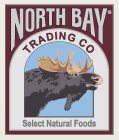 A variety of natural and organic dried and freeze-dried foods for everyday eating and emergency storage. Wild rice, beans, soup mixes, freeze-dried fruits and vegetables.
A variety of natural and organic dried and freeze-dried foods for everyday eating and emergency storage. Wild rice, beans, soup mixes, freeze-dried fruits and vegetables.
Earthsake
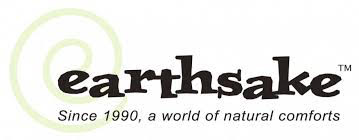 The very first retailer of natural fiber organic mattresses and bedding – made & grown in the USA. Since 1990, they have offered innerspring mattresses handcrafted from local PureGrow wool and organic cotton inside soft organic covers, along with all natural bedframes and organic bed linens. PureGrow wool fill is naturally fire retardant – so Earthsake Organic Mattresses and bedding do not contain chemical fire-retardants. In addition to their organic cotton mattresses, they also have natural latex mattresses and vegan mattresses made from 100% hemp . “Our PureGrow wool is locally and organically farmed in Sonoma County, Northern California from free and “happy” sheep.”
The very first retailer of natural fiber organic mattresses and bedding – made & grown in the USA. Since 1990, they have offered innerspring mattresses handcrafted from local PureGrow wool and organic cotton inside soft organic covers, along with all natural bedframes and organic bed linens. PureGrow wool fill is naturally fire retardant – so Earthsake Organic Mattresses and bedding do not contain chemical fire-retardants. In addition to their organic cotton mattresses, they also have natural latex mattresses and vegan mattresses made from 100% hemp . “Our PureGrow wool is locally and organically farmed in Sonoma County, Northern California from free and “happy” sheep.”
KD Frames
 Unfinished platform beds and futon sofa frames crafted from Tulip Poplar. “All of our frames are made of kiln dried Tulip Poplar hardwood grown in responsibly managed Virginia forests. We do not apply chemicals of any kind in our factory, and the wood is smooth, sanded, and unfinished. KD Frames has been in business since 1987.” I saw one of these frame in a local store and it was very solid and had excellent craftsmanship.
Unfinished platform beds and futon sofa frames crafted from Tulip Poplar. “All of our frames are made of kiln dried Tulip Poplar hardwood grown in responsibly managed Virginia forests. We do not apply chemicals of any kind in our factory, and the wood is smooth, sanded, and unfinished. KD Frames has been in business since 1987.” I saw one of these frame in a local store and it was very solid and had excellent craftsmanship.
Mountain Valley Growers
 A good selection of USDA certified organic herb, vegetable, and perennial seedling plants, grown in the Central Valley of California. Available in 3-inch potted plants and 128-plug trays. You’ll find both common and unusual plants here, including sweet stevia.
A good selection of USDA certified organic herb, vegetable, and perennial seedling plants, grown in the Central Valley of California. Available in 3-inch potted plants and 128-plug trays. You’ll find both common and unusual plants here, including sweet stevia.
Chattanooga Butter Co.
 Grassfed real cream butter mixed with coconut oil—plain and flavored (honey and cinnamon, roasted garlic, brandy soaked Bordeaux cherry…) “Our cream comes from grass fed cows, making the saturated fats pure and nutrient-rich…We use only extra virgin, refined and filtered coconut oil which is neutral in taste…Since our butters are 100% natural and our fruits & spices are organic, they are free of any industrialized toxins common to processed foods…We source many ingredients for our various spreads from local or neighboring state farms when possible. They are grown and harvested the old fashioned way, from nearby farms, to our kitchen, to your family dinner table!” Unrefined sweeteners.
Grassfed real cream butter mixed with coconut oil—plain and flavored (honey and cinnamon, roasted garlic, brandy soaked Bordeaux cherry…) “Our cream comes from grass fed cows, making the saturated fats pure and nutrient-rich…We use only extra virgin, refined and filtered coconut oil which is neutral in taste…Since our butters are 100% natural and our fruits & spices are organic, they are free of any industrialized toxins common to processed foods…We source many ingredients for our various spreads from local or neighboring state farms when possible. They are grown and harvested the old fashioned way, from nearby farms, to our kitchen, to your family dinner table!” Unrefined sweeteners.
Glyphosate in Ice Cream?
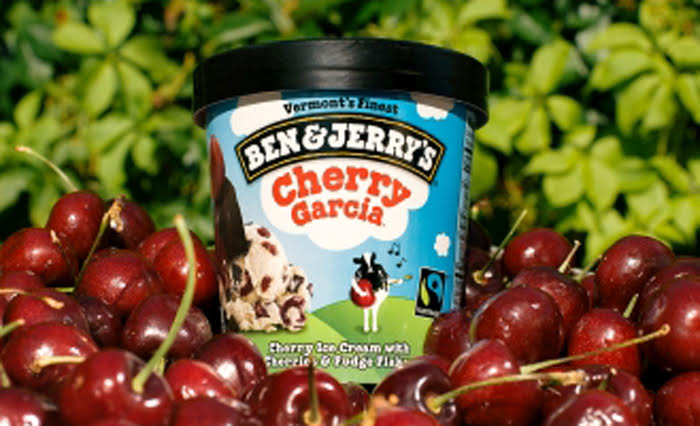
Cherry Garcia tested zero for glyphosate
Last week an The New York Times published an interesting article about glyphosate in ice cream. Specifically Ben & Jerry’s in the title, but others as well.
So should we all stop eating ice cream?
Here are the important points for consumers who want to eat ice cream.
 The Organic Consumers Association tested 11 samples of Ben & Jerry’s Ice Cream and found trace amounts of glyphosate in 10 of the samples. I was happy to see that my favorite flavor—Cherry Garcia (which I haven’t eaten in years)—was the one flavor that had zero.
The Organic Consumers Association tested 11 samples of Ben & Jerry’s Ice Cream and found trace amounts of glyphosate in 10 of the samples. I was happy to see that my favorite flavor—Cherry Garcia (which I haven’t eaten in years)—was the one flavor that had zero.
So why do the others have glyphosate? The conclusion was that the glyphosate isn’t from the ice cream, but from the flavor additions. You can see in the chart that there is a wide difference in the amount of glyphosate between flavors.
The Organic Consumers Association also tested four brands of organic vanilla ice cream: Alden’s, Three Twins, Julie’s and the Whole Foods Market brand 365. The lab found trace amounts of glyphosate comparable to Ben & Jerry’s Chocolate Chip Cookie Dough in the Whole Foods 365 sample, but none in the others.
So some brands of organic vanilla test the same as Ben & Jerry’s Cherry Garcia.
I rarely eat ice cream because I try to keep my intake of sugar and fat down and ice cream is loaded with both.
Regardless of tests, logic tells me that organic ice cream is going to contain fewer toxic chemicals overall, and it’s a better choice.
When I eat ice cream (rarely) I make my own at home. That way I can choose organic cream, my preferred organic sweetener, and any other ingredients.
THE NEW YORK TIMES: Traces of Controversial Herbicide are Found in Ben & Jerry’s Ice Cream
POM Plastic (polyoxymethylene )

Question from Mai
Hi Debra,
I was wondering if you have any information about POM plastic (polyoxymethylene )? Most of the food processors I’ve found that come with a glass work bowl have POM plastic on the blade unit.
Debra’s Answer
Here’s the Product Safety Sheet for polyoxymethylene
It’s a plastic of the thermoplastic type. It is sold as a small plastic pellet which is then melted at high temperatures to then be molded into plastic parts.
“When this product is heated to high temperatures in order to produce a molded or extruded part, small amounts of formaldehyde gas is given off. The release of formaldehyde during the manufacture of parts made from Ultraform® POM is the primary concern…”
“Plastic parts made from Ultraform® POM…do not present a risk from exposure to formaldehyde, since the parts are no longer heated to high enough temperatures to produce formaldehyde.”
I’m not concerned about this on the blade unit of a food processor.
Sperm counts in men from industrialized countries have dropped by more than 50 percent in less than 40 years

Could exposure to chemicals be impairing our ability reproduce as a species
Researchers from a study done at Hebrew University-Hadassah Braun School of Public Health and Community Medicine in Jerusalem announced last week that sperm counts in men from America, Europe, Australia and New Zealand showed a 52.4 percent decline in sperm concentration and a 59.3 percent decline in total sperm count among North American, European, Australian and New Zealand men. And the rate of decline is not slowing.
This analysis did not look into reasons for the decline, but noted that falling sperm counts have previously been linked to various factors such as exposure to certain chemicals and pesticides, smoking, stress and obesity.
No significant decline was seen in South America, Asia and Africa, but researchers noted that far fewer studies have been done in these regions.
REUTERS: Sperm Count Dropping in Western World
THE NEW YORK TIMES: Sperm Count in Western Men Has Dropped Over 50 Percent Since 1973, Paper Finds
Toxic Free Watch Strap?
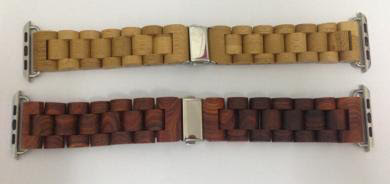
Wooden Watch Strap
Question from Jonathan
Hi Debra,
I’ve just discovered your page. It is WONDERFUL. My wife and I are attempting to slowly but surely reduce our toxic levels at home (particularly plastics!) for ourselves and our children, and your site is going to help us a lot for sure!
My latest mission is watch straps! I’ve come to realise that it is not so easy to find something toxin free! And if a watch wearer, we are in contact with the strap ALL day!
I guess that’s where the problem originates! They are on all day, so have to resist wear and tear, sweat and other liquids, sun and heat. So they mostly are build tough, and that means:
Plastic straps: are… plastic. And the non-solid “woven fabric” straps like NATO straps are often either nylon or Cordura based or some other plastic.
Leather. But leather straps will all surely be chromium based leather. Rawhide wouldn’t be flexible enough etc. And leather is just awful in so many ways. Btw you may have already seen it but here’s a great post on leather: How Leather Is Slowly Killing the People and Places That Make It
So I searched for “vegan leather” straps. These seem to be pure plastic or PU coated leather. Sigh…
Then I heard about cork watch straps! Made from real cork! I don’t know much about cork. But I don’t trust that cork could withstand much movement or wear, could it? So I would bet the cork is bound with melamine or PU or something to stop it falling apart. Particularly cus watch straps are so thin! Also, I have no idea about the ethics or processes of cork manufacturing.
Any thoughts? Could this be the answer?
What about canvas? What is canvas? I see some canvas straps that are backed with leather anyhow. But a pure canvas strap? Is that possible? I’m thinking about canvas like what paintings are on. They’re not plastic these days surely? Linen or something?
Any other ideas? The more I look, the less hope I find! Product listings are SO vague and retailers and manufacturers alike! I need help Debra! Help!
Debra’s Answer
I stopped wearing a watch many years ago for all the reasons you state.
But I still needed to know what time it was.
There are watches you can carry without a strap, such as watches on necklaces, pocket watches, travel clocks you can put in a pocket or purse and probably more I’m not aware of.
Today the time is on your cell phone (if you carry one) so there’s not much need for a watch.
You didn’t mention metal watch bands, but they often cause rashes.
Readers, any success with finding a nontoxic watch band?
The Short List of Rules for Choosing Products

I can’t tell you who wrote this because the person who sent it to me didn’t know, but I felt it was worth passing along.
Inspired by Michael Pollan’s Food Rules, here is a short list of guidelines for choosing products—any product.
I couldn’t have said it better myself.
ELEVEN RULES FOR CHOOSING PRODUCTS
- If it is cheap, it probably has hidden costs.
- If it starts as a toxic input (like ethylene glycol in the manufacture of polyester), you probably don’t want it in your house or office.
- Use materials made from substances you can imagine in their raw or natural state.
- Use carbohydrate-based materials (i.e., natural fibers) when you can.
- Just because almost anything can kill you doesn’t mean fabrics should.
- Pay more, use less.
- Consult your nose – if it stinks, don’t use it.
- If they can’t tell you what’s in it, you probably don’t want to live with it. (Note: this is not just the fibers used to weave the fabric – did the processing use specific chemicals, like heavy metals in the dyestuff, or are there any finishes on the fabric?)
- Avoid materials that are pretending to be something they are not (like polyester mimicking linen).
- Question materials that make health claims.
- Regard space-age materials with skepticism.
The Clean Bedroom
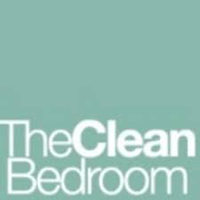 Everything you need to create a toxic-free bedroom all in one place. Organic mattresses and bedding, organic crib mattresses and nursery bedding, and bedroom furniture–nontoxic, chemical-free and hypoallergenic. They provide personalized service to fit the health and comfort needs of each customer. Articles and blog posts provide helpful information for allergy sufferers and patients with multiple chemical sensitivities, and product comparisons assist customers in making the right purchase decisions.
Everything you need to create a toxic-free bedroom all in one place. Organic mattresses and bedding, organic crib mattresses and nursery bedding, and bedroom furniture–nontoxic, chemical-free and hypoallergenic. They provide personalized service to fit the health and comfort needs of each customer. Articles and blog posts provide helpful information for allergy sufferers and patients with multiple chemical sensitivities, and product comparisons assist customers in making the right purchase decisions.
Marketplace: Handwork of India
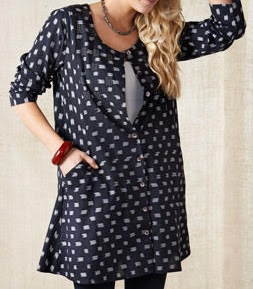 Really beautiful, colorful clothing made of cotton and other natural fibers in India. All women’s sizes, including plus sizes. “MarketPlace: Handwork of India is a pioneering nonprofit that empowers women in India to break the cycle of poverty, as they become leaders in their work, their homes, and their neighborhoods, and effect lasting change in their communities. In MarketPlace’s comprehensive and creative organization, economic development is only the first step for these brave and resourceful women. We work with over 400 artisans who are organized into 11 independent co-operatives that produce high-quality women’s apparel and home decor. They learn skills such as sewing and embroidery, and participate in all aspects of running the cooperatives. In addition, programs offer educational and enrichment opportunities designed to help the artisans overcome personal, cultural and financial obstacles. ”
Really beautiful, colorful clothing made of cotton and other natural fibers in India. All women’s sizes, including plus sizes. “MarketPlace: Handwork of India is a pioneering nonprofit that empowers women in India to break the cycle of poverty, as they become leaders in their work, their homes, and their neighborhoods, and effect lasting change in their communities. In MarketPlace’s comprehensive and creative organization, economic development is only the first step for these brave and resourceful women. We work with over 400 artisans who are organized into 11 independent co-operatives that produce high-quality women’s apparel and home decor. They learn skills such as sewing and embroidery, and participate in all aspects of running the cooperatives. In addition, programs offer educational and enrichment opportunities designed to help the artisans overcome personal, cultural and financial obstacles. ”
On the Plus Side
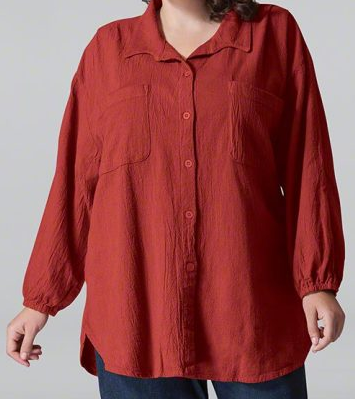 An entire site dedicated to plus sizes for women 1x-8x. “For over 30 years, On The Plus Side has been perfecting the fit and style of our plus size clothing for women. Over 90% of our clothing is made from natural fiber and designed to celebrate your curves.” You’ll need to check fabric content carefully, but I wanted to include this for the plus sizes, which can be difficult to find in natural fibers. While you have to sift through the blends, this Long Sleeve Oversize Shirt in the photo, for example, is 100% cotton and comes in 30 colors sizes 1x-8x. And it’s hand-dyed with eco-friendly dyes. So consider this site to be a treasure hunt.
An entire site dedicated to plus sizes for women 1x-8x. “For over 30 years, On The Plus Side has been perfecting the fit and style of our plus size clothing for women. Over 90% of our clothing is made from natural fiber and designed to celebrate your curves.” You’ll need to check fabric content carefully, but I wanted to include this for the plus sizes, which can be difficult to find in natural fibers. While you have to sift through the blends, this Long Sleeve Oversize Shirt in the photo, for example, is 100% cotton and comes in 30 colors sizes 1x-8x. And it’s hand-dyed with eco-friendly dyes. So consider this site to be a treasure hunt.
Hackwith Design House
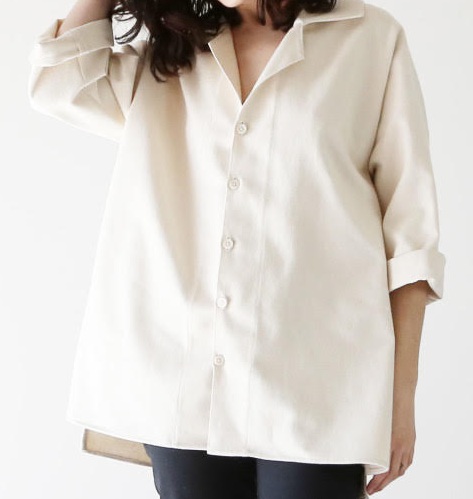 “Simple, beautiful clothing made in America.” All women’s sizes (choose HDH Plus from the Shop menu for plus sizes). Descriptions do not tell fabrics, but here’s why: “We source most of our fabrics from a local, family-owned fabric store that specializes in run-off and second-hand fabrics in order to cut down on waste while also supporting our local economy. As a result, we cannot always know the exact fiber content of the fabrics we buy. We strive to provide our customers with quality fabrics that are sourced in a responsible and environmentally-friendly manner. I can tell you however that any of our pieces listed on our website as being made of Cotton Slub, Cotton Gauze, Cotton Denim, or Hemp Silk and Organic Cotton are 100% natural fibers.” If you’re curious about any one particular piece, feel free to contact them and ask about fiber content.
“Simple, beautiful clothing made in America.” All women’s sizes (choose HDH Plus from the Shop menu for plus sizes). Descriptions do not tell fabrics, but here’s why: “We source most of our fabrics from a local, family-owned fabric store that specializes in run-off and second-hand fabrics in order to cut down on waste while also supporting our local economy. As a result, we cannot always know the exact fiber content of the fabrics we buy. We strive to provide our customers with quality fabrics that are sourced in a responsible and environmentally-friendly manner. I can tell you however that any of our pieces listed on our website as being made of Cotton Slub, Cotton Gauze, Cotton Denim, or Hemp Silk and Organic Cotton are 100% natural fibers.” If you’re curious about any one particular piece, feel free to contact them and ask about fiber content.
Tampon Tribe
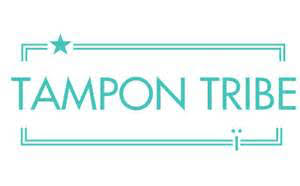 An affordable monthly subscription service for organic tampons, pads, and pantyliners. Toxin-free, plastic-free, chemical-free. Made from 100% certified organic cotton that is strictly monitored and regulated in all stages of production (GOTS: Global Organic Textile Standard, ICEA: European Eco/Bio Standard). Chlorine bleach and dioxin-free. There are no glues, synthetics, perfumes, bleaches or dyes used. Customize your box to get the right mix of pads, tampons, and pantyliners for your body.
An affordable monthly subscription service for organic tampons, pads, and pantyliners. Toxin-free, plastic-free, chemical-free. Made from 100% certified organic cotton that is strictly monitored and regulated in all stages of production (GOTS: Global Organic Textile Standard, ICEA: European Eco/Bio Standard). Chlorine bleach and dioxin-free. There are no glues, synthetics, perfumes, bleaches or dyes used. Customize your box to get the right mix of pads, tampons, and pantyliners for your body.
Bedworks of Maine
 Beds, bedroom, and convertible futon sofa frames made in Maine. “Classic lines, solid construction and gorgeous finishes are the hallmarks of the furniture we make at The BedWorks of Maine. All of our bedroom pieces and bed frames, both traditional and platform bed, as well as our futon frames are crafted out of North American ash, a sustainable and renewable hardwood.” Can be ordered unfinished.
Beds, bedroom, and convertible futon sofa frames made in Maine. “Classic lines, solid construction and gorgeous finishes are the hallmarks of the furniture we make at The BedWorks of Maine. All of our bedroom pieces and bed frames, both traditional and platform bed, as well as our futon frames are crafted out of North American ash, a sustainable and renewable hardwood.” Can be ordered unfinished.
Havelock Wool
 “Farm to walls” building insulation made from sheep’s wool. Made of 100% wool (with a small amount of natural boric acid added as an insect repellant). Their wool is sourced in New Zealand where sheep roam pastoral lands and eat grass in serene settings. It is blended and washed there before being shipped to their manufacturing facility in Nevada where they make both loose-fill and batt form insulation.
“Farm to walls” building insulation made from sheep’s wool. Made of 100% wool (with a small amount of natural boric acid added as an insect repellant). Their wool is sourced in New Zealand where sheep roam pastoral lands and eat grass in serene settings. It is blended and washed there before being shipped to their manufacturing facility in Nevada where they make both loose-fill and batt form insulation.
How Can I Keep My Food Cold?
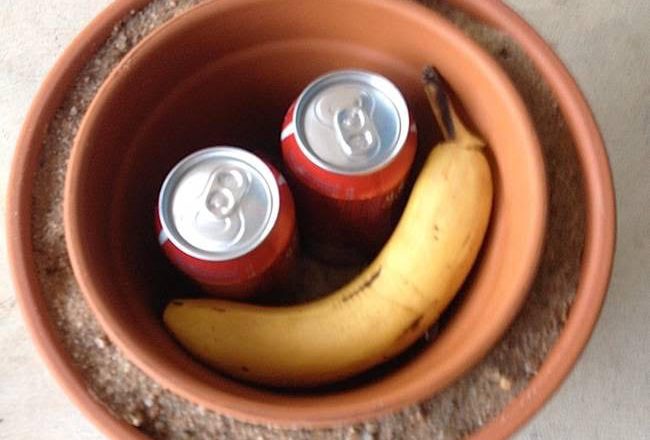
Instructions at Instructables
Question from Holly
Hi Debra,
Thanks so much for helping me become such a conscious consumer. Your work and advice is really appreciated!
I am on the hunt for a great cooler that will keep our stuff cold for a couple of days. After lots of research of the likes of Pelican, Yeti, and Bison, I came to realize that the stuff that keeps the ice frozen for so long is polyurethane foam insulation! This worried me, but THEN I found out that’s what is in our fridges.
Is this safe? The coolers are listed as having polypropylene shells (I am assuming that is the same plastic used for fridges) – does polypropelyne do a good job of containing VOCs within the walls of the cooler or fridge?
Also, Pelican soft coolers are made with double-coated 840D TPU; Yeti soft coolers are made of ColdCell™ foam insulation with EVA foam bottom – what are your thoughts on this regarding being so close to food etc.?
I’d love your input on this because I have done exhaustive research and can’t seem to find out anything!
Thanks.
Debra’s Answer
First of all, polyurethane foam isn’t a problem in coolers and refrigerators because it’s enclosed. As long as it’s sealed up inside something else, the fumes won’t get through.
The polypropylene shell is also fine. Polypropylene is one of the least toxic plastics. It’s used to make food storage containers. So I’m not really worried about that.
Now you asked if polypropylene would block VOCs. Great question. Here’s an interesting paper called Guidance on the Use of Plastic Membranes as VOC Vapor Barriers. But in a cooler you’re talking about a thick piece of plastic, not a membrane. That think piece would certainly block the VOCs.
Again, with refrigerators, the plastic would be thick enough to block VOCs. Here are the plastics used on the inside of your refrigerator:
Tough, impact- and corrosion-resistant plastics such as ABS, high impact polystyrene and polypropylene are used to create molded interior panels and door liners that help maximize usable space. Molded-in color means there is no paint or coating to peel over time. These panels are also moisture resistant, which helps them repel spills and stains. For clear drawers and compartment doors, polystyrene, polycarbonate and acrylic are the resins of choice, with durable polycarbonate often chosen for frequently used doors and compartments.
Thanks for asking this question. I didn’t know polycarbonate was used to make those crisper drawers. That’s the plastic with BPA.
TPU and EVA are both pretty nontoxic plastics. I’m not concerned about them.
As long and we’re on the subject, here are some links for insulating bags.
Here is a link to one similar to one I use and love. It has no outgassing. It’s a foil-lined cloth bag I purchased at my local natural food store.
www.ebay.com/itm/Insulated-Reusable-Grocery-Bag-Our-best-seller-2-pack-BLUE-CMW-/112471869875
You could use several inside each other for more insulation.
Also look at this cooler bag:
www.debralynndadd.com/debras-list/pack-cooler-bags
And here’s an article about how to keep your food cool without electricity:
www.treehugger.com/kitchen-design/fifty-buck-fridge-keeps-your-food-cool-without-electricity.html
Readers, what do you use to keep your food cold?
Affordable Organic Clothing for Plus Size Women

Oversized Linen Tunic Dress
Question from Marcella
Hi Debra,
I need your assistance to find affordable organic toxic free clothing but for Plus Size Women. If possible, I prefer a local store in my area where I can go to try them on. I live in Carson, CA in the Los Angeles County near San Pedro which is the Port of Los Angeles. If not, then online is the next best thing. In general, I wear size 1X in tops and 14W or 16W for pants/shorts.
I just want to be able to find clothing that is stylish yet within my budget so I do not break my bank account. I am not looking for clothes that makes one look like a hoochie mama or an old lady before my time. When it comes to clothes, I am very conservative yet fashionable.
I do not know if you have seen/read the link below on the internet. This lady hit it right on the nose when it came to shopping for organic plus size clothing for women. She understands my frustration completely.
www.greenandgorgeous.net/2012/08/07/wheres-all-the-plus-sized-eco-fashion
Debra’s Answer
As a plus size woman myself, I agree this blogger has hit it right on the nose. And I found another such post at
www.ecocult.com/sustainable-ethical-plus-sized-clothing
I am fortunate that my work-at-home lifestyle allows me to wear cotton tank tops and cotton capri pants most of the year here in Florida. I’ll admit that I have a drawer of neutral color pants and a drawer of colorful tank tops and my fashion choice go as far as pulling a pair of pants out of one drawer and a top out of the other and I’m dressed for the day.
But I do love fashion and used to be quite fashionable before I gave up all the synthetic fabrics to go natural.
I’ve been able to find cotton clothing in my size, and linen clothing too, just at department stores and even at places like TJMaxx and Ross Dress for Less. But it’s getting more and more difficult. I’m thinking about making my clothes or hiring someone to make them or even designing and selling my own line of clothing.
The blog mentioned by the reader lists some websites that have plus clothing. I went through the list and unfortunately I could only agree with three: Eileen Fisher ($$$ and sold only at fine department stores), Rawganique (already on Debra’s List) and Gaia Conceptions (which I’m adding to Debra’s List right now).
Check out the Clothing page on Debra’s List. You can search the page for “plus” and find the listings that have plus sizes. I’ve added a few new post for plus size natural fiber clothing that I found today.
And please let me know any plus size websites you find that you like so I can add them.
Just a comment…as I am looking though a number of websites on these “natural fiber plus size” lists, I’m seeing that what they think are natural fibers and I think are natural fibers are two different things. I think natural fibers are cotton, linen, silk, wool and other “whole” fibers. They think natural fibers are tercel, rayon, and other manufacurered items, or natural fibers mixed with spandex, polyester and other synthetics. So be sure to find the actual fabric content and check it out. Don’t assume “natural” is actually natural on clothing sites.
Hemp Beds?
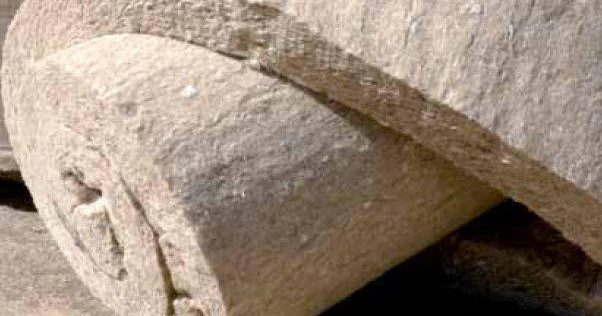
Batting made from hemp
Question from Therese
Hi Debra,
Super big thanks for all your good, thorough research and reporting.
Do you have any info about hemp beds? Conventionally made beds with foam give me headaches and I’m very sensitive/allergic to organic cotton fibers. (skin was on fire after lying down on organic cotton beds in showroom)
My instincts are telling me hemp could be a good option but I need good info in order to proceed.
Thank you!
Debra’s Answer
Like this? www.earthsake.com/store/HempMattress.html
100% Hemp inside and out.
Need Wood Ceiling Fan Blades

Question from Marcia
Hi Debra,
I am living with three chronic illneses. One being severe scoliosis and it’s hard to breathe. Must have real wooden blades. Please help find economic one.
Thank you.
Debra’s Answer
Readers, do any of you know of actual wood blades for ceiling fans?
All the “wood” blades I found were fake.
Marcia if you can’t find them ready made, ask a handyman to make some for you. That shouldn’t be expensive.
Green Building Supply
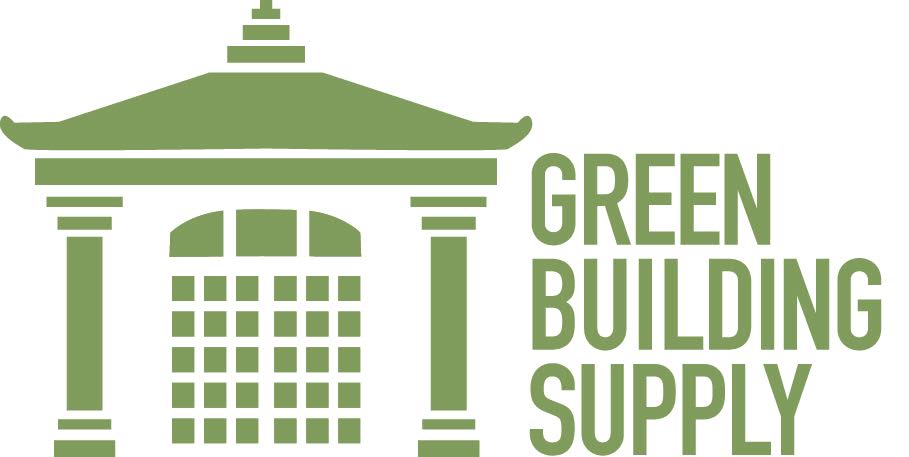 Natural and nontoxic building materials sold by a knowledgeable staff with almost two decades of experience. All products meet the following criteria: 1) Non-toxic and safe 2) Renewable, recycled, or upcycled 3) Energy efficient and Energy Star compliant 4) Meet or exceed US or European environmental standards 5) Good reputation in the industry 6) Personally tested by our company. Descriptions are exceptional, there are MSDS sheets on the contents of most products, and guidelines.
Natural and nontoxic building materials sold by a knowledgeable staff with almost two decades of experience. All products meet the following criteria: 1) Non-toxic and safe 2) Renewable, recycled, or upcycled 3) Energy efficient and Energy Star compliant 4) Meet or exceed US or European environmental standards 5) Good reputation in the industry 6) Personally tested by our company. Descriptions are exceptional, there are MSDS sheets on the contents of most products, and guidelines.
 |
Listen to my interview with Joel Hirshberg, Co-founder and President of Green Building Supply |
Green Depot
One of the internet’s most complete resources for green home furnishings that are healthy and resource efficient. Their product list includes recycled-glass tiles, cork flooring, natural linoleum, hardwood flooring, natural fiber and recycled carpeting and carpet pads, countertops, cabinets, paints and primers, wood finishes, strippers, wallcoverings, sealers, and more. In addition to their products, they also have on-line buying guides to help you choose which of their products is right for you. And if they don’t have what you are looking for, they promise to help you find it.
Amicus Green Building Center
"A 'one stop shop' for all your green building needs." No-VOC paints and stains, natural and FSC-certified flooring, modular and natural carpets, recycled countertops, sinks and fixtures made from recycled metals, cabinets, tiles, and more.
Swurfer
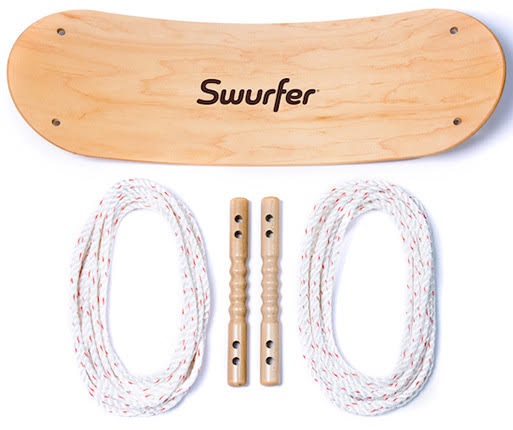 The classic swing redesigned into a wooden “swingboard” with a unique curved shape, on which you can sit or stand, “providing more moves, more range of motion, and more fun as you glide through the air.” Made of 100% hard rock maple, each board is one of a kind, and 100% proudly made in the USA. It’s a great way to get exercise outdoors.
The classic swing redesigned into a wooden “swingboard” with a unique curved shape, on which you can sit or stand, “providing more moves, more range of motion, and more fun as you glide through the air.” Made of 100% hard rock maple, each board is one of a kind, and 100% proudly made in the USA. It’s a great way to get exercise outdoors.
Eco Sheep Bicycle Chain Lubricant
 “The happiest and most environmentally certified bike lubes in the world…Every year bike owners apply nearly 6.3 million gallons of harmful petroleum to their bicycles to lubricate their chain and gears. This petroleum has nowhere to go, so it winds up in our soil and waterways, polluting our environment and making a green activity not so green anymore. Eco Sheep® solves this problem through our revolutionary, patent-pendingpetroleum-free bicycle chain lubricants. Our lubes beat petroleum and are non-toxic, biodegradable, and sustainable. You won’t find dangerous petroleum, PTFE particles, or paraffin in any of our products.”
“The happiest and most environmentally certified bike lubes in the world…Every year bike owners apply nearly 6.3 million gallons of harmful petroleum to their bicycles to lubricate their chain and gears. This petroleum has nowhere to go, so it winds up in our soil and waterways, polluting our environment and making a green activity not so green anymore. Eco Sheep® solves this problem through our revolutionary, patent-pendingpetroleum-free bicycle chain lubricants. Our lubes beat petroleum and are non-toxic, biodegradable, and sustainable. You won’t find dangerous petroleum, PTFE particles, or paraffin in any of our products.”
Brazos Walking Sticks
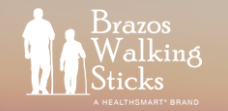 Handmade hiking sticks, hiking poles and canes, beautifully crafted by local artisans in Central Texas. Designed to increase your balance and mobility. Made from native and exotic woods, including sassafras, hickory, sweet gum, iron bamboo, and many others. Can be personalized with laser engraving or the addition of accessories such as strap, whistle, compass and others.
Handmade hiking sticks, hiking poles and canes, beautifully crafted by local artisans in Central Texas. Designed to increase your balance and mobility. Made from native and exotic woods, including sassafras, hickory, sweet gum, iron bamboo, and many others. Can be personalized with laser engraving or the addition of accessories such as strap, whistle, compass and others.
Whistle Creek
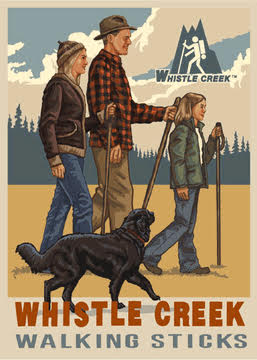 “Whistle Creek is the nation’s largest manufacturer of rustic walking and hiking sticks. They’re warm, full of character and 100% US Made. You’ll be proud to own one – and we GUARANTEE you’ll get at least one compliment a month, or we’ll buy it back!” Accessories include compass, whistle, bear bell, leather straps, tree seeds, and more.
“Whistle Creek is the nation’s largest manufacturer of rustic walking and hiking sticks. They’re warm, full of character and 100% US Made. You’ll be proud to own one – and we GUARANTEE you’ll get at least one compliment a month, or we’ll buy it back!” Accessories include compass, whistle, bear bell, leather straps, tree seeds, and more.
Wood Tree Swings
 Wood-and-rope tree swings: bench swings, kid’s seat swings, disc swings, made of various types of woods and finishes.
Wood-and-rope tree swings: bench swings, kid’s seat swings, disc swings, made of various types of woods and finishes.
Fluidstance
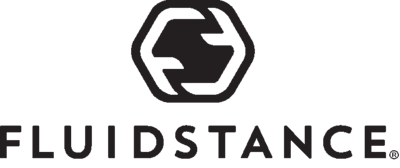 Designed by the Mayo Clinic, this tool gives your body constant motion while you are simply standing. It increases energy expenditure, raises heart rate, and increases range of motion. Perfect for standing desks, washing dishes, watching TV, anytime you are standing, or can stand instead of sit. We’ve gone the extra mile to use eco-conscious materials in our fabrication process. The Original’s top deck is made of bamboo, one of the world’s most abundant and renewable resources; our finish is GREEN GUARD certified to meet rigorous standards for low emissions; our sand-cast bases are produced by hand in zero-water process in a solar-powered facility. We’ve also chosen to finish our bases via powder-coating, as it has almost zero emissions compared to painting and anodizing. It’s all part of our bigger mission to be responsible borrowers from Mother Earth, for team members and customers alike.
Designed by the Mayo Clinic, this tool gives your body constant motion while you are simply standing. It increases energy expenditure, raises heart rate, and increases range of motion. Perfect for standing desks, washing dishes, watching TV, anytime you are standing, or can stand instead of sit. We’ve gone the extra mile to use eco-conscious materials in our fabrication process. The Original’s top deck is made of bamboo, one of the world’s most abundant and renewable resources; our finish is GREEN GUARD certified to meet rigorous standards for low emissions; our sand-cast bases are produced by hand in zero-water process in a solar-powered facility. We’ve also chosen to finish our bases via powder-coating, as it has almost zero emissions compared to painting and anodizing. It’s all part of our bigger mission to be responsible borrowers from Mother Earth, for team members and customers alike.
Monkii Bars
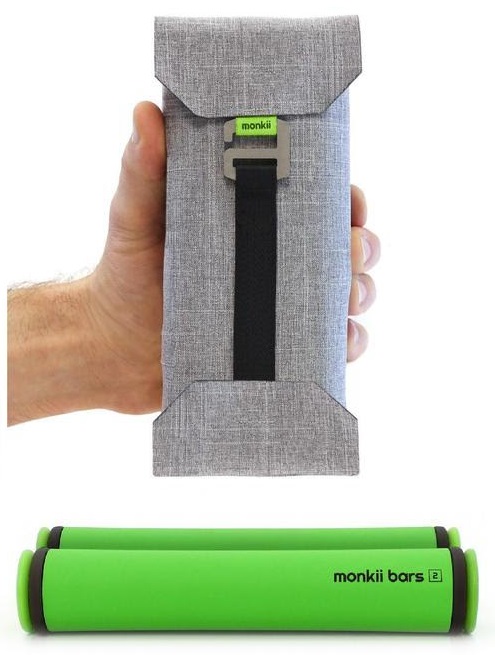 These clever bars let you”take the gym anywhere.” Designed for people “who want awesome workouts without being stuck in a regular gym,” these bars are made for total-body workouts while traveling, at home, or even outside. Made from aerospace-grade aluminum and abrasion resistant nylon, with a 2-layer ultra durable weather-resistant powder coat. Handcrafted in the USA.
These clever bars let you”take the gym anywhere.” Designed for people “who want awesome workouts without being stuck in a regular gym,” these bars are made for total-body workouts while traveling, at home, or even outside. Made from aerospace-grade aluminum and abrasion resistant nylon, with a 2-layer ultra durable weather-resistant powder coat. Handcrafted in the USA.
Phthalates in Mac and Cheese Made With Powdered Cheese Higher Than Natural Cheese

This is exactly why you need to eat real fresh food, from the farm or garden to your plate.
Phthalates are potentially harmful chemicals. Three phthalates (DEHP, DBP, and BBP) were banned from children’s products in 2008. The most recent 2015 phthalate regulations call for banning additional phthalates (DINP, DIBP, DnPP, DnHP and DCHP).
In 2014 a report to the Consumer Product Safety Commission concluded that food—not plastic children’s products—is the primary exposure to plastics.
Now a new study has found phthalates in all but one of 30 packaged mac and cheese mixes made with powdered cheese.
Most relevant compounds within the sample set were DEP, DiBP**, DnBP, and DEHP*, with a prevalence ranging from 63 to 92 %. DAP and DCHP were never found above the LOQ, and DMP only in 2 samples. Prevalence of DnHP, BBP*, DNOP, DiDP/DPHP and DiNP** ranged between 12 and 22 %.
* banned from children’s products in 2008
** recommended for ban in 2015
The major findings are:
- Phthalates were detected in nearly every cheese product tested (29 of 30 varieties). The testing identified ten different phthalates in all, with up to six in a single product;
- Average phthalate levels were more than four times higher in macaroni and cheese powder samples than in hard blocks & other natural cheese, in fat of products tested;
- DEHP, the most widely restricted phthalate, was found more often and at a much higher average concentration than any other phthalate, among all the cheese products tested.
To me, this clearly shows that processing adds toxic chemicals to foods. And the more highly processes foods contain more toxic chemicals.
This applies to organic foods too. They didn’t give the brands tested, but it doesn’t matter if you buy organic mac and cheese with powdered cheese in a box. It’s the processing of the cheese that adds the phthalates.
NEW YORK TIMES: The Chemicals in Your Mac and Cheese
KLEAN UP KRAFT: Testing Finds Industrial Chemical Phthalates in Cheese
“Vast Amounts” of Toxic Mercury Accumulating in Arctic Tundra

Scientists have long been reporting high levels of mercury pollution in the Arctic.
But now a new study reports identifies gaseous mercury in the air as the major source. It gathers in the Arctic tundra, then moves into the soil, and from there into waterways.
If so much mercury is moving from industrial nations to uninhabited arctic areas, this news begs the question: how much mercury are WE being exposed to from the environment on a daily basis?
ENVIRONMENTAL NEW NETWORK: Study Finds Toxic Mercury is Accumulating in the Arctic Tundra
UNITED STATES ENVIRONMENTAL PROTECTION AGENCY: Mercury Emissions: Worldwide Emissions
MOMS CLEAN AIR FORCE: How Mercury Poisoning Works
UNITED STATES ENVIRONMENTAL PROTECTION AGENCY: Mercury and Air Toxics Standards (MATS)
Studiopatró
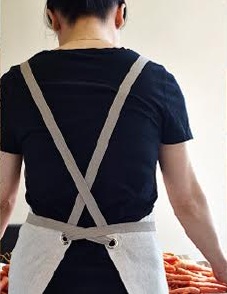 Simple, colorful kitchen linens, “big + handy, elegant + everyday, fresh + modern.” Aprons, towels, napkins. “Our linen is the finest medium-weight linen available, and is naturally sustainable and luxurious. We test for absorbency and sturdiness, and these aprons and towels work beautifully. They remain strong and actually get softer with lots of use. Each tea towel is handprinted one-by-one, using ecologically friendly water-based inks.”
Simple, colorful kitchen linens, “big + handy, elegant + everyday, fresh + modern.” Aprons, towels, napkins. “Our linen is the finest medium-weight linen available, and is naturally sustainable and luxurious. We test for absorbency and sturdiness, and these aprons and towels work beautifully. They remain strong and actually get softer with lots of use. Each tea towel is handprinted one-by-one, using ecologically friendly water-based inks.”
Soft Star Shoes
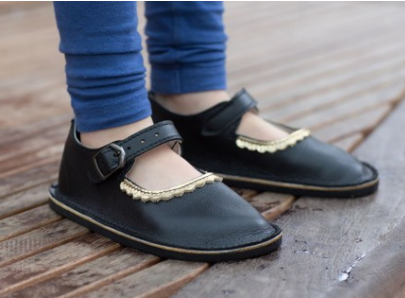 Handmade shoes for infants, kids and adults since 1984. And because each pair is handmade, you can customize your shoes with choices of colors. “We make minimal shoes for happy, healthy feet! Every one of our shoes is handcrafted at our Oregon, USA workshop… We are careful to source non-toxic materials for our shoes, including leather colored with food-grade dye and non-toxic adhesives… we use only leathers which meet high safety standards both for our customers, and for the environment. As our little ones like to occasionally chew on their shoes, it is important to us they are as chemical-free as possible. Many shoes today (99.9%) are imported from countries using formaldehyde tanning methods. Not only is this chemical a potential irritant to your skin and absorbable transdermally, but it poisons ground water downstream from tanneries, and causes well-documented health issues with tannery employees. Almost all or our leather is sourced from USA tanneries to ensure that strict regulations are adhered to. When the leather is not available from USA tanneries, it is sometimes sourced from approved tanneries in Italy, Brazil, South Korea or Germany which meet labor and environmental standards set by our supplier. We are proud to also offer Ecopell vegetable tanned leather from Germany, which we import due to their extremely high standards for quality and sustainable practices, arguably the best in the world.” Soles are made out of natural rubber, durable suede, or a tough leather. Their shop is run from 100% solar or wind energy.
Handmade shoes for infants, kids and adults since 1984. And because each pair is handmade, you can customize your shoes with choices of colors. “We make minimal shoes for happy, healthy feet! Every one of our shoes is handcrafted at our Oregon, USA workshop… We are careful to source non-toxic materials for our shoes, including leather colored with food-grade dye and non-toxic adhesives… we use only leathers which meet high safety standards both for our customers, and for the environment. As our little ones like to occasionally chew on their shoes, it is important to us they are as chemical-free as possible. Many shoes today (99.9%) are imported from countries using formaldehyde tanning methods. Not only is this chemical a potential irritant to your skin and absorbable transdermally, but it poisons ground water downstream from tanneries, and causes well-documented health issues with tannery employees. Almost all or our leather is sourced from USA tanneries to ensure that strict regulations are adhered to. When the leather is not available from USA tanneries, it is sometimes sourced from approved tanneries in Italy, Brazil, South Korea or Germany which meet labor and environmental standards set by our supplier. We are proud to also offer Ecopell vegetable tanned leather from Germany, which we import due to their extremely high standards for quality and sustainable practices, arguably the best in the world.” Soles are made out of natural rubber, durable suede, or a tough leather. Their shop is run from 100% solar or wind energy.
Oralba
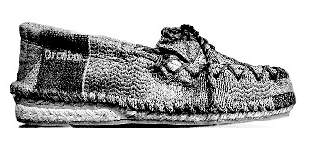 One-of-a-kind shoes, handcrafted using all natural materials: Jute fibers, 100% cotton fabrics, and handmade natural cotton cording. “Oralba’s Shoes products are entirely hand made with bio-friendly, recyclable materials, featuring comfort and unique classic designs and styles that never go out of style. The simplicity and versatility of our shoes make them unique in the market. The designer hand selects the most exquisite fabrics to use as uppers of the shoes to create unique handmade footwear. Each pair is hand-crafted and features a classic style that is easy to match with varying fashions.”
One-of-a-kind shoes, handcrafted using all natural materials: Jute fibers, 100% cotton fabrics, and handmade natural cotton cording. “Oralba’s Shoes products are entirely hand made with bio-friendly, recyclable materials, featuring comfort and unique classic designs and styles that never go out of style. The simplicity and versatility of our shoes make them unique in the market. The designer hand selects the most exquisite fabrics to use as uppers of the shoes to create unique handmade footwear. Each pair is hand-crafted and features a classic style that is easy to match with varying fashions.”
MiCacao
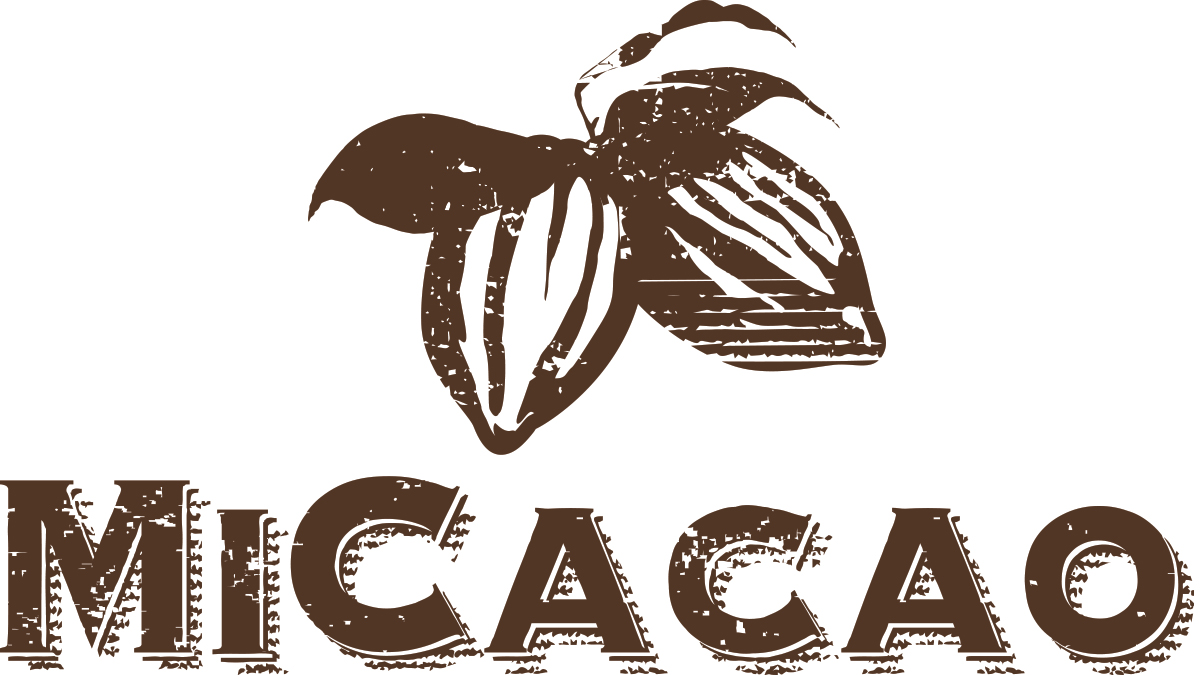 Cacao tea. “Cacao tea is produced from the shell, or husk, of the cacao bean, which is often discarded in the process of making chocolate. During this process, cacao beans are harvested, fermented, and dried. The shells are then removed from the beans, leaving the remaining nibs to continue forward in the process. Although only a byproduct of chocolate making, the shells are rich in antioxidants, vitamins, and minerals and serve as the foundation for MiCacao.”
Cacao tea. “Cacao tea is produced from the shell, or husk, of the cacao bean, which is often discarded in the process of making chocolate. During this process, cacao beans are harvested, fermented, and dried. The shells are then removed from the beans, leaving the remaining nibs to continue forward in the process. Although only a byproduct of chocolate making, the shells are rich in antioxidants, vitamins, and minerals and serve as the foundation for MiCacao.”
Hunker Bag Co.
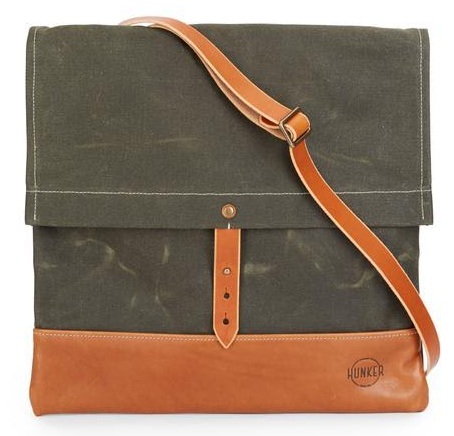 Handmade bags designed from locally and ethically sourced, high quality, Horween leather, TexWax waxed canvas and all brass hardware. Men’s travel bags, briefcases, clutches, everyday bags, totes, messenger bags, wallets, weekend bags and backpacks for both men and women. “Hunker Bag Co. bags are made in small batches and are luxurious, functional, unique and trendy. In addition, they are designed to last a lifetime and to grow in character and meaning for their owner over the years. Ever-stylish, when you purchase a Hunker Bag Co. product, you can be assured of a bag that will be able to withstand the rigors of daily use.”
Handmade bags designed from locally and ethically sourced, high quality, Horween leather, TexWax waxed canvas and all brass hardware. Men’s travel bags, briefcases, clutches, everyday bags, totes, messenger bags, wallets, weekend bags and backpacks for both men and women. “Hunker Bag Co. bags are made in small batches and are luxurious, functional, unique and trendy. In addition, they are designed to last a lifetime and to grow in character and meaning for their owner over the years. Ever-stylish, when you purchase a Hunker Bag Co. product, you can be assured of a bag that will be able to withstand the rigors of daily use.”
TomatoFest
 Select from 600 varieties of heirloom tomatoes. I used to grow heirloom tomatoes when I lived in California and they are amazing. ” the best tasting, heirloom tomato seeds from around the world. We’ve collected what are considered to be the most valued heirloom tomato seeds from many different regions and family farms, to grow and harvest these tomato seeds to share them with you. All TomatoFest heirloom tomato seeds are CERTIFIED ORGANIC by CCOF”
Select from 600 varieties of heirloom tomatoes. I used to grow heirloom tomatoes when I lived in California and they are amazing. ” the best tasting, heirloom tomato seeds from around the world. We’ve collected what are considered to be the most valued heirloom tomato seeds from many different regions and family farms, to grow and harvest these tomato seeds to share them with you. All TomatoFest heirloom tomato seeds are CERTIFIED ORGANIC by CCOF”
Get Out and Sweat This Summer—It Will Remove Toxics From Your Body

GreenMedInfo has been tracking studies that show the effectiveness of sweating to remove toxic chemicals from the body.
Ordinarily you would need to sit in a sauna to sweat, but it’s summer. Go outside. Sweat is sweat. It’s good for you.
GREEN MED INFO: 4 Reasons to Break a Sweat (Solvents, Phthalates, Metals, BPA
GREEN MED INFO: Research Confirms Sweating Detoxifies Dangerous Metals, Petrochemicals] (Metals)
GREEN MED INFO: Confirmed: Sweating Removes Deadly Chemicals From The Body (Flame Retardants)
Wool for Building Insulation

Question from Joanna
Hi Debra,
I’m building an addition to my home and I’m looking for the safest insulation.
I found this insulation that is basically sheep’s wool.
What do you think of this?
Debra’s Answer
I love it!
I love wool anything.
About twenty years ago I was remodeling the kitchen of my little-cabi- in-the-woods in Northern California and when I pulled the interior walls off, it was full of newspaper from 1930!
I needed something for insulation and I thought of sheep’s wool.
I just drove up to Shepherd’s Dream (which at the time was about an hour’s drive north of where I lived) and got the same organic wool that was stuffed in my mattress. It was perfect. And it just felt good to know I had wool in my walls. Like my house was cuddling me and keeping me warm.
This wool insulation looks fine to me. I’ve seen some others that mix wool with various other materials but Havelock Wool is 100% wool (with a small amount of natural boric acid added as an insect repellant). Their wool is sourced in New Zealand where sheep roam pastoral lands and eat grass in serene settings. It is blended and washed there before being shipped to their manufacturing facility in Nevada where they make both loose-fill and batt form insulation.
Here are some of the benefits they list on their website:
- ALL NATURAL – Wool insulation is entirely renewable and sustainable
- MOISTURE CONTROL – Wool naturally manages moisture levels against 65% relative humidity
- FIRE RESISTANT – Wool is inherently known to extinguish after smoldering
- LONG LASTING – Extensive useful life
- NO HARMFUL CHEMICALS – Natural characteristics allow our insulation to be devoid of harmful chemicals
- NOISE REDUCTION – Wool creates acoustic advantages in minimizing airborne sound
- DISPOSAL – Wool insulation can be composted at the end of an extended useful life
- INSTALLATION – Blow-in and batts are installed like other mediums but with no protection required
I’m happy to see this product available. It’s a totally natural, renewable biodegradable alternative to toxic insulation materials.
Wise Choice Market
 “Delicious traditional foods delivered to your door.” Everything you need for an organic real foods diet: organic bone broth, fermented vegetables, grass-fed raw milk cheeses, wild seafood, healthy fats, soaked nut nutters, gluten-free breads, and more. Nutrient-dense read foods. No GMOs.
“Delicious traditional foods delivered to your door.” Everything you need for an organic real foods diet: organic bone broth, fermented vegetables, grass-fed raw milk cheeses, wild seafood, healthy fats, soaked nut nutters, gluten-free breads, and more. Nutrient-dense read foods. No GMOs.
Safe Shoes for Children

Soft Star Shoes
Question from Amie
Hi Debra,
I found out my 3 year old daughter is allergic to carba mix, supposedly this is not in latex according to her dermatologist although I’m not so sure. It’s so difficult to find her shoes and it breaks my heart.
Mini Melissas are made out of PVC and I’m hoping that it’s a good option for her. Otherwise I have no idea what she can wear.
Is PVC OK?
Debra’s Answer
First, for anyone reading who does not know what “carba mix” is, It’s a mix of chemicals are used as fungicides and pesticides and also in the manufacture of many rubber products. The mixture is used for allergy testing. More info on carba mix, read this.
Here’s the short answer of why PVC is not a good choice. PVC is made from a chemical called vinyl monomer which causes cancer. To make it soft there are phthalates added. Six pthalates have been banned for use in a list of children’s products (children’s shoes are NOT on the list*). Lead is also added as a stabilizer.
So while your daughter may be allergic to these pesticides and fungicides, PVC shoes can cause cancer. To me that’s not a better choice.
Shoes are one of the products that are most toxic and most difficult to find alternatives for.
Here are some of the least toxic shoes for babies and kids I’ve found. You’ll need to check with each about the carbs mix specifically.
I’ve created a new category on Debra’s List for Babies & Kids Shoes. Take a look.
Tick Tock Naturals
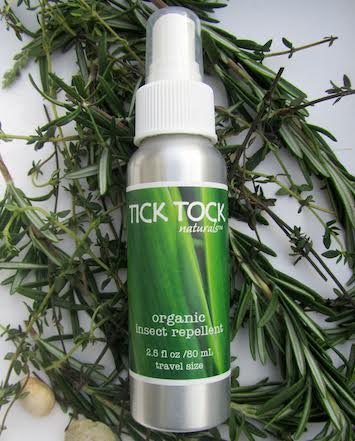 DEET-free organic insect repellent, “safe for everyone to use for bug bite prevention.” Active Ingredients: Lemongrass oil, eugenol. Inactive Ingredients: Grapeseed oil. Concentrated formula—one travel size bottle can offer one person protection for up to one year.
DEET-free organic insect repellent, “safe for everyone to use for bug bite prevention.” Active Ingredients: Lemongrass oil, eugenol. Inactive Ingredients: Grapeseed oil. Concentrated formula—one travel size bottle can offer one person protection for up to one year.
Rowan Tree Botanicals
 Therapeutic organic herbal formulas for dental care, including tooth remineralizing toothpaste, oil pulling mouthwash, oil pulling oil with comfry, and an ebook on how to heal cavities and reverse gum disease. Also remineralize toothpaste formula for children. “Our traditionally crafted products contain only ingredients which are certified organic, ethically wild-harvested or grown organically by Sarah Wildroot, founder of Rowan Tree Botanicals. We make our herbal remedies in small batches by hand to preserve the potency, integrity and purity of the products that we offer here, for the well being of you and your loved ones.”
Therapeutic organic herbal formulas for dental care, including tooth remineralizing toothpaste, oil pulling mouthwash, oil pulling oil with comfry, and an ebook on how to heal cavities and reverse gum disease. Also remineralize toothpaste formula for children. “Our traditionally crafted products contain only ingredients which are certified organic, ethically wild-harvested or grown organically by Sarah Wildroot, founder of Rowan Tree Botanicals. We make our herbal remedies in small batches by hand to preserve the potency, integrity and purity of the products that we offer here, for the well being of you and your loved ones.”
Lead in Ceramic Tile
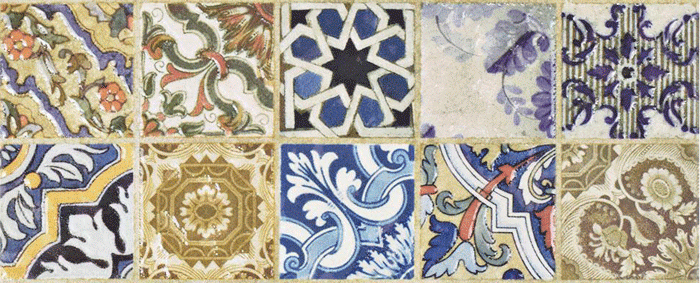
I’m posting this long correspondence because it has many links from this reader about lead in ceramic tile and various concerns.
The bottom line is: there seems to be a lot of lead in virtually all ceramic tile. It may pose a dust hazard when cutting, but is not a toxic exposure when touched or mounted on the wall. It does not emit lead into the air.
Question from Victoria
Hi Debra,
Hoping you can help us!
We have a question regarding ceramic versus marble tile. Hoping you can provide us with your thoughts!
My husband and I are planning on installing our kitchen backsplash this weekend.
We were hoping to choose plain white, made-in-the-USA 3×6 subway tile:
www.homedepot.ca/en/home/p.finesse-3-inch-x-6-inch-ceramic-modular-wall-tile-in-white.1000662664.html
We had specifically chosen the manufacturer Daltile based on their “Lead free certification” letter from 2013 found on their website: www.daltile.com/upload/greenworks/Lead-Free_Certification_2013.pdf
We have a lot of backsplash to install, from countertop to ceiling. The area around two large corner windows will require a SIGNIFICANT amount of cutting the tile to size, so we are very concerned about tile dust/debris generated while cutting the tile.
We felt confident choosing Daltile because they claim to not add any lead to their tile. Although they advise, by nature, there may be trace amounts. This “lead-free” claim is important to us as we have a toddler and we are currently trying to get pregnant.
However, upon further research, we came across a 2015 article from the Envionmental Information Association regarding problems associated with lead-testing ceramic tiles. Therefore they conclude it reasonable to assume all ceramic tiles have high levels of lead, if they are to be disturbed/cut. www.eia-usa.org/images/downloads/Newsletters/may15newsletter.pdf
In addition, Lead Safe America foundation advises to avoid choosing man-made ceramic tile. http://leadsafeamerica.org/tile
We are now concerned about using ceramic tile and are leaning towards using marble tile. We cannot seem to find any info online regarding lead/heavy metals/contaminants, etc in marble tile (although surely there must be at least trace amounts?..)
Do you know if marble would be a better, safer choice? Especially when having to cut and install significant quantities of tile?
Or would the subway tile in question be just as safe? We really want to pick the safest option for our toddler.
Please let us know your thoughts!
Thank you kindly for you help! 🙂
Debra’s Answer
Here are my thoughts.
First we live in a world where nothing is 100% without some toxic element. So it’s like fire or crossing the street. We do things to minimize risk.
In the past I and many others have considered manmade ceramic tile “safe” because it doesn’t outgas anything. Now that we are also considering heavy metal exposure we find that ceramic tile MAY contain lead.
So if Daltile says they do not add lead, then the only lead in that tile is whatever lead is occurring in the raw materials. Lead is an element of the earth. It cannot be eliminated 100%. So our challenge is to eliminate ADDED lead.
The Lead Safe America post seems to me to be saying that the biggest concern is from demolition and cutting, NOT from having the tile on a backsplash.
This tile will NOT emit lead into the room.
So it would be fine to install on a backsplash. I would CUT it outdoors. You don’t want to create dust from cutting indoors.
Note that her recommendations say don’t put food on the tile (which would absorb into the food and then you would eat it), use plates, etc, but she does NOT say do not touch the tile. Skin contact apparently is not a problem. I’ve seen this from other sources as well. So it’s OK to touch the tile.
Just as an aside, my whole kitchen and bathroom has this tile up all the walls 8 feet.
The conclusion seems to be that we should assume all manmade tiles contain lead. But as I outlined above, just because they contain lead doesn’t mean they cannot be used safely.
Marble is a natural material. It is not manufactured. Therefore lead would not be added, but it would contain any trace amounts of lead that occur naturally.
I would pick either and cut it in an area away from your toddler, where the dust would not go throughout the house via your HVAC.
Victoria’s Reply
Hi Debra,
Thank you so much for your reply! Your information and advice is greatly appreciated!!!
My concern is not the tile itself, but of the dust/debris generated when cutting large amounts of tile.
My hubby will cut the tile in the backyard, but even then, I worry about the tile debris/dust accumulating, possibly even contaminating, the deck, the playsets, the grass and soil my toddler plays in. Not to mention hubby’s clothing, dog paws, wind, etc, dragging it inside. I understand it doesn’t take very much lead to dust to contaminate an area.
This construction forum thread regarding lead in tile provided some interesting info:
http://forums.jlconline.com/forums/forum/jlc-online-expert-forums/ceramic-tile/52025-lead-in-tile
“One contractor I followed actually ripped out old tile that didn’t have lead in them and installed tiles that did have lead in them.
I checked where he dump the water from the tile saw and the soil was way over the clearance levels for lead content.
Dry cutting with a grinder produced the same results.”
The same forum thread mentioned an amazing field report that provided a lot of interesting information
http://ctioa.org/wp-content/uploads/2016/10/fr79.pdf
“The tile installer needs to take precautions to avoid the toxic effects of the lead and he needs to be sure that he does not carry tile dust home on his clothes or in his truck. Bob Knowles, a professional lead risk assessor, made the importance of this clear to me. On several occasions, the New Mexico Health Department asked him to trace down the source of lead that was causing elevated levels of blood to show up in school children. In some of these cases, he verified that the lead was coming from the professional activities of these children’s parent or parents who were tile installers. The tile dust was in their pick-up trucks and it was on the clothes, which they were wearing home. The pick-up trucks were used as work vehicles and for family transportation.”
Although Daltile provides a 2013 letter on their website that advises that they do not add lead to their glaze, I am still somewhat concerned about cutting and installing ceramic tile because they advise the tile may still contain lead. Im not concerned about the tile once it is installed.
So I was thinking maybe it’s best we cut and install marble instead of ceramic tile, just for peace of mind, because I can’t seem to find anything online that mentions lead in marble as a concern (unlike ceramic tile)
I would not be concerned about lead dust from tile cutting and installation if we didn’t have a toddler/still breastfeeding/potential pregnancy, as you know the effects of lead exposure are scarily irreversible, and even low levels of lead in the young body have been shown to affect IQ. Terrifying! 🙁
Although as you mention we live in a world where nothing is 100% without some toxic element… I just wish we lived in a world where us humans were more responsible about minimizing risk and took more care to ensure not only our safety, but the safety of the next generation(s) *sigh*!
That’s why I’m so appreciative of your website, blog and the work that you do, spreading important information and knowledge to everyone. Thanks so much for doing the amazing work that you do!! 🙂
Kind regards,
Victoria & family
Debra’s Answer
Considering all of the above and your concerns, I agree that your best choice is marble.
No Feathers Please
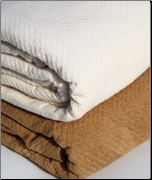 Organic cotton and wool bedding made in the USA. Cotton blankets, cotton/wool comforters, cotton/wool mattress pads, cotton sateen sheet sets, organic heat-fused cotton dust mite barriers (no plastic). Plus sleeping pillows with a variety of natural fills, including wool, buckwheat, latex, kapok, and more.
Organic cotton and wool bedding made in the USA. Cotton blankets, cotton/wool comforters, cotton/wool mattress pads, cotton sateen sheet sets, organic heat-fused cotton dust mite barriers (no plastic). Plus sleeping pillows with a variety of natural fills, including wool, buckwheat, latex, kapok, and more.
Air Pollution May be Harmful Even at Levels Considered “Safe”
 Live interactive map shows real time air pollution worldwide
Live interactive map shows real time air pollution worldwide
A new study from Harvard University suggests that air pollution continues to contribute to premature death of Americans—even at levels well below the legal limits set by the U.S. Environmental Protection Agency.
The nationwide study showed long-term exposure to two main smog pollutants—ozone and fine particulate matter—could increase chances of a shorter life.
The analysis of more than 60 million senior citizens found no sign of a “safe” level of pollution, below which the risk of dying early tapered off.
The Clean Air Act requires federal limits on the nation’s most widespread air pollutants to be updated periodically based on scientific review. The study, however, finds the current regulations to be insufficient to fully protect the public.
LOS ANGELES TIMES: Air pollution exposure may hasten death, even at levels deemed ‘safe,’ study says

Popsicle Molds
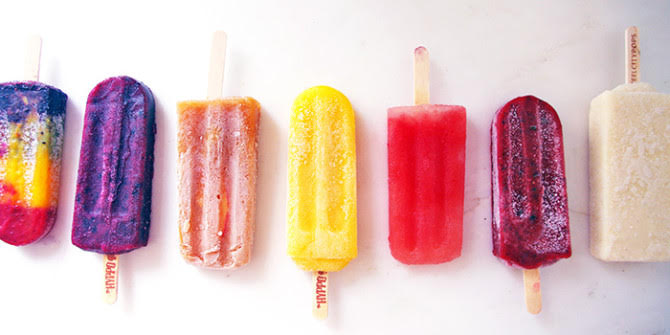
Question from MJ
Hi Debra,
I’m so glad I came across this! I’m trying to make our kitchen the healthiest I can as now I have a daughter! She’s extremely picky and I wanted to make some homemade popsicles for her to squeeze some veggies and fruit into her diet.
I can only find plastic (not buying), silicone, and stainless steel (18/8) molds.
Do you have a suggestion for me?
Also, what kind of cookware is best? Currently we have stuff I’m phasing out and also cast iron.
Debra’s Answer
For cookware, see Cookware page on Debra’s List.
First I want to say “good for you to make your own popsicles.” Even whole fruit popsicles in the natural food store often have sugar or other processed sweeteners in them.
For popsicle molds…now here is an example of a place where I would think more simply. I don’t make popsicles any more, though I love them.
The basic materials for popsicle molds to choose from are:
* plastic
* BPA-free plastic
* silicone
* aluminum
* stainless steel
The simplest way to make a popsicle is with paper cups. But here are 5 Ways to Make Popsicles Without a Mold.
Paper cups have a bit of paraffin wax on the inside, but you could line them with parchment paper, which has a silicone coating.
You know I think it would be great if someone would make wooden popsicle molds that you could line with parchment. I’m going to ask Larry to make a popsicle mold for me.
My popsicle alternative is to make whole fruit ice. Here’s a recipe I just made last night.
What’s different about this is it contains the whole fruit with the pulp, not just the juice. Which is not only better for you nutritionally, but it makes the ice creamier.
PINEAPPLE LIME WHOLE FRUIT ICE (GRANITA)
2 cups pineapple, cut into cubes
juice and zest of 2 limes
1 tablespoon raw honey
1/2 cup water
1. Put all ingredients into a food processor and blend until smooth. This took me about a minute.
2. Pour the puree into a shallow glass container, like a 9×9 glass baking pan.
3. Put it in the freezer and freeze for 30 minutes.
4. Take it out of the freezer and break up the ice with a fork. It will be frozen around the edges but not in the middle.
5. Let it sit for another half hour, break it up again, and it’s ready to eat.
This will taste like a popsicle and be cold like a popsicle, but no molds required. Larry and I both loved it.
You can use this same recipe with any fruit or combination of fruits or put it in a popsicle mold if you choose.
Tea Ball

Question from Judy
Hi Debra,
Looking for a non metal, non plastic tea ball. Ever run across this?
Thanks. 🙂
Debra’s Answer
First thing I thought of was a tea pot with glass infuser. Type “teapot with glass infuser” into google to see. Also ‘tea cup with glass infuser.”
Readers, how do you make your tea?
I have one of these teapots, but most of the time I just throw the loose tea into the Xtrema Tea Pot I boiled the water in, and then strain it out into the cup. Usually I make iced tea, living here in Florida, so then I let the tea cool in the pot and then strain it into a glass pitcher that I keep in the refrigerator.
More on Toxic Air In Airplanes

This is from an email sent from GreenMedInfo.
There has been a flurry of global reporting on new research from Stirling University hosted on the WHO’s website that confirms there is a clear pattern of and chronic symptoms ranging from breathing and vision problems, to neurological ones like headaches and dizziness in those exposed to the air blown from engines into aircraft cabins.
The Daily Mail, reporting on the new study recently stated:
‘There is a clear cause-and-effect relationship linking health effects to a design feature that allows the aircraft air supply to become contaminated by engine oils and other fluids in normal flight.
‘This is a clear occupational and public health issue with direct flight-safety consequences.’
The Telegraph’s headline is even more to the point: “New health concerns – and cancer link – over toxic cabin air breathed by 3.5 billion passengers each year”
If you or anyone you know flies, nothing is more important than to what you are being exposed to, and what you can do about it. I am convinced that consumer pressure on the industry will be the critical factor in reforming the industry, and not top-down political pressure by lawmakers, which will come only much later.
The first positive sign is that Boeing has already developed a non-toxic alternative called the 787 Dreamliner which is the only plane that takes fresh air from outside instead of directly from compressors in the jet engines to supply the cabin. Unfortunately, at this time, it is only rarely used for domestic flights. But consumer education and subsequent demand can quickly correct that problem!
Is There Lead in this Cookware?
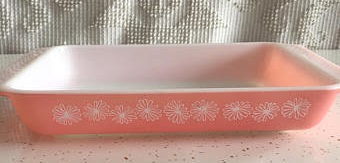
Question from Deb
Hi Debra,
I read your Bergstrom radio transcripts and appreciated them.
I live in Canada and with the money exchange, buying US cookware is not an option for me at this time, but after cancer, I would like to avoid using my metal pans as much as possible.
I do have some Corning Ware in my cupboards; two small dishes marked “For range and microwave,” two “Symphony (1990-94) patterns, a French white baking dish, and a white Pyrex dish—with little pink flowers on the outside—that is marked “England” on the bottom. I admit I don’t comprehend real well and I’m still not clear on whether any of these dishes contains lead. I doubt I can cook in any of them except the first two marked as such.
Can you give me the short answer?
I’ve been reading a lot of your blog and am beginning to trust your food safety info above all others.
Debra’s Answer
The quick answer is to test.
The least expensive way to test is with Lead Check strips. A negative reading doesn’t guarantee there is no lead, but a positive reading would tell you there IS lead.
Anything to Watch Out For When Buying a Corded Phone?

Question from Cheryl
Hi Debra,
Regarding Corded phones—are they all pretty safe?
We’re eyeing one with digital LCD display of incoming calls etc. and speaker phone here is the link.
AT&T – 2940 Corded Phone with Caller ID/Call Waiting – Black
I noticed even some corded phones mention having DECT technology which I believe is bad.
This one does not say it has DECTso I assume it doesn’t have it since most corded don’t seem to mention DECT.
Is there anything I need to watch out for when buying a corded phone w/LCD display and speakerphone?
Thank you.
Debra’s Answer
I searched for a corded phone with DECT and the only models that came up were combination phones that have corded and cordless together in one phone base.
I’ve been purchasing corded phones and I usually purchase a phone similar to the one you are looking at.
Readers, any problems buying corded phones?
GMO Ingredients in Supplements
You may be aware of fresh foods that are modified with GMOs and you may know that many additives in food products are modified with GMOs, but did you know that dietary supplements also can contain ingredients that are modified with GMOs?
Here is an excellent article that outlines where GMOs might be hidden in your supplements.
TOUCHSTONE ESSENTIALS: Are Your Supplements Tainted with GMOs?
The GMO-Free Supplements I Take Every Day
I’ve been taking Touchstone Essential whole food supplements every day for about five years.
They are the best supplements I’ve found. Made from whole organic foods grown on their own farms, no GMOs, processed at low temperatures. Glass bottles.
Learn more about Touchstone Essentials supplements here
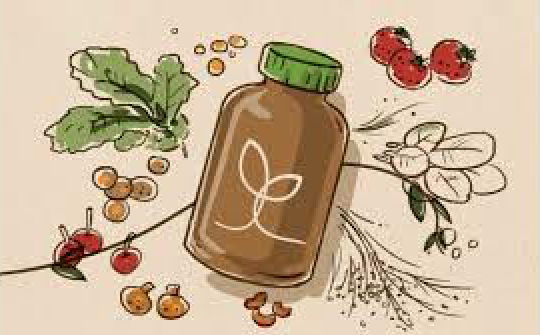
ABC Carpet & Home
 This huge website has almost everything you can think of, chosen from a natural, organic ethic and an “organic simplicity of nature” design aesthetic. That said, it’s impossible for me to check every product to guarantee it’s nontoxic, but you’ll find many toxic-free products here you won’t find anywhere else. Last weekend I happened to be driving within a few miles of one of their stores, so I stopped in. Everywhere I looked, almost everything was made from natural materials. Many custom and extraordinary designs. Mostly $$$$$.
This huge website has almost everything you can think of, chosen from a natural, organic ethic and an “organic simplicity of nature” design aesthetic. That said, it’s impossible for me to check every product to guarantee it’s nontoxic, but you’ll find many toxic-free products here you won’t find anywhere else. Last weekend I happened to be driving within a few miles of one of their stores, so I stopped in. Everywhere I looked, almost everything was made from natural materials. Many custom and extraordinary designs. Mostly $$$$$.
Jackson Wayne
 Briefcases, messenger bags, totes, wallets, and other accessories made in the USA of vegetable-tanned leather. Read and watch a video about their vegetable tanning method here. “We use only the finest full grain leather in everything we make. Full grain leather is the best grade of leather you can get, far superior to the “genuine leather” used in most mass-market bags. Our design philosophy is simple: get out of the way of the leather. Our designs are inspired by the minimal design aesthetic of leather bags from the 1920’s to 1940’s. We make bags the old fashioned way, using thick full grain leather – the kind of leather your grandfather would have appreciated. The leather we use is tanned to perfection and truly a work of art in its own right. So we try to let the leather speak for itself and avoid clutter and excessive design features.
Briefcases, messenger bags, totes, wallets, and other accessories made in the USA of vegetable-tanned leather. Read and watch a video about their vegetable tanning method here. “We use only the finest full grain leather in everything we make. Full grain leather is the best grade of leather you can get, far superior to the “genuine leather” used in most mass-market bags. Our design philosophy is simple: get out of the way of the leather. Our designs are inspired by the minimal design aesthetic of leather bags from the 1920’s to 1940’s. We make bags the old fashioned way, using thick full grain leather – the kind of leather your grandfather would have appreciated. The leather we use is tanned to perfection and truly a work of art in its own right. So we try to let the leather speak for itself and avoid clutter and excessive design features.
Lotuff Leather
 Extremely high quality one-of-a-kind leather bags for men and women: briefcases travel bags, wallets, backpacks, totes, and various leather accessories. You can even choose the exact leather hide for your bag. Their leather is an all-natural vegetable-tanned leather, made in a tannery that eschews the use of chemicals and metals and instead relies on plant-based matter for coloring.
Extremely high quality one-of-a-kind leather bags for men and women: briefcases travel bags, wallets, backpacks, totes, and various leather accessories. You can even choose the exact leather hide for your bag. Their leather is an all-natural vegetable-tanned leather, made in a tannery that eschews the use of chemicals and metals and instead relies on plant-based matter for coloring.
Rhythm Superfoods
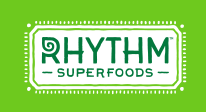 This company makes delicious snacks out of organic lakato kale, broccoli, or beets. I’ve tried their beet chips and broccoli bites. They are delicious. What makes them super good for me is that the beet chips have no oil, just plain beets and nothing else, yet they are sweet and very crunchy (you can also get them with sea salt). The other snacks are flavored with various seasonings, seeds, and nuts. If you are going to eat a snack, this one is about as good as it can get.
This company makes delicious snacks out of organic lakato kale, broccoli, or beets. I’ve tried their beet chips and broccoli bites. They are delicious. What makes them super good for me is that the beet chips have no oil, just plain beets and nothing else, yet they are sweet and very crunchy (you can also get them with sea salt). The other snacks are flavored with various seasonings, seeds, and nuts. If you are going to eat a snack, this one is about as good as it can get.
Lunapads
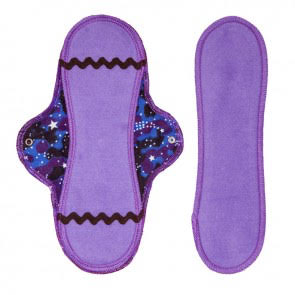 GOTS certified organic cotton menstrual pads and panty liners. Nice colors and patterns. Many sizes, styles, and absorbencies, and lots of information on how to make the switch and use.
GOTS certified organic cotton menstrual pads and panty liners. Nice colors and patterns. Many sizes, styles, and absorbencies, and lots of information on how to make the switch and use.
Cedar Key Canvas
 This small cottage industry has been making purses, totes, luggage, backpacks and duffles from heavy cotton canvas since 1986. Each piece you order is made especially for you in the style and color you choose and can be customized. They will also make your own fabric into a bag of your choice.
This small cottage industry has been making purses, totes, luggage, backpacks and duffles from heavy cotton canvas since 1986. Each piece you order is made especially for you in the style and color you choose and can be customized. They will also make your own fabric into a bag of your choice.
Radius
 A line of organic and natural dental products, including USDA certified organic toothpaste, silk dental floss and eco-friendly toothbrushes. “Our Radius USDA Organic 100% biodegradable Silk Floss is spun from the finest grade silk and dipped in 100% pure, natural candelilla wax which is a plant based wax. The end result is the most natural floss available on the market today. Silk was the original material used for all flosses throughout the world until the late 1930s when silk sources to the Western world were cut off due to the sino-Japanese War. Silk is an all-natural alternative to nylon.“
A line of organic and natural dental products, including USDA certified organic toothpaste, silk dental floss and eco-friendly toothbrushes. “Our Radius USDA Organic 100% biodegradable Silk Floss is spun from the finest grade silk and dipped in 100% pure, natural candelilla wax which is a plant based wax. The end result is the most natural floss available on the market today. Silk was the original material used for all flosses throughout the world until the late 1930s when silk sources to the Western world were cut off due to the sino-Japanese War. Silk is an all-natural alternative to nylon.“
The Goldilocks Effect—How Adding a Layer of GOLS-Certified Organic Latex Made My Bed “Just Right”
My multi-layered bed: wood slats with GOLS-certified organic latex strips, three organic wool toppers, organic wool felted wool pad.
I’m writing this because last Tuesday morning—before going off on an overnight trip—I glued some strips of GOLS-Certified Organic Latex to the wood slats on my bed frame.
I’ve had these latex strips sitting in their shipping box for a few months waiting for a day when I could let the glue dry overnight. Either I had to go sleep somewhere else, or I had to sleep on the floor. So I waited until I was going somewhere.
When I came home the next evening, I put my wool mattress and three wool toppers from Shepherd’s Dream back on the bed, and laid down. Immediately I said, “This feels wonderful!”
I had probably the best night’s sleep that night. Ever. And every night since I’ve slept really deeply all through the night. And Larry too. Sleeping like a baby.
I can only come to one conclusion: Like Goldilocks, I finally got my bed “just right.”
39 Years of Natural Beds
I’ve been sleeping on natural beds for almost forty years. I was committed to sleeping on a nontoxic mattress, but they were not always the most comfortable.
In 1978, my first nontoxic bed was a metal foldaway cot frame (with springs) on which I piled a stack of folded cotton thermal blankets. Not comfortable at all but it wasn’t toxic, so I slept better.
Then I got a cotton futon and slept on it on a wood floor. VERY uncomfortable, but it wasn’t toxic.
Then I got my first wool mattress, which was up on wood slats. Much more comfortable, but that was before it was discovered that a thick wool mattress wasn’t the best design because it couldn’t breathe. The cotton cover molded and disintegrated within a couple of years.
And then my next mattress was the Shepherd’s Dream wool mattress that I still sleep on today. And I have to say, after all these years it’s still like new.
At first I had it on the wood slats, but it’s not very thick, so I could feel the slats. I added two wool toppers and that was a lot better. (Later I added a third wool topper after purchasing one when I was out of town and needing to sleep on a synthetic mattress. When I got home, I just put it on my at-home mattress.)
Then Shepherd’s Dream introduced latex strips for the wood slats. I was reluctant to try them because I didn’t like the smell of latex.
At the time the only latex you could get was a mix of natural and synthetic. It smelled very strongly of what I used to call “latex smell” and I had to air the strips for several months before I could have them in the bedroom.
And then they just got to a point last October where they were crumbling and I had to take them off because they were creating piles of dust under the bed.
When I removed the strips, just having the mattress on the wood slats was less comfortable.
I really needed some new latex strips.
GOLS-Certified Organic Latex
I was reluctant to replace my latex strips because I really really really didn’t like the smell of what I thought was latex.
And then the folks at Happsy sent me a sample of their GOLS-certified organic latex. It is completely different from the natural/synthetic latex I had before.
I had assumed the odor I didn’t like was the natural odor of latex. Not so! The odor I didn’t like is completely absent from the GOLS-certified organic latex, so it must have been the synthetic latex I was objecting to.
But the best part is this latex is both nontoxic and comfortable. It is both soft and supportive at the same time.
It took me more than thirty years to get my “just right” bed. Part of the wait was that the materials just weren’t available before. But now we have a whole new generation of mattresses available with ever-improving materials.
I really didn’t know before this week how much difference a comfortable mattress makes in quality of sleep. Now I know. Amazing.
Costco is Starting To Screen for Toxics

Safer Chemicals, Healthy Families “Mind the Store” campaign announced last week that Costco has started a “Smart Screening” program to address toxic chemicals in some of the products they sell.
As a Costco member, I’m very happy to hear this. Living where I do, Costco is one of the few places where I can buy organic food, and I greatly appreciate the number of organic choices they have for frozen fruits and vegetables. It would be great to see more nontoxic products there.
“According to Costco’s website, the company is now testing some products for certain toxic chemicals of “regulatory and social concern,” and keeping products containing other harmful chemicals off store shelves entirely. This is a good first step toward tackling toxic chemicals! ”
You can read all about it in their new blog post.
SAFER CHEMICALS HEALTHY FAMILIES: Costco Starting to Take Stock of Toxic Chemicals
New EWG Report Warns PFCs Pollute Tap Water for 15 Million People
PFCs are highly toxic fluorinated chemicals that have been linked to cancer, thyroid disease, weakened immune systems and other health problems.
New research done by Environmental Working Group and Northeastern University in Boston have found PFC pollution in tap water supplies across America.
Check their interactive map to see if your water supplies are contaminated.
IF YOU HAVE PFCs IN YOUR WATER…
According to the American Water Works Association (a non-profit, scientific educational association established in 1881), activated carbon is very effective at removing over 90% of PFCs from the water supply.
Most water filters employ just 1 type of regular activated carbon, however, PureEffect Advanced Filtration Systems water filters (the filters I have been using and recommending for more than five years) have 3 different types of the Advanced Catalytic Activated Carbon in each of their 2, 3 and 4 chamber countertop/undercounter filter systems. This results in a superior range, capacity and thoroughness for PFC and other chemical removal.
The Case Against Fragrance
Question from Maureen
Hi Debra,
I am a regular reader of your site and just heard about a book you may be interested in…
The Case Against Fragrance by Kate Grenville.
Thanks for all you do to keep us healthy!!
Debra’s Answer
 Thanks so much for telling me about this book.
Thanks so much for telling me about this book.
I bought a copy and I have to say…
Wow! Everyone interested in fragrance issues should read this. It addresses the issue from every direction, is well documented, and it’s easy to read. If you want to explain to anyone what the problem is with fragrance, just have this book on hand.
The only thing missing is that it doesn’t tell you how to live fragrance-free.
But it does give all the documentation about WHY we need to watch out for fragrance.
What is Polyresin?
Question from Ronda
Hi Debra,
I was looking for lamps and found a lot of them to be poly resin. Some of what I read seems to say that this material is not toxic. Another article said it is toxic. Do you have an opinion on this? Thanks for all of the work you do to help families be safe!
Debra’s Answer
This is a difficult question to answer as there isn’t much information available.
A polyresin is a synthetic resin made from some petrochemical that has other materials added to it. One example is synthetic resin combined with ground alabaster, a natural stone.
Because the formulas for polyresins can vary so widely and as consumers it’s impossible for us to find out what the material actually is with today’s labeling, I would say the most prudent thing to do is avoid it because it’s an unknown.
However, at the same time, the fact that it is a HARD resin means that it is unlikely to outgas.
Use your best judgement. I can’t confirm it’s safe or toxic.
Simple Tips to Protect Your Body From Being Eaten by Mosquitoes

Dealing with mosquitoes is a natural part of summer, especially here in Florida. West Nile Virus aside, they are simply annoying as well having an itchy bite.
In times past, some very natural strategies were employed for mosquito relief. When I visited Charleston, North Carolina a some summers ago, I learned that all the old houses had the bedrooms on the second floor because mosquitoes wouldn’t fly that high. In Africa, whole cities are built up mountain sides “above the mosquito line.”
If you can’t move your bedroom upstairs or move your house up a mountain, here are some easier—completely natural—-things you can do to protect your body from mosquitoes this summer.
1. Make Your Body Less Attractive to Mosquitoes
Mosquitoes are attracted to our bodies through the carbon dioxide (CO2) we exhale when we breathe. The production of CO2 production varies from body to body based on its metabolic rate; those bodies with high metabolism tend to burn more CO2 and are therefore more attractive to mosquitoes.
They also like diabetics.
But they are also attracted to lactic acid, which our bodies release after a workout or after eating salty and high-potassium foods, and fruity and floral fragrances found in perfumes and bodycare products, scented sunscreens, and fabric softeners and dryer sheets.
Mosquitoes prefer moist, cool bodies, wet from rain, perspiration or swimming.
And if you are wearing light-colored clothing, particularly yellow, a mosquito will zoom right in on you.
So, to make your body unattractive to mosquitoes:
• eat less salt
• use unscented products
• dry off your body
• avoid sweets
• wear dark colors
2. Use Natural Repellents
If you want to use a repellent on your skin, the simplest repellant is vinegar. I learned this from an Italian woman who got this piece of wisdom from her grandmother. And it works! Any type of vinegar will do. I use apple cider vinegar, but cheap distilled white vinegar will do. I put it into one of those oil-and-vinegar shaker bottles usually used for salad dressing and keep it on my nightstand all summer. Before going to sleep, I just sprinkle it on my face and arms–especially around my ears–which generally does the trick.
There are also repellents made from fragrant essential oils, which are sold at many natural food stores and online. Most contain oil of citronella and/or oil of peppermint as the active ingredient. The U.S. Centers for Disease Prevention and Control recommend oil of lemon eucalyptus as an effective mosquito repellent.
Mosquitoes also hate the smell of garlic. Eat raw garlic or crush a clove and rub it on your skin.
Other good repellants include:
• clove essential oil
• vanilla extract
• citronella essential oil or live plants
• any kind of mint essential oils or live plants
• rosemary essential oil or live plants
• lemongrass
• marigolds
• Cuban oregano
• eucalyptus
You can grow many of these plants in your garden or in pots on a patio or balcony. I always have mint in my garden and I’m going to plant more.
3. Put Up a Barrier
The simplest barrier is to simply cover your skin with clothing. Long pants and shirts with sleeves offer good protection.
Be sure to put screens on your windows and doors and make sure they are in good repair. Open and close doors quickly so insects don’t come inside.
And there is always the traditional mosquito netting. Larry and I don’t have one on our bed here in Florida, but we did when we lived in California. I always felt safe and protected under the net. You can get 100% cotton mosquito netting by the yard online and make your own mosquito net.
4. Natural Treatments for Mosquito Bites
If, after all the prevention, you still get bitten, here are some natural ways to relieve the itch.
• Make a paste of water and baking soda and put it on your bites.
• Apply salt water made with natural salt–the water will evaporate and the soothing salt will stay on your skin.
• Rub raw garlic over the bites.
• Apply aloe vera to the bites, in gel form or straight from the plant.
Organic Beard Supply
 “Organic beard oil guaranteed to prevent itch beneath facial hair…Strengthen and soften your facial hair with our unique blend of carrier oils. Each scent has a unique set of benefits derived the essential oils used.”
“Organic beard oil guaranteed to prevent itch beneath facial hair…Strengthen and soften your facial hair with our unique blend of carrier oils. Each scent has a unique set of benefits derived the essential oils used.”
Vermont Beard and Mustache Company
 “Men’s grooming, as nature intended.” Organic beard conditioning oils and organic shave oils for “a smooth bread and closest shave, guaranteed…Our premium organic beard oils and shave oils are pure, nourishing, and honest… We proudly handcraft our oils in small batches in the greater Burlington, VT area. We impart the culture and style of the city in each of our products. The result will revitalize your beard and revolutionize your shave.”
“Men’s grooming, as nature intended.” Organic beard conditioning oils and organic shave oils for “a smooth bread and closest shave, guaranteed…Our premium organic beard oils and shave oils are pure, nourishing, and honest… We proudly handcraft our oils in small batches in the greater Burlington, VT area. We impart the culture and style of the city in each of our products. The result will revitalize your beard and revolutionize your shave.”
Mystic Man Beard Oil
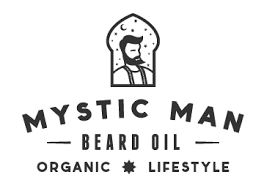 Beard oil “made from the finest 100% USDA approved organic ingredients. The rich, organic oils blend perfectly with sedr extract, a Mediterranean ingredient used for centuries to condition and protect hair, and to stimulate growth…work perfectly on every heard length…work to transform a beard from cars, bought hair, to smooth, luxurious and completely touchable.. will relieve itching and revitalize the way your skin and beard look and feel. Also a wooden beard comb.
Beard oil “made from the finest 100% USDA approved organic ingredients. The rich, organic oils blend perfectly with sedr extract, a Mediterranean ingredient used for centuries to condition and protect hair, and to stimulate growth…work perfectly on every heard length…work to transform a beard from cars, bought hair, to smooth, luxurious and completely touchable.. will relieve itching and revitalize the way your skin and beard look and feel. Also a wooden beard comb.
The 1906 Gents
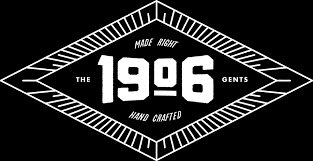 High quality badger bristle shaving brushes with wooden handles, and natural shaving soap. “With so many companies focusing on profit alone; we strive to focus on quality alone. Instead of buying one product a thousand times over your lifetime, why not buy a product once and enjoy it for a lifetime!”
High quality badger bristle shaving brushes with wooden handles, and natural shaving soap. “With so many companies focusing on profit alone; we strive to focus on quality alone. Instead of buying one product a thousand times over your lifetime, why not buy a product once and enjoy it for a lifetime!”
Mini-Fab
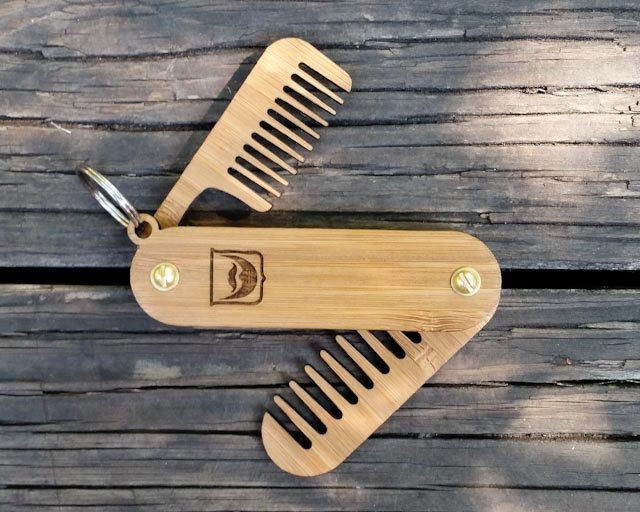 A small fabrication studio in Texas that handcrafts all the accessories a man needs out of wood instead of plastic: wooden combs (freestanding, folding and even a folding comb keychain with two different-sized combs!), shaving brushes, and razors, plus various wooden cufflinks, signs, clocks, and a lot more more (like personalized handmade soaps). “Our products are typically made out of wood, leather, cork, acrylic, and aluminum, but that doesn’t stop us from experimenting with other stuff. We try to locally source materials that are eco-friendly and sustainable, whenever possible, and try to put every last scrap to good use in order to minimize waste. Some of our natural wood stains are made in our shop using household items such as vinegar, steel wool, hydrogen peroxide, copper, walnuts, and tea.Our products are very customizable and can be personalized with a name, initials, monogram, logo, or just about whatever strikes your fancy. ”
A small fabrication studio in Texas that handcrafts all the accessories a man needs out of wood instead of plastic: wooden combs (freestanding, folding and even a folding comb keychain with two different-sized combs!), shaving brushes, and razors, plus various wooden cufflinks, signs, clocks, and a lot more more (like personalized handmade soaps). “Our products are typically made out of wood, leather, cork, acrylic, and aluminum, but that doesn’t stop us from experimenting with other stuff. We try to locally source materials that are eco-friendly and sustainable, whenever possible, and try to put every last scrap to good use in order to minimize waste. Some of our natural wood stains are made in our shop using household items such as vinegar, steel wool, hydrogen peroxide, copper, walnuts, and tea.Our products are very customizable and can be personalized with a name, initials, monogram, logo, or just about whatever strikes your fancy. ”
How To Choose Organic Eggs

Because I’m all in favor of crystal-clear product labeling]=link-to-DLDRP-page, I had to share this excellent article with you that discusses both how to choose organic eggs and also rates the labels and package design of each brand included.
See why the brand shown above gets the highest rating.
LIVING MAXWELL: Don’t Be Influenced By Pretty-Looking Egg Cartons
New Study Shows Phthalate Exposure in Early Life Can Affect Girl’s Thyroid Health Later On

A new study shows that early life exposure to phthalates is linked to lower thyroid function in young girls.
Researchers found that exposure to a common group of phthalates was associated with lower levels of active thyroid function in 3-year-old girls.
Study author Pam Facts-Litvak, a professor of epidemiology at Columbia University’s Mailman School of Public Health said, “I think the message to consumers is be careful of the products they use. Depressed thyroid hormones are associated in many studies with feelings of depression, anxiety and behavior problems in children as well as metabolic issues later in life.”
Researchers did not find the same conntection between phthalates exposure and lower thyroid function among boys.
Turapur Water Pitcher

Question from Elaine
Hi Debra,
I fell for an online infomercial for a water filter Turapur. Though I don’t know if it does all it claims to do, I will say that the taste of my tap water has improved beyond words.
Do you know this product?
Debra’s Answer
I imagine that it did make the water taste better, but it’s not doing much to remove pollutants.
Here’s how I can tell.
* It’s a pitcher, and typically pitchers don’t contain enough filter media to remove sufficient amounts of pollutants from the water.
* It’s selling point with regards to pollutants is that it “purifies water from bad odor and taste.” It doesn’t say that it removes any specific pollutants. In fact, it doesn’t state pollutant removal anywhere on the page.
* What they are really selling is the fact that they are adding hydrogen to your water, which supposedly makes your body feel better. They talk at length about the benefits of hydrogen to your body. It seems that this hydrogen is added by passing the water through a filter that has ” magnesium, tourmaline and infrared ceramics.”
I read every single word on the page. No mention of removing any chemical pollutants. No mention of how many gallons it filters. No mention of needing to replace the filter cartridge or how much that costs.
If you are interested in purchasing a filter that really does the job, I recommend PureEffect Advanced Filtration. These filters remove all the major pollutants and then some, as well as naturally adjust the water to be the degree of alkaline of water found in nature. These filters cost more that the $39 Turapure, but they actually purify and rejuvenate the water.
Ancestral Supplements
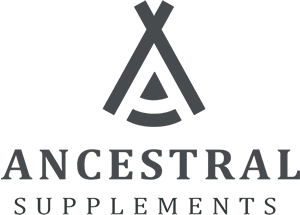 100% freeze-dried grass-fed and grass-finished beef organs. Our ancestors ate all parts of animals to get a full spectrum of nutrients, yet today we are squeamish about eating organ meats. Beef gelatin capsules liver, heart, kidney, pancreas, and spleen in a form that is easier to take. Pasture raised in New Zealand. Hormone, pesticide, and GMO free. Third party tested for purity. “For most of human history, we effortlessly consumed (nose-to-tail) the things we needed for health and happiness. Like the fertile ground that we once walked upon, we were a natural extension of this earth. In the modern world, we unknowingly struggle to fulfill our nutritional needs in order to support and sustain a vibrant, disease-free life. Our mission is to offer the highest quality line of whole-food supplements with the purpose of putting back in, what the modern world has left out.”
100% freeze-dried grass-fed and grass-finished beef organs. Our ancestors ate all parts of animals to get a full spectrum of nutrients, yet today we are squeamish about eating organ meats. Beef gelatin capsules liver, heart, kidney, pancreas, and spleen in a form that is easier to take. Pasture raised in New Zealand. Hormone, pesticide, and GMO free. Third party tested for purity. “For most of human history, we effortlessly consumed (nose-to-tail) the things we needed for health and happiness. Like the fertile ground that we once walked upon, we were a natural extension of this earth. In the modern world, we unknowingly struggle to fulfill our nutritional needs in order to support and sustain a vibrant, disease-free life. Our mission is to offer the highest quality line of whole-food supplements with the purpose of putting back in, what the modern world has left out.”
Earth-Shot Weed Control
 A lightweight, ergonomic weed removal tool for both precise removal of the weed at the root and spot spraying of natural herbicide to the root. You can removing unwanted weeds while keeping lawns and gardens healthy and herbicide-free. Refillable reservoir hold 100 shots of any weed-killing solution. A citrus oil based weedkiller solution is sold on the site.
A lightweight, ergonomic weed removal tool for both precise removal of the weed at the root and spot spraying of natural herbicide to the root. You can removing unwanted weeds while keeping lawns and gardens healthy and herbicide-free. Refillable reservoir hold 100 shots of any weed-killing solution. A citrus oil based weedkiller solution is sold on the site.
Better Shoes Foundation
 This site is a list of “sustainable” and “vegan” shoe brands. “we thought it would be appropriate to reference the new wave of brands that seem to have built sustainable practices from the ground up.” The list is quite long (and I assume is updated) so I thought I would put this list here while I go through it and look for the brands that are nontoxic. If you explore this list and find any shoes you think are toxic free, please tell me which they are in the comments. A world map shows the scattered show production locations.
This site is a list of “sustainable” and “vegan” shoe brands. “we thought it would be appropriate to reference the new wave of brands that seem to have built sustainable practices from the ground up.” The list is quite long (and I assume is updated) so I thought I would put this list here while I go through it and look for the brands that are nontoxic. If you explore this list and find any shoes you think are toxic free, please tell me which they are in the comments. A world map shows the scattered show production locations.
Fit Organic
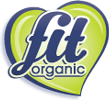 A whole range of cleaning products made from USDA certified organic ingredients. Everything from laundry detergent and stain removers to produce wash, dishwasher gel, and pet stain/odor remover. And USDA certified organic mosquito repellant.
A whole range of cleaning products made from USDA certified organic ingredients. Everything from laundry detergent and stain removers to produce wash, dishwasher gel, and pet stain/odor remover. And USDA certified organic mosquito repellant.
South Street Linen
 Simple, colorful, creative clothing for women, designed by three women friends (all artists) who are committed to the re-emerging textile community in Maine. “We design clothes and objects we would like for ourselves and have discovered a whole world of women that love them the way we do.” Be sure to read this page about linen and watch “this beautiful video” to learn about the steps required to turn flax into linen. All linen. All season. All made in Maine.
Simple, colorful, creative clothing for women, designed by three women friends (all artists) who are committed to the re-emerging textile community in Maine. “We design clothes and objects we would like for ourselves and have discovered a whole world of women that love them the way we do.” Be sure to read this page about linen and watch “this beautiful video” to learn about the steps required to turn flax into linen. All linen. All season. All made in Maine.
Heart Grown Wild
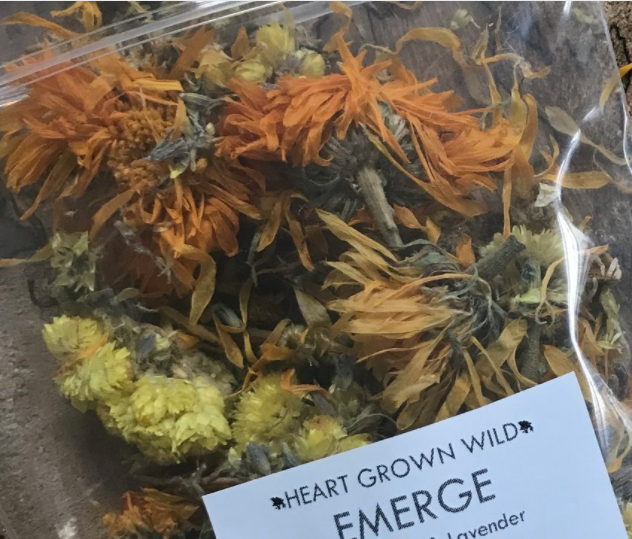 Natural, organic, handcrafted, plant-based skin and hair care products. “Our products are created with a strong foundation, knowledge and connection with the plants. It is our intention to bring that connection to the outside world into your daily self-care routines. This connection is important now more than ever in the world we live in.”
Natural, organic, handcrafted, plant-based skin and hair care products. “Our products are created with a strong foundation, knowledge and connection with the plants. It is our intention to bring that connection to the outside world into your daily self-care routines. This connection is important now more than ever in the world we live in.”
Apothecary 90291
 Effective chemical-free skin care made from 100% certified organic ingredients.” A set of oils, balms, and masks designed by a woman born and raised in Romania, the daughter of a biochemist mother and a musician father. So she was surrounded by some of the most beautiful women in Europe. Her organic products reflect her European background and the way things are done there, rather than what we expect in the US. Ingredients are chosen to cleanse and nourish. Oh, and by the way, 90291 is the zip code for Venice, California, where the temperature is ten degrees cooler. Ingredients.
Effective chemical-free skin care made from 100% certified organic ingredients.” A set of oils, balms, and masks designed by a woman born and raised in Romania, the daughter of a biochemist mother and a musician father. So she was surrounded by some of the most beautiful women in Europe. Her organic products reflect her European background and the way things are done there, rather than what we expect in the US. Ingredients are chosen to cleanse and nourish. Oh, and by the way, 90291 is the zip code for Venice, California, where the temperature is ten degrees cooler. Ingredients.
Uprising Seeds
 Vegetables, herb, flower, and grain seeds. I was really inspired by this website, starting with the name. “All our seeds are open-pollinated, certified organic by the USDA, and grown by small family farmers in the Pacific Northwest.And the list their growers Uprising Seeds is a small family run organic seed farm and the culmination of years of fresh market farming, variety trialing, seed production and breeding work, and most importantly, a decades-long love affair with food and its power to bring people together. Our ideal vision of seed sustainability involves farmers and gardeners as the stewards of the varieties that they depend on. We are therefore committed to strengthening the public commons of seed genetics by working to preserve and improve open-pollinated varieties keeping biodiversity strong through adaptability and resilience.” Flip through their beautiful catalog.
Vegetables, herb, flower, and grain seeds. I was really inspired by this website, starting with the name. “All our seeds are open-pollinated, certified organic by the USDA, and grown by small family farmers in the Pacific Northwest.And the list their growers Uprising Seeds is a small family run organic seed farm and the culmination of years of fresh market farming, variety trialing, seed production and breeding work, and most importantly, a decades-long love affair with food and its power to bring people together. Our ideal vision of seed sustainability involves farmers and gardeners as the stewards of the varieties that they depend on. We are therefore committed to strengthening the public commons of seed genetics by working to preserve and improve open-pollinated varieties keeping biodiversity strong through adaptability and resilience.” Flip through their beautiful catalog.
FruitBox
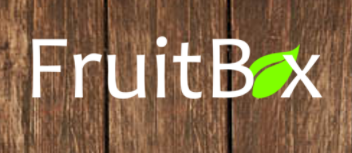 Third generation organic farmers offer their farm-to-door mixed fresh fruit boxes for immediate delivery and by monthly subscription. You box comes with 5-7 pounds of assorted citrus fruits and avocados.
Third generation organic farmers offer their farm-to-door mixed fresh fruit boxes for immediate delivery and by monthly subscription. You box comes with 5-7 pounds of assorted citrus fruits and avocados.
Big Tree Organic Farms
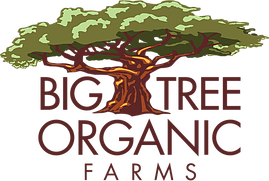 California-grown organic almonds sold whole (raw and roasted, and blanched), sliced, diced, ground into flour, meal, and butter. Also flavored with chocolate or lemon salt. Certified organic by CCOF and certified kosher. Their whole natural almonds are processed in an “almonds only” facility.
California-grown organic almonds sold whole (raw and roasted, and blanched), sliced, diced, ground into flour, meal, and butter. Also flavored with chocolate or lemon salt. Certified organic by CCOF and certified kosher. Their whole natural almonds are processed in an “almonds only” facility.
Inzana Ranch and Produce
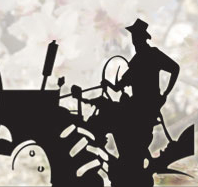 Raw organic unpasteurized almonds (shelled and in shell), organic walnuts, organic natural-color pistachios, sold separately or mixed with organic dried fruits. Dried fruits include organic cherries, kiwi, 24 varieties of figs, and even a sun-dried organic apricots without sufur that is orange, chewy, and sweet. All fruits and nuts grown on their CCOF certified organic ranch.
Raw organic unpasteurized almonds (shelled and in shell), organic walnuts, organic natural-color pistachios, sold separately or mixed with organic dried fruits. Dried fruits include organic cherries, kiwi, 24 varieties of figs, and even a sun-dried organic apricots without sufur that is orange, chewy, and sweet. All fruits and nuts grown on their CCOF certified organic ranch.
Xtrema vs Visions Cookware

Question from Sue
Hi Debra,
I have very recently discovered the grim reality of stainless steel.
I have been doing a lot of reading and shopping. not sure how i found you but i am grateful!
I noticed that you recommend and use both visions and xtrema. the price difference is definitely a consideration for me.
I have found some used visions sets and single pieces on ebay . i have also seen the xtrema website and they have some nice sets which are on sale right now for mother’s day.
Ok here are my questions:
- are the xtrema/vision ware items very fragile?
- do you recommend one vs. the other? or are both good?
- does the vision ware age well? ie do scratches effect the food?
I am leaning toward the xtrema but i am totally open to the vision ware.
It is funny how learning about one thing changes everything! the whole thing started when i “saw” my super cheap, “stainless steel” tea kettle. it totally freaked me out!! haha! i am so ready to get rid of all the stainless steel in the house but first i must replace it.
Thank you so much for doing what you do. i am super excited to learn more from you.
Debra’s Answer
I use both Xtrema and Visions.
Xtrema is made of very fine ceramic.
Visions is made of glass. Visions is no longer being manufactured, but many pieces are available used at flea markets and online. Visions online.
I have 3 Visions pots that I’ve been using for 30+ years. I have about half a dozen pieces of Xtrema that I’ve been using since they’ve been available, I think about 10 years. I’ve never broken either of them.
I have a lot of glassware and pottery. These are not fragile in the sense of a fragile glass that would break if you tipped it over. They are both very “heavy duty”. That said, I once chipped my large X pot while washing it. I have a ceramic floor and I would imaging both might break if I dropped them on the floor, but that has never happened.
Both Xtrema and Visions are very good, each in their own way.
My Visions pots have aged very well. They are glass through and through so no problem with scratches.
Latex: Synthetic, Natural, Organic—Dunlop and Talalay
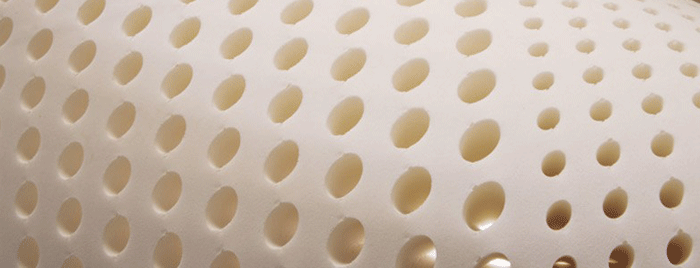
Question from Donna
Hi Debra,
I own three Savvy Rest mattresses (twin, full, and king) all made from Talalay latex as I prefer how that feels. You mention that Talalay is petroleum-based. Is that correct? Savvy Rest lists both Talalay and Dunlop as natural latex. Yikes! I’m pretty worried now that I have petroleum based latex in three very expensive beds.
Debra’s Answer
I did say that Talalay latex is petroleum-based. When you asked this question, I went back and took another look at latex and want to be more specific.
Latex foam used in mattresses can be confusing, so I’m going to sort it all out clearly here.
There are a lot of details about how latex is made, but in this post I am just going to focus on types of latex, what they are and how they are labeled.
There are two parts to understanding latex
1. the source of the latex
2. the process used to turn the latex into foam
Sources of Latex
The raw material to make latex foam for mattresses and furniture are are
1. crude oil
2. sap of the rubber tree Heaven brasilliensis
Latex made from petroleum is called “synthetic”. The most common type of synthetic latex is SBR (styrene-butadiene rubber). Yes, styrene like Styrofoam cups, which leach styrene into beverages. Synthetic latex as a stronger odor than natural latex and usually does not mean emissions standards of testing organizations such as Oeko-Tex and Greenguard.
Synthetic latex is often mixed with natural latex and marketed as “blended.” But it’s not half and half. Usually blended latex is mostly synthetic with a small amount of natural latex.
 Natural latex is made from the sap of the rubber tree. The sap is “tapped” from rubber trees much in the way maple syrup is tapped from maple trees.
Natural latex is made from the sap of the rubber tree. The sap is “tapped” from rubber trees much in the way maple syrup is tapped from maple trees.
There are two types of natural latex:
1. natural latex
2. organic latex
While both come from the rubber tree, natural latex may have various chemicals used in the growing or processing of the sap, which are mostly unknown.
Organic latex sap is certified to usual organic standards.
So there are basically three raw materials:
1. synthetic SBR latex
2. natural latex sap
3. organic latex sap
Processes to Turn Latex into Foam
There are two basic processes
1. Dunlop
2. Talalay
Dunlop was the original process used to make latex and is simpler than Talalay.
Read a comparison of Dunlop and Talalay here
From the viewpoint of choosing the least toxic latex, these processing methods don’t seem to make much difference. The most important aspect of choosing a nontoxic latex is the raw material.
In the marketplace you’ll find:
* synthetic latex made with Dunlop or Talalay.
* natural latex mostly Dunlop, with some Talalay
* organic latex is all Dunlop at this time (but that may change as more organic latex becomes available)
If it’s organic, it’s Dunlop. But if it’s Dunlop, it could be synthetic, natural or organic.
 What to Look For
What to Look For
The bottom line here really is if you want the most natural and nontoxic latex, choose organic.
Organic latex is certified by the Global Organic Latex Standard (GOLS).
The Original Question
Now to answer the original question: “You said Talalay is petroleum-based. Is that correct? Savvy Rest lists both Talalay and Dunlop as natural latex.”
It turns out I was both right and wrong in saying Talalay is petroleum-based. Some Talalay latex foam is petroleum-based and some is natural latex. But today, Talalay is never organic.
So what about Savvy Rest? Here’s what I found on their website today:
True natural latex, without synthetic latex or fillers blended in, is simply natural foam rubber. We offer two different types of natural latex: Dunlop and Talalay. Dunlop, named after the method in which it’s manufactured, is the denser, more supportive of the two. Talalay, also named after its manufacturing process, offers softness and gentle pressure-relief. (Learn more about Dunlop and Talalay here.)
Our natural Dunlop latex is certified organic in two ways. The rubber tree plantations are certified organic according to USDA standards, and its processing is certified organic to the Global Organic Latex Standard (GOLS).
So I would presume from this that your Talalay latex is natural, but not organic. And clearly not synthetic.
CONSUMER REPORTS: Organic Mattress Labels You Can Trust
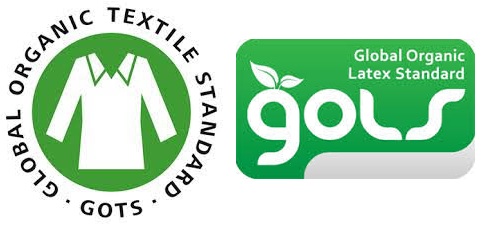
Consumer Reports has a great review of the certification labels used on organic mattresses. I was thinking I wanted to write a report like this, and then found this one.
According to their research only two certification meet their qualifications:
- Global Organic Textile Standard (GOTS)
- Global Organic Latex Standard (GOLS)
I agree. These are the certifications to look for in an organic mattress.
Here is what each of these certifications mean:
GOTS requires that at least 95 percent of the materials in the mattress be certified organic, and it prohibits outright the use of certain substances even for the other 5 percent, such as chemical flame retardants and polyurethane, the chief ingredient of memory foam.
GOLS ensures that a mattress with latex is made of organic latex, with restrictions on the other 5 percent of the mattress’s components. Natural-latex mattresses may have both the GOTS and GOLS labels.
[CORRECTION:I need to correct Consumer Reports here. GOTS does not require that at least 95% of the total materials in the mattress be certified organic. GOTS recognizes that other materials in addition to fibers are needed to make mattresses. GOTS divides the materials into two “piles”—one is the certified organic fiber and the other is the other materials needed to make the mattress. The 95% applies to the pile of fibers only. The requirement is that 95% of the fiber used in mattresses must be certified organic.]
In addition, GOTS does allow polyurethane as part of the mattress’s componets, in the 5% that is not organic fibers. This is clearly and specifically stated in the GOTS Standard 5.0, Section 2.4.9.1-d. This is specifically allowed as an “accessory” material that provides needed funcitionality, in this case waterproofing.]
Their review also explains the meaning of other certifications in simple terms.
They point out that Oeko-Tex Standard 100 doesn’t ensure that the fiber used in the mattress is produced organic all, but only sets limits for emissions of a list of harmful chemicals.
And they also explain why five other certifications you might see on a mattress have limited value.
Nontoxic Dishwasher Cleaner
Question from Bonnie
Hi Debra,
My parents are is their 80’s and can not smell anything. There was a strong cleaner smell in their kitchen – I found out it was cascade pod cleaners. Is there a nontoxic brand you know of?
Thank you.
Debra’s Answer
Readers, we’re not talking about dishwasher detergent here.
The question is about dishwasher cleaner. a product that removes limescale buildup, grease, and odors from your dishwasher.
I’m not aware of any nontoxic version of this product. And I haven’t had a dishwasher for more than 40 years, so I don’t have a solution from experience.
Readers. any recommendations?
Harvard Study Shows Pesticides in Food Cut Sperm Count in Men by Half

From the study:
Total fruit and vegetable intake was unrelated to semen quality parameters.
High pesticide residue fruit and vegetable intake, however, was associated with poorer semen quality.
On average, men in highest quartile of high pesticide residue fruit and vegetable intake (≥1.5 servings/day) had 49% (95% confidence interval (CI): 31%, 63%) lower total sperm count and 32% (95% CI: 7%, 58%) lower percentage of morphologically normal sperm than men in the lowest quartile of intake (
Low-to-moderate pesticide residue fruit and vegetable intake was associated with a higher percentage of morphologically normal sperm (P, trend = 0.04).
Eating lots of fruits and vegetables are not a problem.
Eating a lot of fruits and vegetables with pesticides greatly reduce sperm counts.
Happsy Organic Mattress-in-a-Box
 The first and only affordable certified organic mattress.Made in the USA from GOTS certified organic cotton, organic wool, and GOLS certified organic latex,specifically designed to sell at direct-to-consumer prices. $749 twin to $1499 king for basic model, additional organic pillowtop available for extra softness. Free shipping. 120-night trial and money back guarantee. Happsy now also makes foundations.
The first and only affordable certified organic mattress.Made in the USA from GOTS certified organic cotton, organic wool, and GOLS certified organic latex,specifically designed to sell at direct-to-consumer prices. $749 twin to $1499 king for basic model, additional organic pillowtop available for extra softness. Free shipping. 120-night trial and money back guarantee. Happsy now also makes foundations.
Lead-free Pottery Bowls

Question from Julia
Hi Debra,
I have been making these delicious bowls with rice, veggies, etc. I want to get pasta like bowls that are lead free. What do you suggest?
Debra’s Answer
Yes I understand, I have been making “bowls” too and I love them so much that practically every meal I eat is in a bowl!
A couple of months ago I went shopping at Crate & Barrel and found some oversize bowls that I love and use for almost every meal.
And then I found some smaller bowls I had stashed away from Pier One. I had purchased these almost 15 years ago, so I doubt they still sell the same bowls, but they probably have something similar.
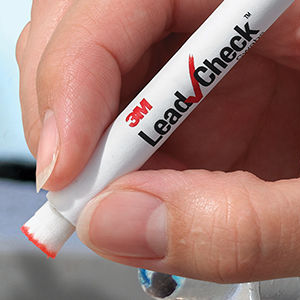 My rule of thumb has been to assume white bowls are safe and to check colored dinnerware with LeadCheck swabs. These are not considered as reliable as other forms of testing, but they are affordable and available. You can get them at any Home Depot or online.
My rule of thumb has been to assume white bowls are safe and to check colored dinnerware with LeadCheck swabs. These are not considered as reliable as other forms of testing, but they are affordable and available. You can get them at any Home Depot or online.
LeadCheck swabs are simple to use. You just rub the end of the swab against the bowl for thirty seconds and if there is lead the swab will show red. If no lead, the swab will remain white. These swabs now come in packs of 2 for about $10, so it’s more affordable to do these tests than in the past.
I used LeadCheck swabs to test two bowls that I have on my shelf and eat from every day. As I thought, they both tested negative for lead.
 |
|
| This bowl from Pier 1 is a salad or soup sized porcelain bowl. Here is a similar one from Pier 1 Imports and they come in several sizes. Note this one is made in China but still tests negative for lead. | This larger porcelain bowl from Crate & Barrel is a serving bowl. It’s called Essential Serving Bowl. It was in stock at my local Crate and Barrel store. This also comes in several sizes. Note this one is made in Indonesia and also tests negative for lead. |
I’ve become fond of putting my food in big white bowls and am actually retiring a lot of my dinnerware because I just don’t use it. White bowls are very simple and easily hold everything I eat.
I suggest purchasing white bowls and LeadCheck swabs and then bring the bowls home and test them immediately. If the swabs turn red, return the bowls and buy other bowls until you find bowls that test negative.
Here’s an article from the Chicago Tribune from 2007, when they gathered 20+ pieces of colorful dinnerware from local stores and had them tested for lead. None showed significant amounts of lead.
Many years ago I did a LeadCheck swab test on a colorful painted dinner plate for a TV show in Washington DC. And the swab did turn red right on cue. So I’ve seen the swabs test positive and negative. Mostly negative.
Is Real Salt Radioactive?

Question from Kathleen S.
Hi Debra,
My understanding of Real Salt is that it was mined in an area where nuclear testing had been done. My chiropractor said she would never use it, but recommend Celtic Salt. I read that Himalayan salt has problems too. So it seems very difficult to find any thing safe.
Debra’s Answer
I’ve done extensive research on salt and came to the conclusion that safest salts are those that come from underground sources. These are ancient sea beds that are not contaminated with modern pollution. So that would be Real Salt and The Original Himalayan Salt.
While I ate Celtic Salt for many years, I no longer eat any salts that come from the sea due to extensive pollution of sea water. Celtic Salt and some other salts are harvested from pristine areas and so are better than other sea salts, but underground salts are protected from modern pollution.
Here’s a response from Real Salt about your radiation question. Please share it with your chiropractor. “Nuclear tests were done in Nevada (not Utah) in the 1950’s, but it in terms of nuclear protection (time, distance, shielding), there is no possible contamination of our Real Salt.”
http://realsalt.com/real-salt-radiation/
Humble Seed
 “We are dedicated to providing the highest quality heirloom, non-GMO, non-hybrid, and organic seed varieties to those who choose to start from seed. “Exseeding expectations” is an affirmation we take seriously, and we believe that the most rewarding gardening experiences begin with seed.” They sell seeds in “banks” that include collections of seeds of certain types, such as hot peppers or culinary herbs. Plus compost tea for fertilizing.
“We are dedicated to providing the highest quality heirloom, non-GMO, non-hybrid, and organic seed varieties to those who choose to start from seed. “Exseeding expectations” is an affirmation we take seriously, and we believe that the most rewarding gardening experiences begin with seed.” They sell seeds in “banks” that include collections of seeds of certain types, such as hot peppers or culinary herbs. Plus compost tea for fertilizing.
Black and Bolyard
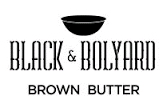 Brown butter made from non-gmo grasped cream. Brown butter is simply gently browned butter, which gives the butter a nutty flavor. Original unfiltered, or flavored with bay leaf or red chili. It’s an easy way to add a lot of flavor to any dish where you would use butter.
Brown butter made from non-gmo grasped cream. Brown butter is simply gently browned butter, which gives the butter a nutty flavor. Original unfiltered, or flavored with bay leaf or red chili. It’s an easy way to add a lot of flavor to any dish where you would use butter.
Tress of Antiquity
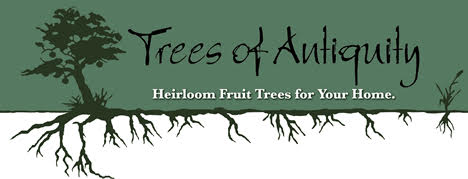 “Our nursery is centered on the rich history and future discoveries of our heirloom apples. Our nursery is very much a family effort; we plant, graft, prune, weed, water and harvest our trees with only a bit of outstanding seasonal assistance. For over 30 years we have been rediscovering the unique flavors, textures and lore that surround these fruit trees and we look forward to extending this experience to your home.” They also sell many other fruit trees and bushes and have an excellent search system that allows you to choose the correct plants for your zone, harvest period, uses, pollination and even spacing.
“Our nursery is centered on the rich history and future discoveries of our heirloom apples. Our nursery is very much a family effort; we plant, graft, prune, weed, water and harvest our trees with only a bit of outstanding seasonal assistance. For over 30 years we have been rediscovering the unique flavors, textures and lore that surround these fruit trees and we look forward to extending this experience to your home.” They also sell many other fruit trees and bushes and have an excellent search system that allows you to choose the correct plants for your zone, harvest period, uses, pollination and even spacing.
Copay Hills Orchard
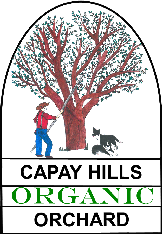 Unpasteurized, raw organic almonds, harvested into tarps that eliminates the soil exposure that requires almonds to be pasteurized. “We devote 100% of our farming time towards our 1400 trees to produce high quality organic almonds for you. We really are a family farm. All eight of us farm the property. We use sustainable, organic farming practices to ensure we are good stewards of our land.”
Unpasteurized, raw organic almonds, harvested into tarps that eliminates the soil exposure that requires almonds to be pasteurized. “We devote 100% of our farming time towards our 1400 trees to produce high quality organic almonds for you. We really are a family farm. All eight of us farm the property. We use sustainable, organic farming practices to ensure we are good stewards of our land.”
La Vigne Organics
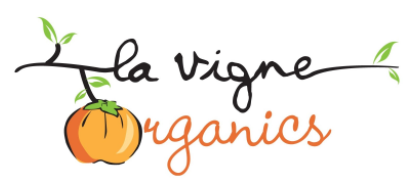 Biodynamically grown exotic fruits and specialty herbs. “We are a certified biodynamic, organic grove and we lovingly tend to more than 2,000 exotic citrus fruit trees and specialty herbs. Our grove is devoted to less-mainstream produce: Fuyu Persimmons, Nagami Kumquats, Kaffir Limes, Kaffir Lime Leaves, Bearss Limes, Minneolas, Blood Oranges, Meyer Lemons, Satsuma Tangerines, Mexican Guavas, Cara Cara Navels, Cherimoyas, Fremont and Pixie Tangerines, Passion Fruit, Sapotes, Pomegranates and Surinam Cherries.” Also herbs Lemongrass, Rosemary, Bay Leaves, Hoja Santos and Curry Leaves.
Biodynamically grown exotic fruits and specialty herbs. “We are a certified biodynamic, organic grove and we lovingly tend to more than 2,000 exotic citrus fruit trees and specialty herbs. Our grove is devoted to less-mainstream produce: Fuyu Persimmons, Nagami Kumquats, Kaffir Limes, Kaffir Lime Leaves, Bearss Limes, Minneolas, Blood Oranges, Meyer Lemons, Satsuma Tangerines, Mexican Guavas, Cara Cara Navels, Cherimoyas, Fremont and Pixie Tangerines, Passion Fruit, Sapotes, Pomegranates and Surinam Cherries.” Also herbs Lemongrass, Rosemary, Bay Leaves, Hoja Santos and Curry Leaves.
Keene Garlic
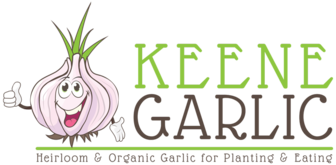 Heirloom and organic garlic for planting and eating. “All our garlic seed has been grown for generations in the US, are NON-GMO, grown organically, and are all heirloom varieties.”
Heirloom and organic garlic for planting and eating. “All our garlic seed has been grown for generations in the US, are NON-GMO, grown organically, and are all heirloom varieties.”
S and J Mandarin Grove
 If you’ve never had a mandarin orange or if you’ve only eaten mandarin oranges out of a can, you are in for a treat. Fresh mandarin oranges are one of my favorite citrus fruits. This small, family owned and operated organic mandarin orchard in the Sierra foothills of California will ship five varieties of mandarin oranges right to your door. They are picked at the peak of their maturity when ready to eat and rushed right to you.you
If you’ve never had a mandarin orange or if you’ve only eaten mandarin oranges out of a can, you are in for a treat. Fresh mandarin oranges are one of my favorite citrus fruits. This small, family owned and operated organic mandarin orchard in the Sierra foothills of California will ship five varieties of mandarin oranges right to your door. They are picked at the peak of their maturity when ready to eat and rushed right to you.you
Antimicrobials in Polyurethane Foam Used in Mattresses and Upholstered Furniture
 Often when I am researching one chemical or product I will get clues about other chemicals in products.
Often when I am researching one chemical or product I will get clues about other chemicals in products.
And so it was that I came across a mention of “antimicrobials in polyurethane foam” and so of course I had to go find out which antimicrobials are used in polyurethane foam.
And it took me about two minutes to find this:
www.ultra-fresh.com/antimicrobial-applications/foams
It’s the antimicrobial used in polyurethane foams. And they specifically boast they are “a proud supporter of CertiPUR-USA“.
It’s “US EPA registered, BPD compliant and Oeko-Tex listed,”
US EPA registered means it’s a registered pesticide. Here’s their EPA Registration
www3.epa.gov/pesticides/chem_search/ppls/010466-00028-20050927.pdf
WARNING
UItra-Fresh*DM-50, as received in its concentrated form, is a potentially dangerous material and should be handled with the care and common sense that be accorded to all biologically active • ( Ultra-Fresh”‘DM-50 – IDS Page 4 of4 March 1998 chemicals. Ultra-Fresb*DM-50 is corrosive to eyes and exposure.can cause skin irritation. May be fatal if swallowed. DQ not get in eyes, on skin, ~r on clothing. Wear goggles or faces shield and rubber gloves when handling. Avoid contamination offood. Treated effluent should not be discharged where it will drain into lakes, streams, ponds, or public water.
This is stamped ACCEPTED by the EPA, but nowhere does it say what the chemical is!
BPD compliant means it meets the requirements of the Biocidal Products Directive (BPD) which is a European Union directive regarding the placing of biocidal products on the market.
Oeko-Tex listed. It actually is Oeko-Tex listed, right here on this page:
OEKO-TEX Products with Biological Activity
It’s part of a group of active chemical products “which have been inspected by independent toxicologists and assessed as harmless to human health when used as indicated and intended. The safety assessments are based on information, test reports, recipes etc. which have been provided by the manufacturer for the product in question. The test reports taken into consideration for this assessment have been drawn up by accredited toxicological and/or dermatological institutes.”
The active chemicals products approved on the OEKO-TEX® list are in line with the latest European regulations, specifically with the Article 95 list of Biocidal Products Regulation No. 528.
In addition to Products with Biological Activity, other active chemical products are fiber materials with flame retardant properties and a list of accepted polymers without assessment which includes polyvinyl chloride.
I’m not sure this standard means anything at all. If all they are doing is certifying the materials meet government standards, then all products obeying the law would qualify. This isn’t the same standard as their Standard 100 for textiles.
Here’s a specification sheet for the antimicrobial that gives this warning:
Ultra-Fresh* Antimicrobial Additive is flammable. Keep away from heat, sparks and open flame. Use with adequate ventilation. May cause eye and skin irritation. Do not breathe vapour or spray. Wear suitable protective clothing such as gloves and eye and face protection,
And here is the MSDS
The MSDS reports a chemical in the Chemical Family Isothiazolinone and the listed ingredient is
2-N-Octyl-4-isothiazolin-3-one. And it turns out to be an antimicrobial that has very widespread use in a lot of consumer products. One of them being mildewcide in latex paint.
There is much concern about allergic contact dermatitis with this chemicals. Here is a summary of scientific studies about 2-N-Octyl-4-isothiazolin-3-one
Another Isothiazolinone, called Methylisothiazolinone (MIT) is known to be allergenic and cytotoxic, which has brought it to the attention of the European Union There the rate of people allergic to it is skyrocketing.
Here’s the Ultra-fresh entry the the Pesticide Action Network Pesticide Database.
Here it’s considered a “bad actor” product and says the active ingredient is Thiabendazole, which they identify as a carcinogen and a developmental or reproductive toxin.
Antimicrobials are designed to kill very tiny organisms. How can this be safe for humans? Our bodies are full of microorganisms.
What we know now is that there are antimicrobials in polyurethane foam and their safety is questionable.
Charlie’s Butter
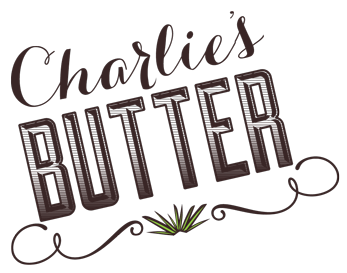 “A collection of delectable artisan pasture-fed butters made from only the finest ingredients. It all starts with butter from a small herd of cows that graze on the lush California coastal grasses. Wholesome organic spices and herbs are then combined with the butter, culminating in an extraordinary flavor experience.” Flavors like garlic-herb, cinnamon, honey, chili-lime and others all come packaged in glass jars.
“A collection of delectable artisan pasture-fed butters made from only the finest ingredients. It all starts with butter from a small herd of cows that graze on the lush California coastal grasses. Wholesome organic spices and herbs are then combined with the butter, culminating in an extraordinary flavor experience.” Flavors like garlic-herb, cinnamon, honey, chili-lime and others all come packaged in glass jars.
Pleasant Valley Ranch California Oranges
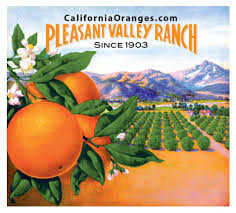 “Home of the world’s most delicious oranges!” Since 1909! Award-winning organic navel and valencia oranges, plus organic grapefruits, Minneola tangelos, and lemons.
“Home of the world’s most delicious oranges!” Since 1909! Award-winning organic navel and valencia oranges, plus organic grapefruits, Minneola tangelos, and lemons.
Avocado Organic
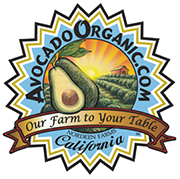 Certified organic California-grown Hass avocados straight from the farm. They are hand-picked, never gassed, and are bigger than other avocados. “Nordeen Organic Farm has produced fresh organic avocados for over 40 years in North County, San Diego. Our guarantee is that you will receive the healthiest, freshest avocados possible from our farm to your table. “ Ships November-July.
Certified organic California-grown Hass avocados straight from the farm. They are hand-picked, never gassed, and are bigger than other avocados. “Nordeen Organic Farm has produced fresh organic avocados for over 40 years in North County, San Diego. Our guarantee is that you will receive the healthiest, freshest avocados possible from our farm to your table. “ Ships November-July.
Avoganic
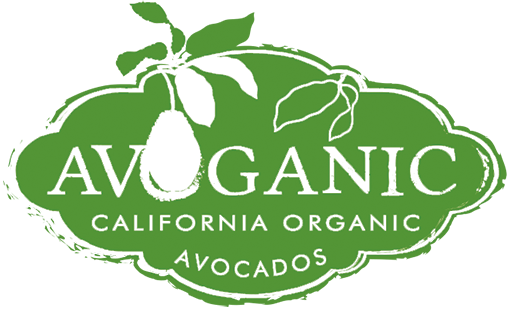 “The best avocados in the world! From our trees to your table in as little as 2 days.” Certified organic California Hass avocados and Meyer lemons.
“The best avocados in the world! From our trees to your table in as little as 2 days.” Certified organic California Hass avocados and Meyer lemons.
Fillmore Farms
 Raw, high quality, organic English Walnuts. grown in Northern California, one of the top English Walnut growing regions in the world. ” the climate, soil and water supply all combine to provide a wonderful growing environment. In addition to being grown with our existing organic farming methods, a portion of our crop is dried at ambient air temperature (ambient air dried) and never frozen. We believe this helps preserve the flavor and nutritional content of the raw walnut.” Certifications posted on website.
Raw, high quality, organic English Walnuts. grown in Northern California, one of the top English Walnut growing regions in the world. ” the climate, soil and water supply all combine to provide a wonderful growing environment. In addition to being grown with our existing organic farming methods, a portion of our crop is dried at ambient air temperature (ambient air dried) and never frozen. We believe this helps preserve the flavor and nutritional content of the raw walnut.” Certifications posted on website.
Thoughts on Earth Day 2017
 PHOTO CREDIT: Smoke Stacks Upper Ohio River by Gerry Ellis
PHOTO CREDIT: Smoke Stacks Upper Ohio River by Gerry Ellis
I first became aware of the “environment” in 1987. How that occurred is a whole story in itself, but
the result was that suddenly I became aware that the products I used every day not only could affect my health, but they could also affect the environment. And I began to explore this idea in a small newsletter printed on recycled paper called The Earthwise Consumer.
This was three years before “green” exploded in 1990 with the 20th anniversary of Earth Day and a little runaway bestselling book called 50 Simple Things You Can Do to Save the Earth. I happened to be there the day it was released. My booth was right next to theirs at some expo.
I wrote about both the health and environmental effects of consumer products for some years. The New York Times even called me “The Queen of Green.” But I came to a point where push came to shove and I decided I couldn’t consider everything. And I chose to go back to my roots and specialize in toxics. Because the green movement seemed not to be interested in toxics and health (green, after all, is about the environment), and someone needed to do this.
But more importantly, from my viewpoint, toxics is the most important environmental issue there is.
The whole environmental movement started because Rachel Carson wrote Silent Spring, which is about the poisoning of the environment by pesticides. The Environmental Protection Agency (EPA) was founded to protect the environment (not people) from toxics.
But our government doesn’t have a People Protection Agency (so I have to at least identify the toxic chemicals, find out where they are in consumer products, find the products that are free of these toxic chemicals, and make this known to the world so people who want to protect themselves and their loved ones from toxic exposures can have a choice).
If you’ve ever taken an airplane flight you have heard the stewardess say, “Put on your own oxygen mask first,” and then help others. Because without helping yourself and being healthy and able, you cannot help others.
And so for me, I decided to help get all the people of the world healthy first. Then we can help the environment. But as it turns out, every time each one of us makes the decision to not use a toxic product to help our own health, it also helps the environment.
On Easter morning I was thinking about what to write today, and I thought about a problem I’ve had for a number of years. The problem is how do I describe what I am working for without describing it as a negative. “Toxic-free” starts with the problem of toxics and says. “No. No toxics.” OK. A world without toxics.” What is that? What does it look like? What are we reaching for?
In the time it took for me to write this question in my journal, I had the answer.
Though I have a lot of attention on removing toxics from our homes and the marketplace of consumer products, that’s not what I’m really doing.
In my own mind and heart, I am aware of what I call “the world of Nature.” also known as “the environment.” For me, it’s a living, breathing, amazing ecosystem that once was pristine and now has been polluted by human activities.
So when I think of ‘toxic free” it’s a picture of our living planet, which includes all life processes and species, including us homo sapiens, without all the pollution. It’s a picture of us all belonging to this incredible system of life and supporting it with our actions instead of harming it. That’s what I’m reaching for. That’s what I’m imagining. That’s what I want in my heart of hearts.
The first step in healing from a poisoning is “remove the poison.” When we live toxic free, what we’re restoring is life. Our own human lives and life as a whole.

Sustainable Fashion?
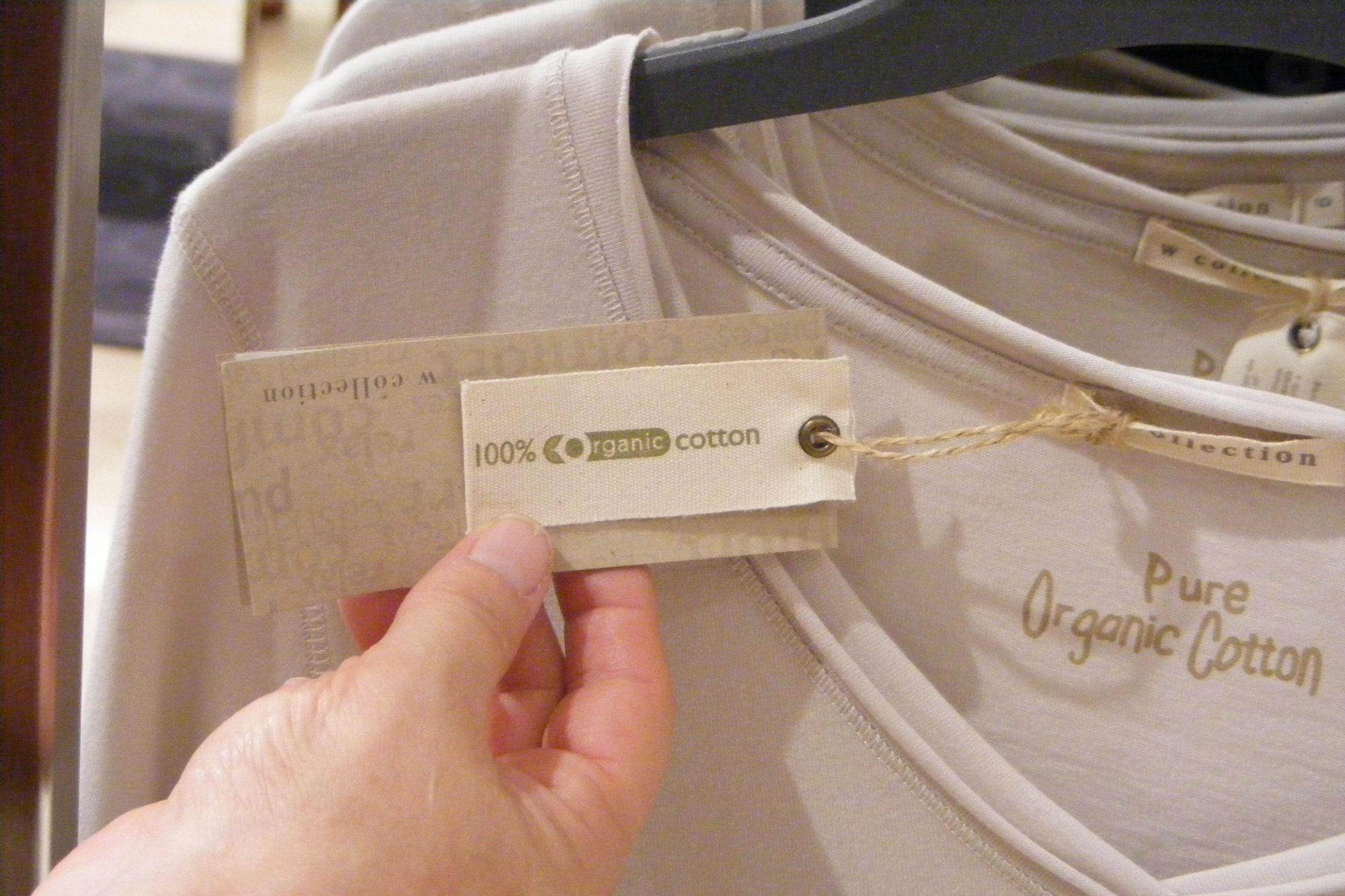
An article from the UK newspaper The Guardian last week reported on a partnership between the World Wildlife Fund (WWF) , the world’s largest conservation organization, and an London-based fashion community AwaytoMars to create “the world’s first 100% sustainable clothing line.”
The clothes will be made of a “newly designed” cotton fibre called Infinifed Fiber “that can be recycled an infinite number of times and which won’t, in theory, wear out.”
I couldn’t find more than that one page about this fiber, and no photos whatsoever, so I’m not sure if this is real or theoretical.
But I do know something about recycling paper, which is a similar process since it is recycling a natural cellulose material. You can’t infinitely recycle the same paper. You use a little material every time you recycle it. You have to keep adding new paper to mix with the old paper. Here’s a whole article about Why cotton is so difficult to recycle—and how clothing retailers hope to change that.
And I know something about making new fibers from cellulose. This is done every day. It’s called “rayon.” And you can’t recycle cellulose into fiber without a lot of chemicals. (Here’s another company also attempting to do this: Evrnu.
But here’s the bigger problem with this: it’s not sustainability.
Sustainability is about sustaining the life systems of planet Earth.
It’s about using the renewable resources that have been designed by Nature, in amounts that can be sustained by the system. Organic cotton is a perfect example of sustainability. You grow the cotton organically, and theoretically you could put that cotton right back into the field at the end of it’s useful life and it would regenerate the soil. That’s what a tree does. It pulls from the environment to make leaves, then drops it’s leaves back into the environment to restore the environment.
We should be supporting organic agriculture, not inventing new manmade processes.
Sustainability is also about not poisoning the system with toxic chemicals. Every time each one of us make a toxic-free choice, we are not only protecting our own health, we are also helping the environment.
Papa John’s Pizza Goes (a little bit) Organic
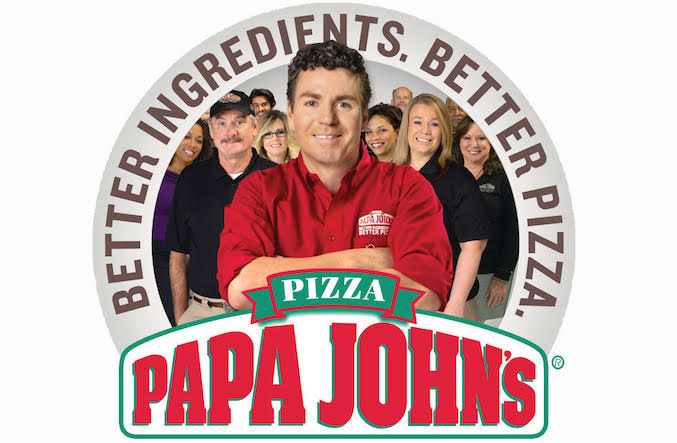
Pizza with a few organic ingredients isn’t new or unusual (type “organic pizza” into your favorite search engine and you’ll probably find a local pizzeria that has organic ingredients—I found one right close to me here in Florida with organic tomatoes and local ingredients).
But the news here is that Papa John’s— a chain pizza corporation—is doing an organic pilot program using organic Roma tomatoes, mushrooms, green peppers, and yellow onions.
It’s a step in the right direction.
Organic blogger Max Goldberg thinks this is important and significant.
Read his interview with Papa John’s Chief Ingredient Officer (that’s really his title).
LIVING MAXWELL: Papa John’s Pizza Makes the Decision to Go Organic — Why This is So Important
New Program Verifies “Glyphosate-Free”
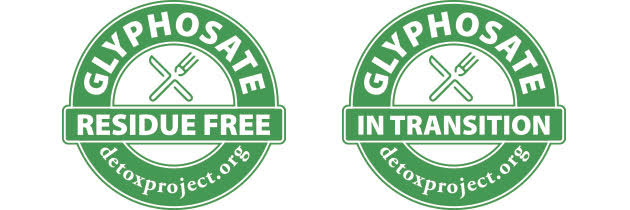
The Detox Project, who has been offering tests for humans to detex the presence of glyphosate pesticide in their bodies, is now moving into testing food for glyphosate residues and allowing the produce that passes to display the Detox Project glyphosate seal.
Last year they tested many popular processed foods for glyphosate residues and found m and published aa list of food products that do contain the pesticide in Glyphosate: Unsafe on Any Plate.
Now they are working on identifying the foods and food products that don’t contain residues of glyphosate.
They are currently inviting food producers to register for the process, so don’t rush to your local store and look for the seal.
There are two levels of verification.
Glyphosate Residue Free — “To be certified Glyphosate Residue Free, your product must have no glyphosate or AMPA residues down to the limits of laboratory detection (between 0.1 ppb and 20 ppb depending on the product), a standard that is tougher or the same as the U.S. Environmental Protection Agency’s Maximum Residue Limits (MRL).”
Glyphosate in Transition — “Glyphosate In Transition products have to show a low detection level (under 200 ppb of glyphosate and AMPA) in the first third party testing and then have to reduce this level to ‘Glyphosate Residue Free’ within a 2-year period.”
The transition seal tells consumers that a company is working toward eliminating glyphosate, which is good to know, but not good to eat. To me, “glyphosate in transition” means the food has been tested and it’s known to contain glyphosate.
It will be interesting to follow this and see if organic foods tested turn out to be glyphosate-free (as we assume they are) and who gets the transition rating.
LET’S DO SOMETHING ABOUT TOXIC AUTO INTERIORS!

I received the following email this week from a woman who wants to take some action to get toxics our of automobile interiors. I’m all for a collective effort on this and would like us all to work together on this. Please post in comments your support for this and any experiences you’ve had with toxic auto interiors, difficulties finding nontoxic cars, and anything else related. Thanks!
Interestingly, as I was looking for an image for this post, I found the image above on an article about stricter regulations on auto interiors in China! The article was published in The Hog Ring a place for auto upholstery professionals to read news, connect and talk shop” Maybe this is a place to start a discussion on this topic.
Question from Maria
Hi Debra,
I sued a Dealership and Mfg. for a brand new car that I bought that made me very ill.
I also filed as the first case with the government. they actually sent an independent inspector out who confirmed the toxins within the car.
I’ve been involved in these issues for approx. 30 years. I am looking for speakers, people that have experienced symptoms, etc. from new cars, any legislation. I would like to submit a proposal to our state to write laws, label cars as we do foods, investigate., witnesses , etc.
Any info., assistance, etc. would be appreciated.
Years ago EPA told me I was 7 years ahead of them in investigating the auto interiors and I was shocked to find out 20 years later that it still was not done.
I am willing to get this moving but need to get enough people to show there is a problem.
Thank you!
Unscented Bath Tissue
 This is the unscented bath tissue I use.
This is the unscented bath tissue I use.
Question from Kristal
Hi Debra,
I, along with many others, are having a terrible time finding bath tissue (toilet paper) that we can use. Charmin Basic worked well for all of us, but it has now been discontinued, and none of us have been able to find another tissue we can use without allergic reactions. Trying to find out what ingredients are causing this reaction is impossible, because they will not disclose ingredients contained in these products.
If you have any information, please share it…and in the meantime, I am planning on starting a petition to require ingredients to be disclosed on labels of all products that come in contact with the skin of consumers.
We also can’t find ingredients used in laundry detergents unless manufacturers choose to put them on their labels. I guess it’s not required. Any suggestions?
I subscribed to your page, but have not received a confirmation in my email yet so I can respond.
I have created a petition for Charmin to bring back Charmin Basic, so if you know anyone who might want to sign it and pass it on to others, that would be great. I did, at one time, manage to get a list of its ingredients, and I believe it contained Virgin Wood Pulp and a small amount of some kind of adhesive or glue to hold it together. Very few ingredients…three or less, is what I think they told me. I found 32 people who posted on Charmin’s facebook page who could not or would not use the replacements for various reasons, including many who had allergic reactions, and they could not find anything else on the market that was working for them. Just like me. Here’s a link to the petition:
www.ipetitions.com/petition/bring-back-charmin-basic
I am going to need to find people willing to sign a petition to submit to my legislators in Washington regarding requiring disclosure of ingredients on labels of all products that come in contact with skin, so I’m hoping to have my ducks in a row before I create the petition. I’d like to know I will have some support behind it. My thinking is that if they won’t tell you what is in these products, there is a good reason they are hiding that information.
Debra’s Answer
Good for you to do something about ingredients. I’m totally in agreement with you and will help however I can.
Did you see my recent post about Californians overwhelmingly in support of right-to-know legislation for cleaning product ingredients ?
We DO have a right to know all the ingredients in all products on the market. And we need to assert that right.
Food Safe Glass

Question from Chris
Hi Debra,
While looking at a large glass jar at Oriental Trading Wedding I noticed it was labeled “not food safe” use only wrapped candy. I was under the impression that all glass was food safe. I was reading your blog and am very curious niw about glass quality. Many of us store our foods in these jars.
Thanks.
Debra’s Answer
No, not all glass is food safe. There are many types of glass used for many purposes, each with it’s own characteristics.
The most common method of making glass is to heat raw materials into a molten liquid and then rapidly cool the liquid in such a way that the atoms remain in a random state.
The raw materials are various powders which include network formers, fluxing agents, property modifiers, fining agents, and colorants.
The two most common types of glass used in consumer kitchenware are soda-lime silicate glass and borosilicate glass.
Food safe glass is regulated by the federal Food & Drug Administration (FDA). Glass (and plastic) containers containers are consider “indirect food additives” by the FDA. These are substances that may come into contact with (and end up in) food from packaging or processing equipment, but are not intended to be added directly to food.
The FDA has determined that both borosilicate glass and soda-lime silicate glass are Generally Regarded as Safe (GRAS). The GRAS designation is given to substances added to food directly or indirectly that are considered to be safe by experts.
Here is a whole study about food-grade glass, prepared by The Glass Packaging Institute: Compliance of Glass Packaging with Human and Environmental Health and Safety Toxic—in—Packaging Requirements.
This document states:
Preference for glass has persisted throughout the ages and in all cultures due in large part to its safety, impermeability, and durability. In food packaging applications, glass has long been recognized as the gold standard, due in significant part to its being virtually inert, meaning that it does not react with other elements and forms no new compounds when it comes into contact with other chemical agents or compounds. As a result of this virtually inert quality, glass does not interact with the foods or beverages contained in it, and consequently does not affect the flavor of its contents. Similarly, glass is virtually impermeable to oxygen, so does not affect — and is indeed protective of — the freshness of its contents. Consequently, glass does not require the addition of any food additives or preservatives in order to maintain flavor or freshness, unlike many other food packaging materials. Glass has long been recognized as the preferred material for food packaging, due to this virtually inert quality and its protection of the food or beverage that it contains.
It also states:
Unlike other packaging materials, glass packaging is manufactured at extremely high heat with simple components, resulting in oxidation of most trace amounts of heavy metals that may be present in the raw production materials [italics mine]. For this reason, and because glass packaging is virtually inert, glass packaging properly does not present any significant health and safety or environmental concerns.
Therefore even if there were any heavy metal impurities in the raw materials, they would not be present in the finished glass product.
I haven’t read the entire 50-page document so there may be more relevant information. But these are the key items for this discussion.
Soda-lime-silicate glass is made from three ingredient—sand, lime and soda ash. No lead or other heavy metals are added to this glass for any reason. Borosilicate glass is made of by adding boric oxide to the basic soda-lime-silica mix.
Lead is added to glass to make it sparkle in the light. But this is very clearly labeled with lead warnings. This is limited to “cut crystal.” And the lead WILL leach into foods and beverages. Other types of decorative glassware may also contain lead and not be so labeled because it is not intended for contact with food.
For food storage, only use glass containers intended to be used as food containers. Those will be made with a food-safe glass.
Decorative glass items are usually NOT food safe and probably contain unknown substances that can leach into food.
Can I Keep My Old Carpet?
Question from Lynnette
Hi Debra,
I so appreciate what you do and your website. It has been a life saver with my MCS.
I have 25 year old carpeting. It was one of the triggers to getting MCS and other health issues but it took 10 years after installing to find out about MCS.
My question now is I still have the carpets in my house. I heard that they have off-gassed and safe after six years. That is why I didn’t get rid of them. But now I am wondering if they are exposing us to chemicals in the carpets that might break down and go into the air and we breath them. If they are safe after all these years I don’t want to replace them at this time but if bad I am ready to pull them up and replace with a safer flooring.
Are old carpets o.k. or not?
Thanks so much.
Debra’s Answer
In my experience as a consultant, who has been to the homes of many clients with MCS, I just got to a point where if someone had carpet of any age I said, “Take out the carpet!”
Often it’s the last thing to go, but people didn’t start recovering until after they finally took out the carpet.
I remember telling this to one woman and she said, “OK let’s do it right now!” And we both got on our hands and knees and starting pulling out the wall-to-wall carpet. When we finally had it out of the house she said, “Wow! I didn’t know this would make such a difference. I can breathe!”
It would be interesting for you to do the HomeLab.com air quality monitoring and see how your carpet registers on the air quality monitor. That would give you real data about what you need to do.
The problems with air quality from carpet goes way beyond toxic exposures from synthetic fibers and finishes. I once took up a carpet and there was a whole nest of carpenter ants eating a hole in the floor under the carpet. And there’s padding and dust and mold and padding…
If you’re ready, my advice would be to just remove it and get a good nontoxic floor that you can clean.
Need Unscented Spray for Air Conditioner Coils
Question from Audrey
Hi Debra,
I live in South Florida so as you know I use the air conditioning a lot.
I have a company that services it and they are coming for the yearly check up in early May. They use deodorizer to spray the coils which as a MCS person I don’t allow.
Would it be okay to have the ac coils sprayed with a mixture of 1/2 vinegar and 1/2 water?
If not, do you have any suggestions what can be used? Thanks.
Debra’s Answer
I actually got a new air conditioner a couple of years ago so I haven’t had it checked for a while.
I don’t know it there is some reason why you shouldn’t use vinegar in an air conditioner.
Readers, any experience with this?
Safest Over-the-Counter Antihistamine?
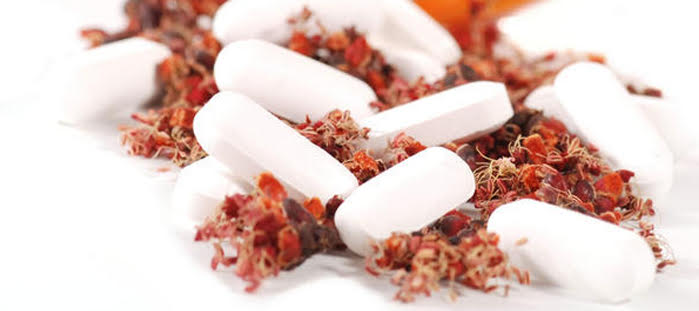
Question from Betty
Hi Debra,
I am curious to know what you think is the safest over-the-counter antihistamine to take. I’m sure it is best to avoid taking anything, but if someone has to, which do you think has the fewest additives, dyes, preservatives, etc.?
Thank you!
Debra’s Answer
I can’t remember the last time I took an antihistamine. Forty years I think.
I don’t think one OTC antihistamine is better than another. As far as I know there are no “natural” pharmaceuticals in the same sense that we have “natural” foods without artificial colors and flavors and presenvatives.
There are pharmaceuticals and there are natural alternatives.
My best suggestion is to search online for “natural antihistamines” or choose an alternative healthcare provider to help you with this issue. Herbs, homeopathy and other alternative practices can help get to the root cause of the problem you are seeking an antihistamine for.
Even some foods have an antihistamine effect.
You’ll find lots of natural solutions online.
Turmeric is often mentioned as an antihistamine, also vitamin C.
Readers, what do you use for antihistamine?
Behr Premium Plus Paint
 I first heard of this paint a about 18 months ago, when a reader called for a consultation because her contractor wanted to use this paint. It’s zero VOC and self-priming so I told her to go ahead. When she called me for another consultation, she thanked me profusely for recommending this paint. She said, “It has NO ODOR!” I’ve known this woman for years and she is pretty chemically sensitive.And, she said, they did really well at matching colors when you bring in an object for color matching. She was totally happy with this paint. As I write this, it’s now $23/gallon at Home Depot.
I first heard of this paint a about 18 months ago, when a reader called for a consultation because her contractor wanted to use this paint. It’s zero VOC and self-priming so I told her to go ahead. When she called me for another consultation, she thanked me profusely for recommending this paint. She said, “It has NO ODOR!” I’ve known this woman for years and she is pretty chemically sensitive.And, she said, they did really well at matching colors when you bring in an object for color matching. She was totally happy with this paint. As I write this, it’s now $23/gallon at Home Depot.
Pucker Urban Farm
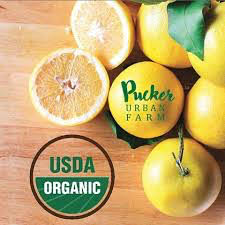 A small “boutique family farm delivering the highest quality lemons and lemon products. All of our organic fruit is hand picked fresh from our trees to fill your order. And their organic certification certificates are right on the home page.
A small “boutique family farm delivering the highest quality lemons and lemon products. All of our organic fruit is hand picked fresh from our trees to fill your order. And their organic certification certificates are right on the home page.
Corky’s Nuts
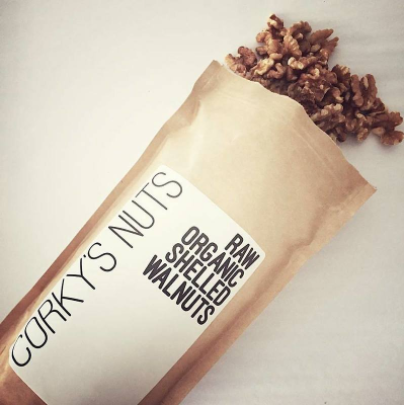 Fresh walnuts and cold-pressed walnut oil from a family-owned family farm in Northern California. “It all began back in 1975 when my parents acquired land in a small, beautiful valley located in Northern California…My “a-ha” moment came the first time I shared our organic walnuts with my husband, Eric. When we first started dating, he so kindly bought a bag of organic walnuts from a popular natural food chain as a thoughtful gesture. I ate one walnut and had to spit it out. It tasted old, dry, and bitter. If you’re reading this, I’m sure you can relate. I had never purchased walnuts from a store because I always had access to fresh ones…it was during this moment I realized, most of the general public does not have access to freshly harvested organic walnuts. That is, unless you know a walnut farmer. Well, now you do…Over the past 35 years, I’ve watched my father tend to his trees and the land as if they were his own children. There’s a lot of love and care which goes into growing our organic walnuts.”
Fresh walnuts and cold-pressed walnut oil from a family-owned family farm in Northern California. “It all began back in 1975 when my parents acquired land in a small, beautiful valley located in Northern California…My “a-ha” moment came the first time I shared our organic walnuts with my husband, Eric. When we first started dating, he so kindly bought a bag of organic walnuts from a popular natural food chain as a thoughtful gesture. I ate one walnut and had to spit it out. It tasted old, dry, and bitter. If you’re reading this, I’m sure you can relate. I had never purchased walnuts from a store because I always had access to fresh ones…it was during this moment I realized, most of the general public does not have access to freshly harvested organic walnuts. That is, unless you know a walnut farmer. Well, now you do…Over the past 35 years, I’ve watched my father tend to his trees and the land as if they were his own children. There’s a lot of love and care which goes into growing our organic walnuts.”
Z Shoes
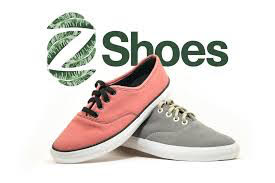 OK here we are…”Every Z Shoe starts with a comfortable sole made from 100% organic, fair trade, sustainably-harvested Amazonian Sharinga rubber…No plastic or synthetic fibers here. Z Shoes are made from 100% organic, fair trade sustainably-harvested cotton from the Solo y San Miguel regions of Peru…Even the beautiful coral and navy blue options available in the Z Shoes line up come from 100% organic plant dyes sourced from in the Amazon…Z Shoes is proud to offer the world’s finest line of fair trade and organic shoes. ”
OK here we are…”Every Z Shoe starts with a comfortable sole made from 100% organic, fair trade, sustainably-harvested Amazonian Sharinga rubber…No plastic or synthetic fibers here. Z Shoes are made from 100% organic, fair trade sustainably-harvested cotton from the Solo y San Miguel regions of Peru…Even the beautiful coral and navy blue options available in the Z Shoes line up come from 100% organic plant dyes sourced from in the Amazon…Z Shoes is proud to offer the world’s finest line of fair trade and organic shoes. ”
Eclectic Institute
 Quality herbs and supplements created by a naturopathic physician. “We start and end with whole, raw herbs. We start by growing herbs on our 90 acre certified organic farm, and then use freeze-drying to remove only the water. The end product is the whole herb in its original form still raw, intact, viable, and retaining the benefits of the fresh herb just as Mother Nature intended. We don’t believe in harsher forms of processing such as air or spray drying, chemical extraction, or standardized extracts which alter whole herbs, potentially excluding or destroying active constituents. Nestled at the base of Mt. hood in the pristine Oregon countryside, our family owned 90 acre certified organic farm is a leader in organic farming practices, utilizing crop rotation, mulching, composting, beneficial animal and insect allies, as well the naturally occurring rich volcanic soil. Eclectic Institute is devoted to researching and saving endangered herbs, and dedicates resources to growing many varieties of rare plants.”
Quality herbs and supplements created by a naturopathic physician. “We start and end with whole, raw herbs. We start by growing herbs on our 90 acre certified organic farm, and then use freeze-drying to remove only the water. The end product is the whole herb in its original form still raw, intact, viable, and retaining the benefits of the fresh herb just as Mother Nature intended. We don’t believe in harsher forms of processing such as air or spray drying, chemical extraction, or standardized extracts which alter whole herbs, potentially excluding or destroying active constituents. Nestled at the base of Mt. hood in the pristine Oregon countryside, our family owned 90 acre certified organic farm is a leader in organic farming practices, utilizing crop rotation, mulching, composting, beneficial animal and insect allies, as well the naturally occurring rich volcanic soil. Eclectic Institute is devoted to researching and saving endangered herbs, and dedicates resources to growing many varieties of rare plants.”
Turnco Wood Goods
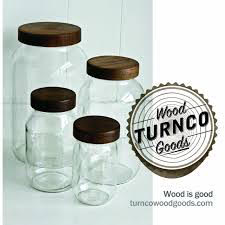 Handmade wooden items for the kitchen, including wood lids for glass jars, rolling pins, serving pieces and more. “We are a small batch manufacturing company, producing beautiful and functional pieces crafted for home use. A lot of thought goes into the style, quality and functionality of each product we make. It comes from our experience in working on custom projects, as well as honing our skills of efficiency and organization in making value added wood goods. All of our goods have a mix of simple modern design and warm nostalgia. When possible we use FSC certified lumber, and local hardwood like Madrona, Rock Elm, Big Leaf Maple and softwoods like western Red Cedar, Douglas Fir from our local lumberjack contacts here on Whidby Island.”
Handmade wooden items for the kitchen, including wood lids for glass jars, rolling pins, serving pieces and more. “We are a small batch manufacturing company, producing beautiful and functional pieces crafted for home use. A lot of thought goes into the style, quality and functionality of each product we make. It comes from our experience in working on custom projects, as well as honing our skills of efficiency and organization in making value added wood goods. All of our goods have a mix of simple modern design and warm nostalgia. When possible we use FSC certified lumber, and local hardwood like Madrona, Rock Elm, Big Leaf Maple and softwoods like western Red Cedar, Douglas Fir from our local lumberjack contacts here on Whidby Island.”
Terrasoul Superfoods
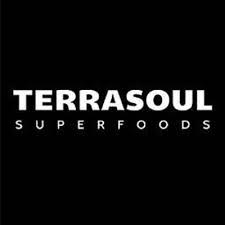 Certified organic raw superfoods from around the world, including cacao and vanilla, coconut, dried fruits and berries and their powders, grass juice powder, nutritional powders, nuts and seeds, seaweed and algae. “We are a small, family-run business located in Fort Worth, Texas. Terrasoul Superfoods was born out of our desire to find reliable and affordable sources of certified organic, fair trade, and sustainably-grown, nutrient-dense foods….We sell the foods we know and love.”
Certified organic raw superfoods from around the world, including cacao and vanilla, coconut, dried fruits and berries and their powders, grass juice powder, nutritional powders, nuts and seeds, seaweed and algae. “We are a small, family-run business located in Fort Worth, Texas. Terrasoul Superfoods was born out of our desire to find reliable and affordable sources of certified organic, fair trade, and sustainably-grown, nutrient-dense foods….We sell the foods we know and love.”
Furniture in the Raw
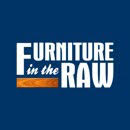 All wood furniture for every room in your home. “We offer customers finished, unfinished, and custom finished all wood furniture. We only sell furniture made with real wood that is particle board free.”
All wood furniture for every room in your home. “We offer customers finished, unfinished, and custom finished all wood furniture. We only sell furniture made with real wood that is particle board free.”
Willa Walker
 This is a simple yet smart tool that makes learning to walk even more fun for toddlers while saving adults the back-pain from always having to bend over to help them. It consists of a wooden handle, two ropes and two wooden rings.”WWs are made by 4 dads from 100% recycled, sustainably-farmed wood, cotton & coconut oil. Thats it! The child’s safety has always been our first priority when designing the WW. For this reason, we have chosen only high quality, traceable, non-toxic, materials for each component of the WW. Much detail and attention has been provided within the Instructions for Use. The Willa Walker meets Consumer Products Safety Commission (CPSC) safety standards.”
This is a simple yet smart tool that makes learning to walk even more fun for toddlers while saving adults the back-pain from always having to bend over to help them. It consists of a wooden handle, two ropes and two wooden rings.”WWs are made by 4 dads from 100% recycled, sustainably-farmed wood, cotton & coconut oil. Thats it! The child’s safety has always been our first priority when designing the WW. For this reason, we have chosen only high quality, traceable, non-toxic, materials for each component of the WW. Much detail and attention has been provided within the Instructions for Use. The Willa Walker meets Consumer Products Safety Commission (CPSC) safety standards.”
Asbestos Awareness
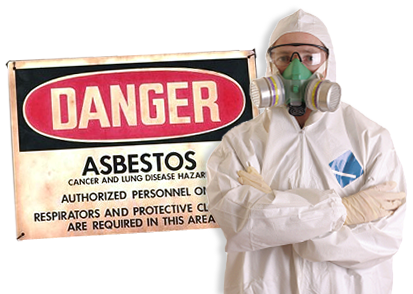
A reader alerted me to the fact that this week is Asbestos Awareness Week.
I haven’t written much about asbestos because I thought it was banned. In fact, on 12 July 1989, the EPA issued a final regulation banning most uses of asbestos, but not all. But the asbestos industry filed a lawsuit against the EPA and overturned the ban. Read more about the ban and current restrictions
Then Mesothelioma + Asbestos Awareness Center wants to see a future where a highly preventable cancer is virtually non-existent because people are more aware as to where the hazardous material can be found in their homes and occupations. They also provide information for those who are interested in learning more about the cancer as they themselves are experiencing it, or are students learning about other lung diseases as they enter health and medical fields.
While asbestos is not as widely used today as it was in the past, it is still found in some consumer products. Shannon also sent me an article about five products that still contain asbestos: car parts, insulation, construction materials, fireproof clothing, and potting soils. Potting soils? It’s the vermiculite in potting soils that may be contaminated with asbestos, as they occur in nature together.
Other domestic products that may contain asbestos include:
- Crock pot linings and around the power cord: especially those manufactured prior to 1980
- Ironing board covers either made with asbestos cloth or had asbestos fibers weaved into the material: those commonly sold around the 1960
- Hair dryer heating elements: those produced prior to 1979, though there is a possibility of foreign-made hair dryers still containing some amount of asbestos
And if you are looking for or living in an older home to avoid outgassing of VOCs from modern building materials, those older homes are the most likely to contain asbestos. Within those homes asbestos can be found in roofing tiles, vinyl flooring (installed prior to 1980), popcorn ceiling, piping, and wall boards.
Here’s another post on this blog about asbestos: Q&A: My Personal Experience with “Second -Hand” Asbestos.
Is There a Safe Wallpaper?
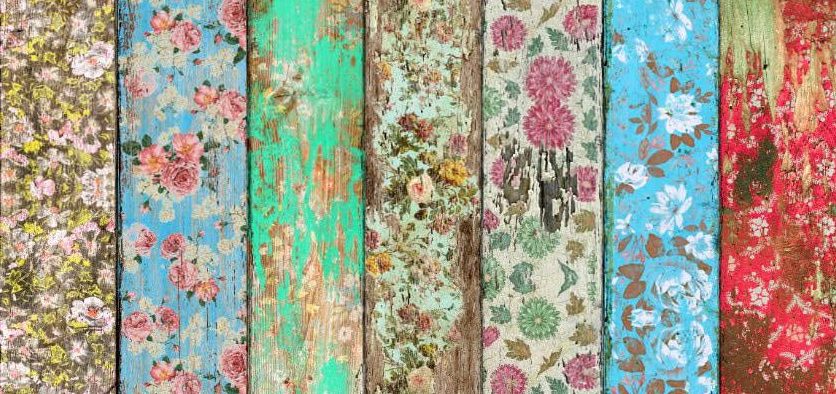
Question from Eliana
Hi Debra,
I am thinking of having wallpaper in my dining room. The selection of non-vinyl wallpaper is very slim. I am very green and keep indoor air as clean as I can. The question is, does vinyl off gas forever? The other question is, what about the glue they use to put it up. Is it sealed once the wallpaper is on and if not does it off gas forever?
It is so challenging to stay green in the world we live in.
Please let me know?
Thanks so much.
Debra’s Answer
Soft vinyl outgassed forever, to a lesser and lesser degree as time goes by. I really recommend no using vinyl wallpaper.
In addition, if you use air conditioning, mold can grow behind wallpaper which is a vapor barrier stopping hot and moist exterior air entering walls in summer.
Over the years I’ve seen a few uncoated paper wallpapers, but personally, if you want a pattern on the walls, I would stencil or hand paint the pattern with a nontoxic paint rather than try to deal with a paper wallpaper. I’m concerned it may mold.
Here is a very good list of the many different types of wallpapers, showing the materials—both synthetic and natural—used to make them:
Wallpaper Types, Textures, And Their Different Applications
And here is a resource about wallpaper adhesives:
Wallpaper Adhesives
The choices for paste seems to be vinyl, wheat, or cellulose.
So it IS possible to find a natural wallpaper and a natural paste, but I am concerned about mold, especially in a humid environment.
Chlordane Alert
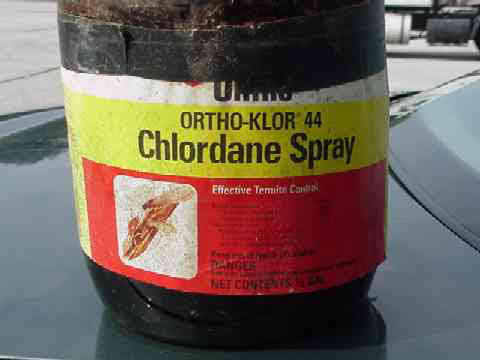
Question from Magda
Dear Debra,
Originally I thought that chlordane would not be a problem in and around houses any more. Until I came upon the study, article, and description of practices excerpted below.
Sorry to bring up such a long, unpleasant litany, now that spring is here and the daffodils are blooming!
But I live in Iowa and love gardening. It is very hard not to weed close to house walls, where a potential contmination would be worst, and has possibly been spread around through the building of porches, digging near foundations etc.
Do you know of any chlordane test except the one offered by Dr. Richard A. Cassidy of Toxfree, who also put the mentioned practices described below on the internet?
Thank you very much in advance. Thank you also for helping us ordinary people (who do not know science) live healthier lives.
Magda
STUDY
Health Dangers of Chlordane
by Dr. Edward Group DC, NP, DACBN, DCBCN, DABFM
[schema] published + updated Published on March 14, 2013, Last Updated on May 28, 2013
The University of Iowa examined soil samples and discovered that Cedar Rapids Iowa had chlordane soil contamination almost as severe as urban areas of China.
References
References:
Hedley AJ, Hui LL, Kypke K, Malisch R, van Leeuwen FX, Moy G, Wong TW, Nelson EA. Residues of persistent organic pollutants (POPs) in human milk in Hong Kong. Chemosphere. 2010 Apr;79(3):259-65. doi: 10.1016/j.chemosphere.2010.01.047. Epub 2010 Mar 2.
Bao LJ, Maruya KA, Snyder SA, Zeng EY. China’s water pollution by persistent organic pollutants. Environ Pollut. 2012 Apr;163:100-8. doi: 10.1016/j.envpol.2011.12.022. Epub 2012 Jan 11. Review.
Martinez A, Erdman NR, Rodenburg ZL, Eastling PM, Hornbuckle KC. Spatial distribution of chlordanes and PCB congeners in soil in Cedar Rapids, Iowa, USA. Environ Pollut. 2012 Feb;161:222-8. doi: 10.1016/j.envpol.2011.10.028. Epub 2011 Nov 26.
Mast MA, Alvarez DA, Zaugg SD. Deposition and accumulation of airborne organic contaminants in Yosemite National Park, California. Environ Toxicol Chem. 2012 Mar;31(3):524-33. doi: 10.1002/etc.1727. Epub 2012 Feb 6.
Morrissey CA, Pollet IL, Ormerod SJ, Elliott JE. American dippers indicate contaminant biotransport by Pacific salmon. Environ Sci Technol. 2012 Jan 17;46(2):1153-62. doi: 10.1021/es2028058. Epub 2011 Dec 23.
Lopez J, Boyd D, Ylitalo GM, Littnan C, Pearce R. Persistent organic pollutants in the endangered Hawaiian monk seal (Monachus schauinslandi) from the main Hawaiian Islands. Mar Pollut Bull. 2012 Nov;64(11):2588-98. doi: 10.1016/j.marpolbul.2012.07.012. Epub 2012 Aug 9.
Everett CJ, Matheson EM. Biomarkers of pesticide exposure and diabetes in the 1999-2004 national health and nutrition examination survey. Environ Int. 2010 May;36(4):398-401. doi: 10.1016/j.envint.2010.02.010. Epub 2010 Mar 17.
Goldner WS, Sandler DP, Yu F, Hoppin JA, Kamel F, Levan TD. Pesticide use and thyroid disease among women in the Agricultural Health Study. Am J Epidemiol. 2010 Feb 15;171(4):455-64. doi: 10.1093/aje/kwp404. Epub 2010 Jan 8.
Vogt R, Bennett D, Cassady D, Frost J, Ritz B, Hertz-Picciotto I. Cancer and non-cancer health effects from food contaminant exposures for children and adults in California: a risk assessment. Environ Health. 2012 Nov 9;11:83. doi: 10.1186/1476-069X-11-83.
Sakamoto K, Nishizawa H, Manabe N. Behavior of pesticides in coffee beans during the roasting process. Shokuhin Eiseigaku Zasshi. 2012;53(5):233-6.
ARTICLE
Environ Pollut. 2012 Feb;161:222-8. doi: 10.1016/j.envpol.2011.10.028. Epub 2011 Nov 26.
Spatial distribution of chlordanes and PCB congeners in soil in Cedar Rapids, Iowa, USA.
Martinez A1, Erdman NR, Rodenburg ZL, Eastling PM, Hornbuckle KC.
Author information
Department of Civil & Environmental Engineering, IIHR-Hydroscience and Engineering, The University of Iowa, 4105 SC, Iowa City, IA 52242, USA.
Residential soils from Cedar Rapids, Iowa, USA were collected and analyzed for chlordanes and polychlorinated biphenyls (PCBs). This study is one of the very few urban soil investigations in the USA. The chlordanes concentrations ranged from 0 to 7500 ng g(-1) dry weight (d.w.), with a mean and standard deviation of 130 ± 920 ng g(-1) d.w., which is about 1000 times larger than background levels. ΣPCB concentrations ranged from 3 to 1200 ng g(-1) d.w., with a mean and standard deviation of 56 ± 160 ng g(-1) d.w. and are about 10 times higher than world-wide background levels. Both groups exhibit considerable variability in chemical patterns and site-to-site concentrations. Although no measurements of dioxins were carried out, the potential toxicity due to the 12 dioxin-like PCBs found in the soil is in the same order of magnitude of the provisional threshold recommended by USEPA to perform soil remediation.
Copyright © 2011 Elsevier Ltd. All rights reserved.
PRACTICES
Information provided by
Richard W. Pressinger (M.Ed.), Wayne Sinclair, M.D.
How to Correct Chlordane Home Contamination
Application to Outside Wood Surfaces
Chlordane was frequently applied to the outside wood surfaces of many homes built before 1988. This would have been done because of an actual termite problem or as a preventive safeguard from a worried homeowner. Under first consideration, the application to the outside of the home would not appear as a problem, however, as described in research on the chlordane web site, conducted by Dr. Kaye Kilburn of the the University of California, even outdoor applications of the chemical can find their way indoors to contaminate the interior to a level that can cause a variety of health problems from increased infections to increases in many neurological disorders including – anger, migraine headaches and depression.
Correction Procedure
The least expensive way to correct contamination of the exterior wood surfaces of a home is to seal the wood with a hard, enamel based paint. The most efficient method for correcting this problem is to identify which side of the home the problem exists and to then replace the contaminated wood pieces. If the home is constructed of 4×8 sheets of plywood siding, these sheets can be easily replaced for a materials cost of about $25.00 per sheet. Check with the pest control company who applied the chlordane and ask if their records show where chlordane was applied.
Infiltration up through the Foundation of the Home
This is the same route that radon has been found to contaminate homes throughout the U.S. When a home was built before 1988, standard procedure was to literally saturate 100 gallons of chlordane into the soil per 1000 square feet of home area just before the concrete foundation was poured. Therefore, a 2000 square foot home would have 200 gallons of chlordane saturated into the soil. After several years of “settling,” cracks form in the foundation and basement walls or around plumbing pipes which has been found to allow for entry of the chemical into the home.
Correction Procedure
Success has been shown with underground infiltration problems by simply identifying where the cracks in the foundation are located and sealing these with an acrylic caulking or similar compound. It is also recommended to caulk around all plumbing pipe entry points through the foundation. As chlordane was often concentrated in the outer one or two foot perimeter just underneath the foundation, there needs to be a good caulking seal at the point where the wall meets the floor
Attic Contamination
As the attic of a home is comprised of wooden 2×4 support beams, these were often sprayed with chlordane by a pesticide company to ward off future termite problems. Unfortunately, when the applicator is spraying the beams, the chemical can easily drip onto the ceiling drywall sheets that were nailed to the 2×4’s. Drywall is made of rock powders that act like a sponge, quickly absorbing the chemical and then outgas the chlordane into the living area below. Contamination would then occur to the area below which could be either the kitchen, living room or bedroom.
Correction Procedure
Ceiling drywall that has soaked up chlordane due to an attic application of chlordane can be widespread. Ceiling drywall can be purchased inexpensively in 3/8 inch thicknesses for around $5.00 for a 4×8 foot sheet. It is recommended that these be placed over existing ceiling drywall or to completely remove the existing drywall and to then apply new drywall.
Accidental Spills
The research has documented spills of chlordane containers occurring during testing research and has certainly happened to an unknown percentage of homes built before 1988. The spills could range from a few ounces to one gallon or 55 gallon containers. If one room registers a much higher chlordane level than another room – the possibility of a chlordane spill should be considered.
Correction Procedure
If a significant amount of chlordane has been spilled onto any inside flooring the two correction procedures in order of effectiveness include – painting the floor with an enamel based paint or laying ceramic or hard vinyl tile over the contaminated area.
Normal Application Residue
Although chlordane was routinely used outside the home up through March of 1988, it was often used for the indoor control of roaches and ants up until 1981. Chlordane was easily purchased by homeowners from department stores before this date as an effective roach and ant pesticide. Indoor areas routinely treated with chlordane include underneath the kitchen sink, behind the refrigerator, behind the dishwasher and along baseboards throughout the bedrooms. Sometimes the chemical odor of chlordane underneath a kitchen sink is “overwhelming” due to this area receiving repeated chlordane applications. Chlordane contamination still occurs today as many “garden/tool sheds” still have bottles of outdated chlordane on the shelves.
Correction Procedure
If contamination under the kitchen sink is suspected, perform a chlordane air test underneath the sink. High levels found here can be “sealed in” using new plywood or if air chlordane contamination is exceptionally high, the homeowner may be better off replacing the old counter top with a new one. Baseboards along the floor can be sealed with an enamel paint or can be replaced at a cost of 30 cents to $1.00 per foot.
Debra’s Answer
Thank you for all this information Magda. Chlordane is a very toxic pesticide and it’s important to know it’s still a hazard to watch out for.
CDC Issues New Warning: No Safe Blood Level for Lead
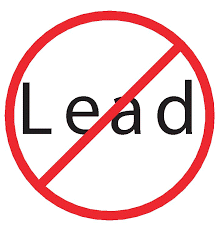
In January, the Centers for Disease Control (CDC) issued a new Fact Sheet for Blood Lead Levels in Children.
The Fact Sheet says:
Protecting children from exposure to lead is important to lifelong good health. Even low levels of lead in blood have been shown to affect IQ, ability to pay attention, and academic achievement. And effects of lead exposure cannot be corrected.
The most important step parents, doctors, and others can take is to prevent lead exposure before it occurs.
On the CDC website they say, ” No safe blood lead level in children has been identified.”
The Fact Sheet gives tips for parents on how they can protect their children from exposures to lead.
Microban Exposure From Breathing?
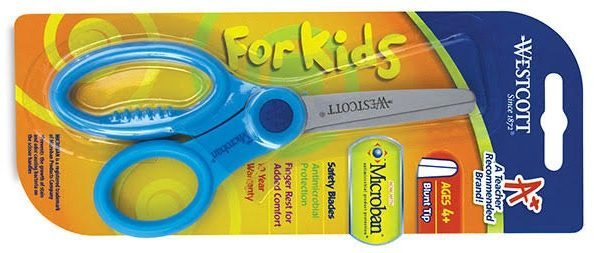 Microban is now on all kinds of products kids and adults are touching every day.
Microban is now on all kinds of products kids and adults are touching every day.
Question from Mary
Hi Debra,
My assistant just bought a floor pad for me that says “microban” on the label.
I know that microban is an antimicrobial, but since it will be 5 feet from my nose, I don’t suppose there is a need to be concerned about toxicity. However, if it wears away like my old pads do we’ll be tracking the dust onto the living room carpet. But then I don’t sit on the floor so maybe that’s not an issue either. I would not buy a Rubbermaid dish drainer because it has microban, but this is different.
In terms of the microban, do you think it is risky to have these pads on the kitchen floor?
Thanks for your input.
Debra’s Answer
This is a very good question.
I had to look this one up because exposures can happen through breathing, eating or drinking, or skin contact. And certainly if microban requires skin contact for it to get into your body, breathing it wouldn’t be an issue. Like stainless steel, for example. Perfectly fine to breathe, but it will release heavy metals into food or water.
Microban is a trade name for the chemical triclosan, so I looked up triclosan.
The primary route of entry is through the skin from personal care products and ingestion from dental care products.
Warnings from various manufacturers are limited to “skin irritation” and “serious eye irritation.”
I found an MSDS that says that inhalation is not a route of entry for triclosan in an antibacterial soap.
So this is beginning to sound like there isn’t much exposure to triclosan found on flooring pads.
How Antibiotics and Antibacterials are Compromising our Health
 My guest today is Martin J. Blaser, MD, author of Missing Microbes: How the Overuse of Antibiotics Is Fueling Our Modern Plagues. We’ll be talking about how the massive increases in the developed world of “modern plagues”—such as obesity, type 1 diabetes, asthma, allergies, esophageal cancer, celiac disease, Crohn’s disease, ulcerative colitis, and autism—are related to loss of diversity of the complex—and crucially important—ecosystem of microorganisms within our bodies on which we all depend. As diversity diminishes, our immune systems are compromised, and we become much more susceptible to new infections. And this loss of micro-organism diversity is due to the use of wide use of antibiotics and products that contain antibacterials such as triclosan.
My guest today is Martin J. Blaser, MD, author of Missing Microbes: How the Overuse of Antibiotics Is Fueling Our Modern Plagues. We’ll be talking about how the massive increases in the developed world of “modern plagues”—such as obesity, type 1 diabetes, asthma, allergies, esophageal cancer, celiac disease, Crohn’s disease, ulcerative colitis, and autism—are related to loss of diversity of the complex—and crucially important—ecosystem of microorganisms within our bodies on which we all depend. As diversity diminishes, our immune systems are compromised, and we become much more susceptible to new infections. And this loss of micro-organism diversity is due to the use of wide use of antibiotics and products that contain antibacterials such as triclosan. 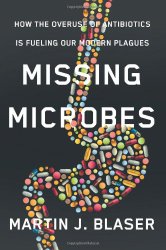 Dr. Blaser has studied the role of bacteria in human disease for more than thirty years. He is the director of the Human Microbiome Program at New York University, the former president of the Infectious Diseases Society of America, and has held major advisory roles at the National Institutes of Health. He cofounded the Bellevue Literary Review, and his work has been written about in many newspapers and journals, including The New Yorker, Nature, The New York Times, The Washington Post, and The Wall Street Journal. He lives in New York City. www.martinblaser.com.
Dr. Blaser has studied the role of bacteria in human disease for more than thirty years. He is the director of the Human Microbiome Program at New York University, the former president of the Infectious Diseases Society of America, and has held major advisory roles at the National Institutes of Health. He cofounded the Bellevue Literary Review, and his work has been written about in many newspapers and journals, including The New Yorker, Nature, The New York Times, The Washington Post, and The Wall Street Journal. He lives in New York City. www.martinblaser.com.
The Dangers of Antimicrobials and How to Choose Products Without Them
 My guest today is Larry Plesent, Founder of Vermont Soap. We’re going to talk about why you shouldn’t use toxic antimicrobials, which products contain them and where you can find antimicrobial-free alternatives, and some toxic free ways to kill germs. Vermont Soap makes “100% natural and non-toxic alternatives to the chemical based personal care products now in general use, including; handmade bar soaps for sensitive skin, anti-aging products, 100% natural shower gels, castile liquid soaps and non-toxic cleaners. Most products made by Vermont Soap are certified to USDA organic standards.” Larry is also a writer,philosopher, restaurateur and farmer. www.debralynndadd.com/debras-list/vermont-soap
My guest today is Larry Plesent, Founder of Vermont Soap. We’re going to talk about why you shouldn’t use toxic antimicrobials, which products contain them and where you can find antimicrobial-free alternatives, and some toxic free ways to kill germs. Vermont Soap makes “100% natural and non-toxic alternatives to the chemical based personal care products now in general use, including; handmade bar soaps for sensitive skin, anti-aging products, 100% natural shower gels, castile liquid soaps and non-toxic cleaners. Most products made by Vermont Soap are certified to USDA organic standards.” Larry is also a writer,philosopher, restaurateur and farmer. www.debralynndadd.com/debras-list/vermont-soap
Nontoxic Hard Case for Glasses and Sunglasses?
Question from Rebecca
Hi Debra,
Do you have any suggestions on hard cases for glasses that are non-toxic?
The case I have for my sunglasses smells like it is off gassing possibly formaldehyde (from glues?). I can smell it on the plastic frames when I put them on my face. Ugh.
Any good suggestions for hard case?
Debra’s Answer
I don’t have a suggestion because I don’t use a hard case for my glasses. I’m usually wearing them or they are on top of my head.
I haven’t even looked at hard cases for years.
Readers, any suggestions?
POLL: Californians Overwhelmingly Support Right to Know Legislation for Cleaning Product Ingredients

Proposals in Cleaning Product Right to Know Act (Senate Bill 258) enjoy strong bipartisan support
SACRAMENTO, CA – A new poll shows California voters overwhelmingly support legislation to require ingredient labeling on cleaning products sold in the state. Sen. Ricardo Lara (D-Bell Gardens) introduced the Cleaning Product Right to Know Act of 2017 (Senate Bill 258) to require detailed ingredient labels on cleaning products sold in the state.
The Cleaning Product Right to Know will give full disclosure about what is in the products millions of families and domestic workers use every day.
“It is clear that Californians want to know what is in their cleaning products so they can make good choices for themselves and their families,” said Sen. Lara. “Unknown chemicals are lurking in our homes and workplaces, and it’s the reason janitors and domestic workers have higher rates of asthma, respiratory illnesses and birth defects. The Cleaning Product Right to Know Act will protect the health and safety of workers and all families.”
Major findings of the poll include:
More than three-quarters of voters (78%) are supportive of legislation to label cleaning product chemicals.
Support crosses party lines with 87% of Democrats, 76% of no-party voters and 67% of Republicans in favor.
Nearly three-quarters of voters (72%) would be more likely to support their legislator if they backed the proposed bill.
As voters learn more, their support for the proposed policy solidifies.
Fairbank, Maslin, Maullin, Metz & Associates (FM3) conducted the poll of 1,000 registered California voters from January 15-19, 2017, before Senate Bill 258 was introduced.
Click here to read the Cleaning Product Right to Know Act: www.leginfo.legislature.ca.gov/faces/billNavClient.xhtml?bill_id=201720180SB258
This is important because cleaning products are not required by law to list their ingredients, even though they are some of the most toxic products on the market. — Debra
JUstenbois
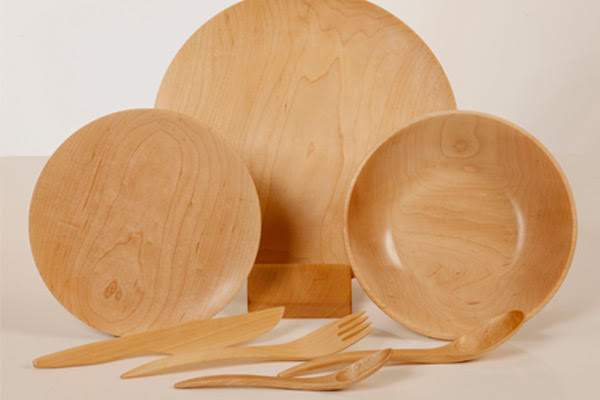 Wooden dinnerware and utensils, handmade from sustainably-harvested maple, all in one piece without gluing. Why wood? “Wood preserves the integrity of the foods—the neutrality—without contact with metals which emits certain tastes and degradation….Contact with wood is organic and warm. Sound manipulation is discreet and pleasant. The food slides least movement. And, for the taste it is like eating with chopsticks.” …During a simple meal, on the table there was a piece of wood and an x-acto blade… soon after a knife was born, and a tomato finely sliced! For the following 6 months, twelve families agreed to trade their metal forks for wooden forks. The comments were outstanding. A year of research and development followed. In 2004 JUstenbois was born. A team of 9 artisans worked at creating maple plates and utensils for your dining room table. These settings, finely chiseled out of selected cultivated sugar maple trees, have a very long life.” Nearly 9,000 utensils are made from one tree.
Wooden dinnerware and utensils, handmade from sustainably-harvested maple, all in one piece without gluing. Why wood? “Wood preserves the integrity of the foods—the neutrality—without contact with metals which emits certain tastes and degradation….Contact with wood is organic and warm. Sound manipulation is discreet and pleasant. The food slides least movement. And, for the taste it is like eating with chopsticks.” …During a simple meal, on the table there was a piece of wood and an x-acto blade… soon after a knife was born, and a tomato finely sliced! For the following 6 months, twelve families agreed to trade their metal forks for wooden forks. The comments were outstanding. A year of research and development followed. In 2004 JUstenbois was born. A team of 9 artisans worked at creating maple plates and utensils for your dining room table. These settings, finely chiseled out of selected cultivated sugar maple trees, have a very long life.” Nearly 9,000 utensils are made from one tree.
Variya
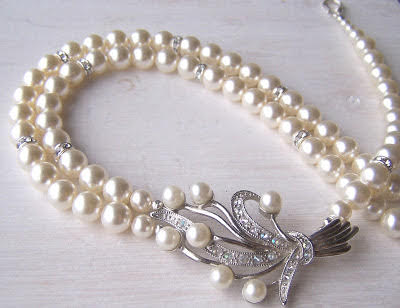 Nickel-free earring made from titanium and bioblum, for metal allergies and extra sensitive skin. “I also specialize in Custom Bridal Jewelry.” If you’ve given up finding beautiful jewelry you can wear for your wedding, look here.
Nickel-free earring made from titanium and bioblum, for metal allergies and extra sensitive skin. “I also specialize in Custom Bridal Jewelry.” If you’ve given up finding beautiful jewelry you can wear for your wedding, look here.
CocoTherapy
 All the health benefits of coconut in products designed for pets. “CocoTherapy Organic Virgin Coconut Oil and Coconut Chips are 100% all natural, made of human-grade ingredients. They are made in an USDA organic inspected human food facility.
All the health benefits of coconut in products designed for pets. “CocoTherapy Organic Virgin Coconut Oil and Coconut Chips are 100% all natural, made of human-grade ingredients. They are made in an USDA organic inspected human food facility.
Ergo Workspace
 I saw one of these desks at a friend’s house and then came across it online. It’s a desk that allows you to adjust desk height with electronic controls (or manual crank), so you can adjust you desk from sitting to standing and back to sitting in mere seconds. Plus it’s just a beautiful desk with a really smooth finish. I don’t see any materials on the website and no contact information, but the thing is you can buy the metal base separately and then mix and match the tops, so I’m thinking that you could put your own top on it as well, made from any material you choose. The electronic controls sit discreetly at arm’s length below the top on the right side. It’s a pretty cool desk!
I saw one of these desks at a friend’s house and then came across it online. It’s a desk that allows you to adjust desk height with electronic controls (or manual crank), so you can adjust you desk from sitting to standing and back to sitting in mere seconds. Plus it’s just a beautiful desk with a really smooth finish. I don’t see any materials on the website and no contact information, but the thing is you can buy the metal base separately and then mix and match the tops, so I’m thinking that you could put your own top on it as well, made from any material you choose. The electronic controls sit discreetly at arm’s length below the top on the right side. It’s a pretty cool desk!
Khroma Herbal Products
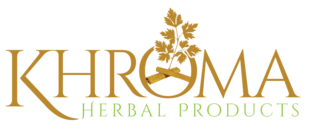 All organic herbal health products in glass bottles. “Because we love our planet (and our customers), we only use organic ingredients…We do not package any of our products in plastic and we don’t use any artificial coloring, preservatives, or dyes. It’s pure natural goodness…Every product we sell is carefully crafted to meet the highest standards for purity and potency. ”
All organic herbal health products in glass bottles. “Because we love our planet (and our customers), we only use organic ingredients…We do not package any of our products in plastic and we don’t use any artificial coloring, preservatives, or dyes. It’s pure natural goodness…Every product we sell is carefully crafted to meet the highest standards for purity and potency. ”
ChickenFuel
![]() Composted chicken manure for organic gardening. “made in Creswell, Oregon, following best practices to ensure a top quality, balanced and consistent fertilizer and soil conditioner that will benefit anything from tomatoes to houseplants.” They are a Registered Organic Input Material and are OMRI listed for organic use. Use this to make compost tea to fertilize your garden for excellent results.
Composted chicken manure for organic gardening. “made in Creswell, Oregon, following best practices to ensure a top quality, balanced and consistent fertilizer and soil conditioner that will benefit anything from tomatoes to houseplants.” They are a Registered Organic Input Material and are OMRI listed for organic use. Use this to make compost tea to fertilize your garden for excellent results.
Sisal Rugs Direct
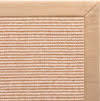 All kinds of natural fiber area rugs at affordable prices, some even without dyes. They offer a choice of bindings, including canvas, cotton, linen and others. You can choose your rug material, color, shape, border material, border color, and size. Choose 100$ sisal, sisal/wool. 100$ wool, jute, seagrass, hemp.
All kinds of natural fiber area rugs at affordable prices, some even without dyes. They offer a choice of bindings, including canvas, cotton, linen and others. You can choose your rug material, color, shape, border material, border color, and size. Choose 100$ sisal, sisal/wool. 100$ wool, jute, seagrass, hemp.
Stubbees
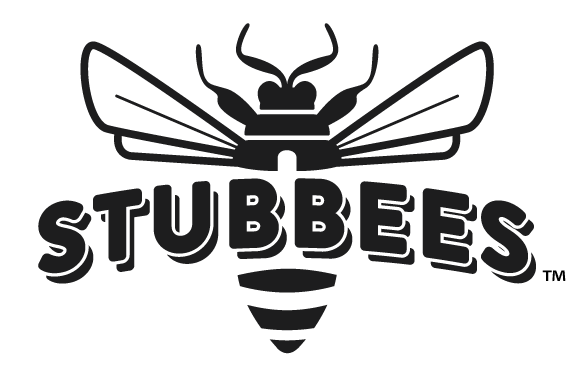 Raw pesticide-free honey mixed with organic fruits to make a flavorful spread that can be used as a sweetener or an alternative to jam. Made directly by beekeepers from USA honey. “Stubbees uses only raw honey that is produced right here within the United States and only from hives located at nature preserves and farms that are free of pesticides as well. By sourcing smart we are not only able to promote honeybee health but jobs here at home as well! ”
Raw pesticide-free honey mixed with organic fruits to make a flavorful spread that can be used as a sweetener or an alternative to jam. Made directly by beekeepers from USA honey. “Stubbees uses only raw honey that is produced right here within the United States and only from hives located at nature preserves and farms that are free of pesticides as well. By sourcing smart we are not only able to promote honeybee health but jobs here at home as well! ”
Sladust
 All-wool Dry mops and hand dusters. This is just one of those products from the past that is simple, natural and useful for cleaning: wool dusters. “Comes complete with a removable natural lacquered wood handle. This is an all natural product and does NOT require any chemical treatment, nor expensive disposable pads. Replacement heads are available, which are also washable and reusable….The Slack Family continues a tradition of success in the face of progress with a fourth generation family business. Sla-Dust Wool Dust Mop products are the highest quality, literally the “World’s Finest Dust Mops.” Great for dusting tile, laminates, marble and hard wood floors!”
All-wool Dry mops and hand dusters. This is just one of those products from the past that is simple, natural and useful for cleaning: wool dusters. “Comes complete with a removable natural lacquered wood handle. This is an all natural product and does NOT require any chemical treatment, nor expensive disposable pads. Replacement heads are available, which are also washable and reusable….The Slack Family continues a tradition of success in the face of progress with a fourth generation family business. Sla-Dust Wool Dust Mop products are the highest quality, literally the “World’s Finest Dust Mops.” Great for dusting tile, laminates, marble and hard wood floors!”
Wool Shop
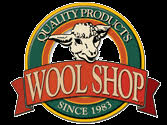 A variety of premium natural dusters made from lambswool or ostrich feathers—everything from the classic lambswool dusters with handles from 8 inches to 4 feet (including a telescopic angle duster for hard-to-reach places), dust mitts, all kinds of lambswool mops, and even a ceiling fan duster with a telescopic handle that slips around the blades to dust tops and bottoms at the same time (I need one of those!).
A variety of premium natural dusters made from lambswool or ostrich feathers—everything from the classic lambswool dusters with handles from 8 inches to 4 feet (including a telescopic angle duster for hard-to-reach places), dust mitts, all kinds of lambswool mops, and even a ceiling fan duster with a telescopic handle that slips around the blades to dust tops and bottoms at the same time (I need one of those!).
Meiling Skincare
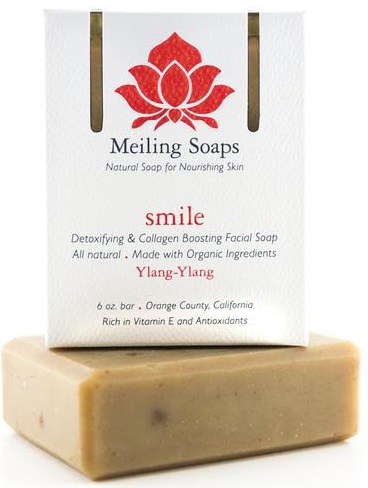 I love this soap for a number of reasons. It’s made with certified organic ingredients, each soap has a skincare benefit, the soap is made by a husband who wanted to make a soap that his wife would love for him to use, and it’s just an exceptional soap to use. I’ve tried a lot of handmade soaps and this one really stands out. It’s a a heavy, slightly oversized bar with a delicate natural fragrance from certified organic essential oils (unscented is also available), and it rinses very clean. I’m very happy with this soap.
I love this soap for a number of reasons. It’s made with certified organic ingredients, each soap has a skincare benefit, the soap is made by a husband who wanted to make a soap that his wife would love for him to use, and it’s just an exceptional soap to use. I’ve tried a lot of handmade soaps and this one really stands out. It’s a a heavy, slightly oversized bar with a delicate natural fragrance from certified organic essential oils (unscented is also available), and it rinses very clean. I’m very happy with this soap.
Hook & Loom
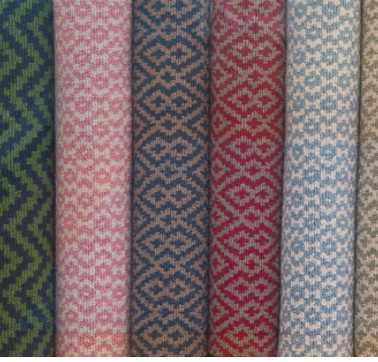 Delightful area rugs in colors and patterns hand-woven on special looms from their unique recycled Eco Cotton or wool. “Handcrafted patterns and a unique springy feel lend cozy credibility to any room…Using our unique and innovative process, we create colored yarns from recovered textile fiber. Then we hand-weave our cotton rugs from this new yarn without dyes, chemicals, or latex. The result: delightful, durable rugs that last for years, and won’t bleed or fade in the washing machine. They’re soft on your feet and spectacular on your floor.”
Delightful area rugs in colors and patterns hand-woven on special looms from their unique recycled Eco Cotton or wool. “Handcrafted patterns and a unique springy feel lend cozy credibility to any room…Using our unique and innovative process, we create colored yarns from recovered textile fiber. Then we hand-weave our cotton rugs from this new yarn without dyes, chemicals, or latex. The result: delightful, durable rugs that last for years, and won’t bleed or fade in the washing machine. They’re soft on your feet and spectacular on your floor.”
Michigan Sloyd
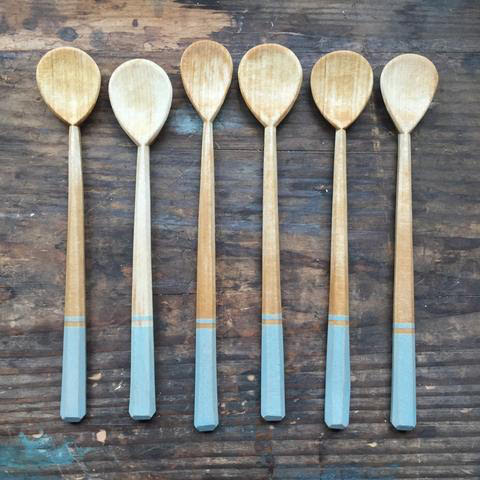 Wooden spoons and other utensils made in the”Sloyd” tradition. Sloyd is a Scandinavian-based handcraft movement and educational system with woodworking as the traditional focus. Items produced through Sloyd are meant to be practical for everyday use: spoons, bowls, cups, buttons, coat hooks, furniture, etc. The woodworker lives and works on a 6th generation family farm in Harbor Springs, MI. He has spent the last several years learning traditional methods to transform the trees and branches of his local woods into everyday household goods.
Wooden spoons and other utensils made in the”Sloyd” tradition. Sloyd is a Scandinavian-based handcraft movement and educational system with woodworking as the traditional focus. Items produced through Sloyd are meant to be practical for everyday use: spoons, bowls, cups, buttons, coat hooks, furniture, etc. The woodworker lives and works on a 6th generation family farm in Harbor Springs, MI. He has spent the last several years learning traditional methods to transform the trees and branches of his local woods into everyday household goods.
All Natural Wood Floor Refinishing
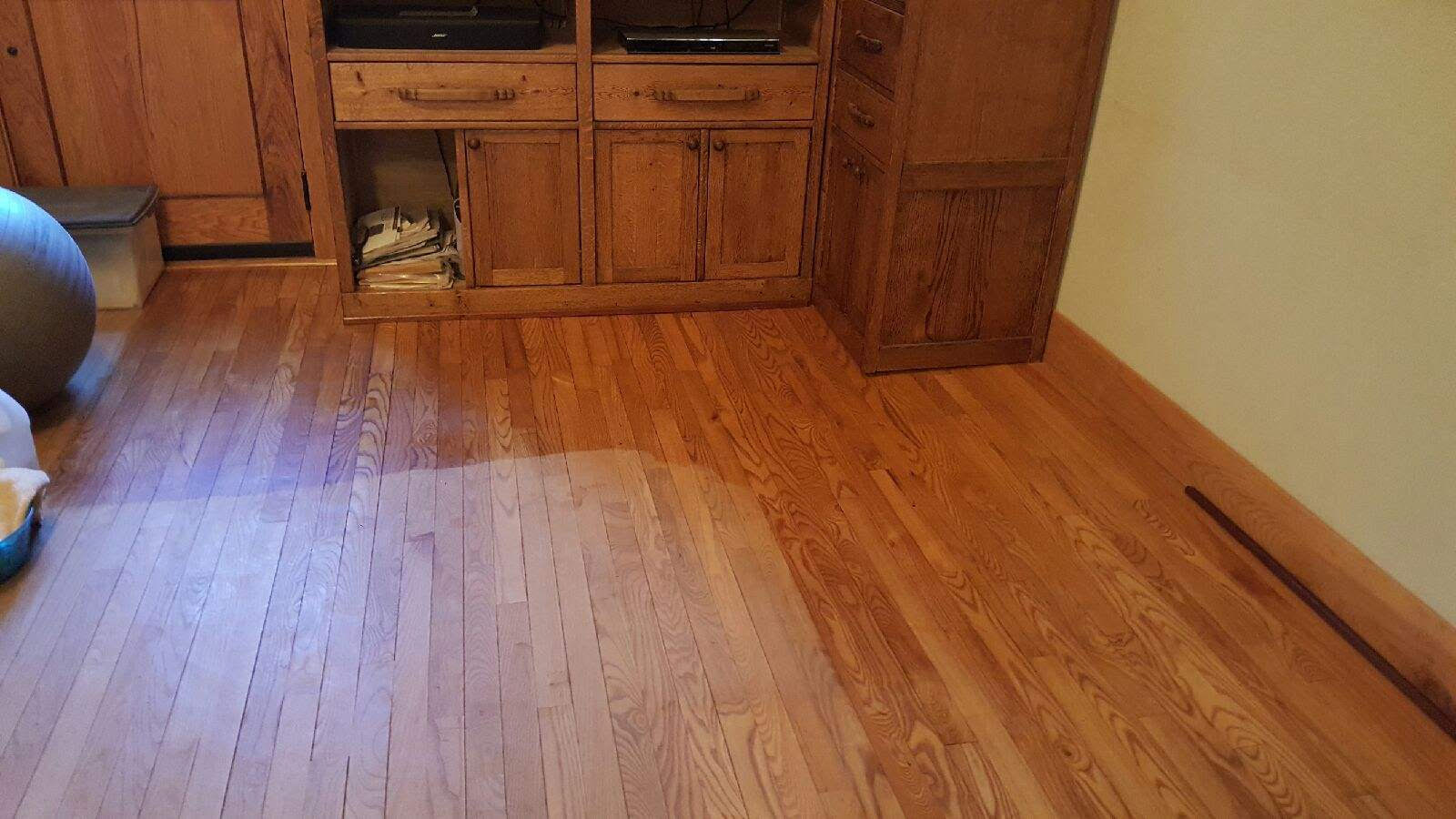
The portion on the right is dry and has been wiped down. The portion straight ahead I did this morning and the oil is soaking in and drying. Obviously the dull part on the left is the floor before I refinished it. I love this!
Question from Judy
Hi Debra,
Here is a natural way to refinish very old floors where much of the finish has worn off. We are doing it and I think it’s going to be great! Thought you would like it.
- Sweep floors
- Any greasy stains? Use WHITE VINEGAR. Scrub the stains in a circular motion with a sponge. Use the scrubbing side, but make sure you buy the ones that have the non-scratch scrubbing side. Let the vinegar dry. If stain is still visible, do it one more time. Let dry.
- Scrub the same stains with Dawn and hot water – in a circular motion. then with the grain. Let dry.
- Mop entire floor – we used Murphy’s Oil Soap and water. Let dry.
- With the soft side of a sponge, spread olive oil over entire floor. Let dry. This could take up to 24 hours. Then take a clean towel and wipe over entire floor (vigorously).
That’s it.
On one of our floors, I let the oil stay on for only about 6 hours, then used the towel, because we needed use of that floor! It still looks fine. We did all of this in December, and the floors still look great!
DON”T SLIP! FLOORS ARE VERY SLIPPERY UNTIL AFTER THE TOWEL IS USED!!!!
I’m doing it a little bit at a time, and there’s no lines where you stop and no smell, and it looks fabulous!
I found out about this because I’ve been wanting to refinish my floors but it was too expensive and I didn’t want the chemicals in my house. Then I went to the home of a friend for dinner who lives in an old house and her floors looked fabulous! I asked her what she did and she gave me the information. And now I’m doing mine and they look great too.
I’m so excited! I can’t wait to do the whole house.
Debra’s Answer
This sounds great. I need this for my floors too! I’m going to try it.
Rack for Sprouting Jars
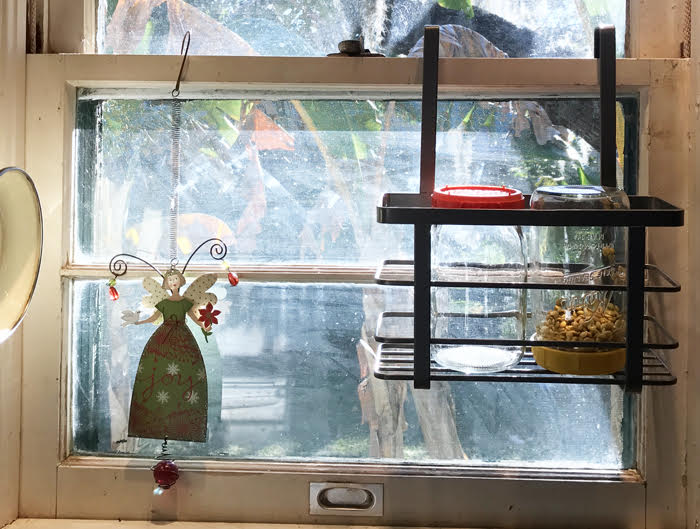
For years I have been wanting to grow sprouts at home, but didn’t because I couldn’t figure out where to put the jars that would:
- have enough light
- be near a water source
- be in a place where it’s OK to drip
- not get in the way of other things I’m doing
- be in a place where I would see them on a regular basis so I would remember to water them and could monitor their progress
Finally, yesterday I came across sprouting yet again and wanted to do it. But again ran into the question “where do I put the jars?”
You know that old saying. “Where there’s a will there’s a way.”
Well I decided I was going to figure out where to put the jars so I could sprout.
And then last night I went to Target to buy another half-gallon glass refrigerator pitcher and then decided to just walk around the store and see if I could find something that would hold the sprouting jars.
And I did! I found these metal baskets that I could hang in my kitchen window right over the sink and they are perfect in every way! They are designed to hang on a cabinet door to hold cleaning supplies, but I just used it for a different purpose. I would give you the link but this item doesn’t seem to be on the Target website. It might be in your local store.
Anyway, if this type of basket would be useful for you in some way, search for “cabinet basket” and you’ll find similar products.
The Greatest Danger to Firefighters Isn’t the Fire—It’s Cancer from Toxic Smoke

An article in this month’s Boston Magazine tells how chemicals released from the items in homes as they are burning are more deadly than the fire itself.
Today’s homes and offices are jam-packed with plastics, electronics, and furniture covered in flame-retardants. “When they combust,” Finn explains about household goods, “they are extremely toxic.” That means the smoke firefighters are exposed to is often loaded with a litany of septic chemicals—formaldehyde, vinyl chloride, chlorophenols, dioxins, trichloroethylene, ethylene oxide, polychlorinated biphenyls, methylene chloride, orthotoluidine, and arsenic, to name a few. Alone, any one of these may be harmful; mixed together they could make a potent cocktail of carcinogens with the capacity to do untold damage to the body’s organs, cells, and DNA.
It might seem odd that flame-retardants—ostensibly a firefighter’s best friend—would be a problem. They are, after all, designed to help slow the spread of fires or prevent them from starting in the first place. For decades, chemical mixtures were added to couches, mattresses, drapes, highchairs, cribs, televisions, computers, and countless other household items. But these chemical mixtures are not foolproof. They become ineffective at high temperatures, and when they go up in smoke they can take on the form of carcinogenic particles that are easy to inhale and capable of seeping through skin and into the bloodstream.
Read more at…
BOSTON MAGAZINE: Why Cancer Is Killing Boston’s Firefighters
Nontoxic Cat Box Cleaner
Question from Mary
Hi Debra,
I am looking for a toxic free way to clean the cat boxes. I have always used bleach to soak them in.
Debra’s Answer
I don’t have a cat. Readers, how do you clean your cat box in a nontoxic way?
Can Vitamins Protect You From Air Pollution?

A new study from the Mailman School of Public Health at Columbia University in New York, found that a combination of vitamins could help protect your health when exposed to high levels of fine particles in the air.
An international research team found that a combination of three B vitamins – folic acid, B6 and B12 – could strengthen the self-defence mechanism of genome molecules, which are prone to mutate when exposed to high levels of PM2.5 (respirable suspended particles with a diameter of 2.5 microns or less). In addition, these vitamins could help healthy adults offset the inflammatory and other symptoms of short-term exposure, especially if they came from an area low in pollution.
While no dosages have yet been given, researchers recommended eating more food rich in vitamin B when traveling to an area of high air pollution. Leafy green vegetables and beans which are rich in folic acid. Fish, beef liver and starchy vegetables are high in B6. And B12 requires eating animal products, such as fish, meat, eggs and milk.
This is the first test on living humans to suggest a remedy for genetic damage caused by smog.
Well known symptoms of smog exposure include chest pain, dizziness, headaches and heart disease. Smog has also been associated with an increased in death rates, damage to human brain cells and interfering with the way genes work.
More than 90 per cent of the world’s population live in places where the annual average PM2.5 level is worse than the 10mcg per cubic metre of air recommended by the World Health Organisation.
SOUTH CHINA MORNING POST: How vitamins can protect you from the damaging effects of air pollution
What’s a Miswak? And Why Should You Use It Instead of a Toothbrush?
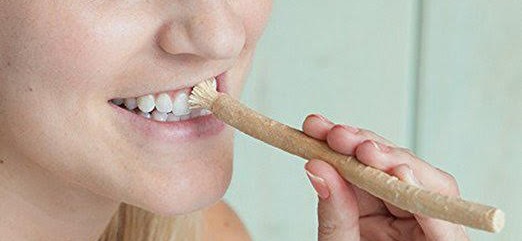
Almost two years ago I posted a link on Debra’s List for a miswak. I didn’t make a big deal out of it because it was the only one and the first of it’s kind and I hadn’t tried it.
“I still haven’t tried it, but suddenly this past week I became aware of three websites selling miswaks, and posted them as well, and there may be even more, and more coming. I think it’s time to get one and try this out.”
So I thought I’d better tell you what it is.
 A miswak is a natural “tooth-stick” made from a tree branch. Cut specifically from the tree ‘Salvadora persica’ it has a unique chemical composition that works exceptionally well to naturally clean and whiten teeth. It’s not a new thing. This is a traditional and natural alternative to the modern toothbrush, known to be in use for more than 7000 years and is still used today in Arabic countries, India, and parts of Africa.
A miswak is a natural “tooth-stick” made from a tree branch. Cut specifically from the tree ‘Salvadora persica’ it has a unique chemical composition that works exceptionally well to naturally clean and whiten teeth. It’s not a new thing. This is a traditional and natural alternative to the modern toothbrush, known to be in use for more than 7000 years and is still used today in Arabic countries, India, and parts of Africa.
The Journal of Health says, “It it has been found that if a miswak is used correcly, then it is more effective in reducing plaque and gum disease than that of a toothbrush due to its antibacterial properties and brushing action.”
It’s toothbrush, toothpaste, and tooth whitener all in one. It requires no water or toothpaste, so you can carry it with you and use it at any time.
These tooth-sticks are also free from chemicals and pesticides. They are just sticks in their natural state. But very special sticks with unique characteristics that are perfect for our teeth.
I love products like this which provide a completely natural, non-industrial alternative to a common industrial product, and outperforms us. It just reaffirms my belief that everything we need to be healthy exists in Nature. We just need to find it and use it.
JOURNAL OF AYURVEDA AND INTEGRATIVE MEDICINE: Miswak: A Periodontist’s Perspective
WIKIPEDIA: Miswak
Scientific studies documented
THE SAUDI DENTAL JOURNAL: A Review on Miswak and it’s Effect on Various Aspects of Oral Health
Miswaks on Debra’s List
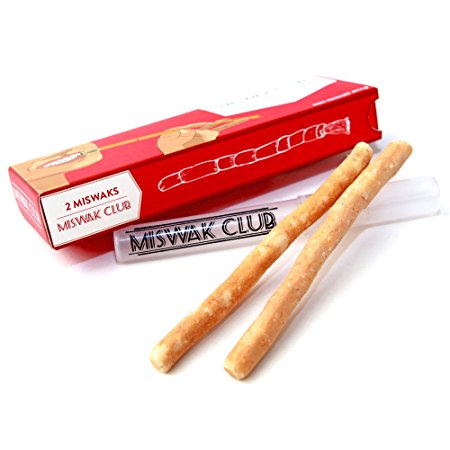
|
|
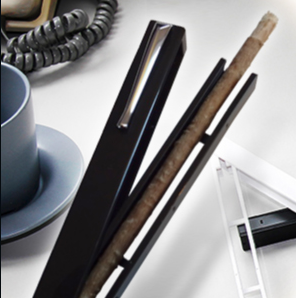
|
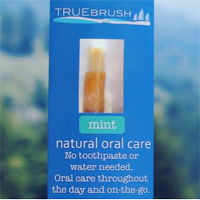
|
Blue Apron
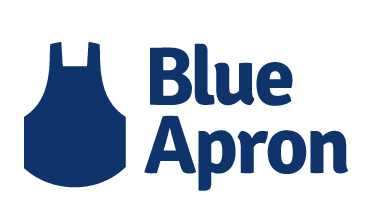 A service that delivers fresh ingredients and recipes for you to cook yourself at home. What makes Blue Apron different from other similar services is they have relationships with farmers to source the ingredients they send you directly from the farm. Their chefs and farmers work together to send you ingredients and recipes that are seasonal and sustainable. This means better ingredients, better pricing, and less food waste. Read more at Our Vision. Many, but not all, of their ingredients are USDA certified organic. In general, they support farmers who use regenerative farming practices, whether they are certified or not. Read more at Are Your Ingredients Organic?.
A service that delivers fresh ingredients and recipes for you to cook yourself at home. What makes Blue Apron different from other similar services is they have relationships with farmers to source the ingredients they send you directly from the farm. Their chefs and farmers work together to send you ingredients and recipes that are seasonal and sustainable. This means better ingredients, better pricing, and less food waste. Read more at Our Vision. Many, but not all, of their ingredients are USDA certified organic. In general, they support farmers who use regenerative farming practices, whether they are certified or not. Read more at Are Your Ingredients Organic?.
Stasher
![]() “The first and only self-sealing, air-tight, non-plastic bag in the world.” Made from clear silicone, it has a pinch-press seal and can be reused 3000+ times. Silicone is “low toxicity and odorless.”
“The first and only self-sealing, air-tight, non-plastic bag in the world.” Made from clear silicone, it has a pinch-press seal and can be reused 3000+ times. Silicone is “low toxicity and odorless.”
One White Apple
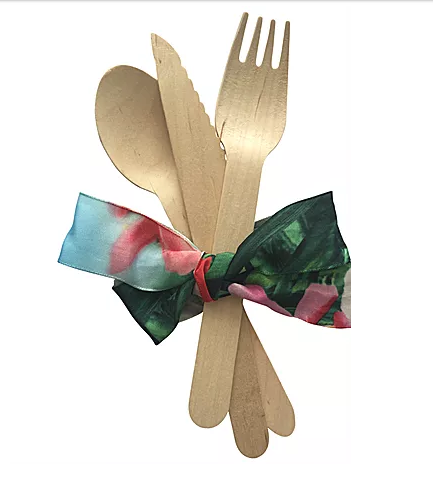 Wooden cutlery made of solid birch wood. “1oo% nontoxic.” Biodegradable and compostable.
Wooden cutlery made of solid birch wood. “1oo% nontoxic.” Biodegradable and compostable.
Twig Brush
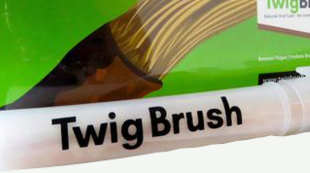 Natural “miswak” tooth-stick from the Peelu tree. Comes with a storage case.
Natural “miswak” tooth-stick from the Peelu tree. Comes with a storage case.
Penwak
 “Miswak” tooth-stick from the Peelu tree. Plus sleek swivel cases so you can carry your miswak hygienically.
“Miswak” tooth-stick from the Peelu tree. Plus sleek swivel cases so you can carry your miswak hygienically.
True Brush
 Natural “miswak” tooth-stick from the Peelu tree. Regular and travel size.
Natural “miswak” tooth-stick from the Peelu tree. Regular and travel size.
Coco Basics
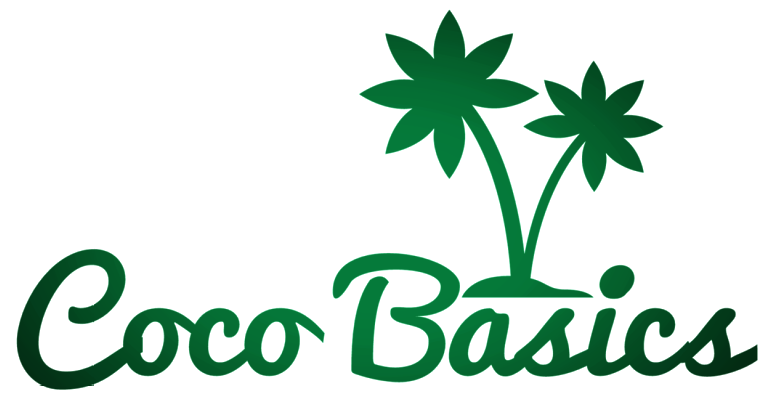 An all-natural aluminum-free deodorant with a coconut oil base. Choose from peppermint or unscented. Ingredients.
An all-natural aluminum-free deodorant with a coconut oil base. Choose from peppermint or unscented. Ingredients.
Pure Pitz
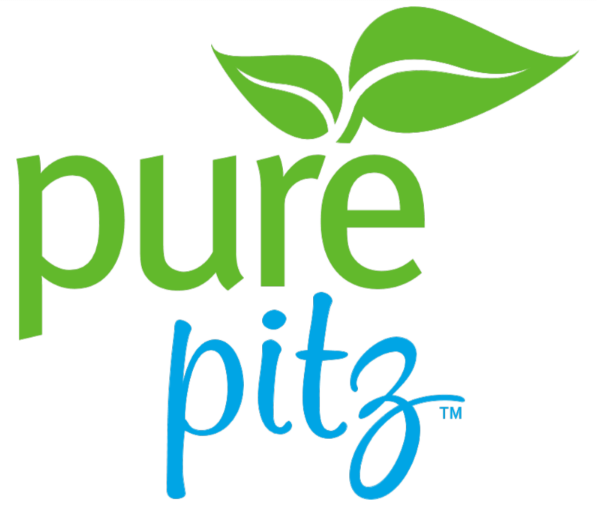 Deodorant is made using “only the purest of certified organic and natural ingredients” made in a USDA Certified Organic Lab. It’s “the safe and effective way to neutralize the worst of body odor without harmful chemicals – and it really works!” Contains a proprietary blend of essential oils. No “unscented” available.
Deodorant is made using “only the purest of certified organic and natural ingredients” made in a USDA Certified Organic Lab. It’s “the safe and effective way to neutralize the worst of body odor without harmful chemicals – and it really works!” Contains a proprietary blend of essential oils. No “unscented” available.
Ravensnap
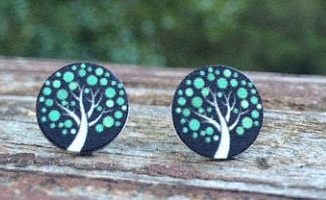 Fabric, wood, and glass earrings with nickel-free studs.
Fabric, wood, and glass earrings with nickel-free studs.
Spiritex
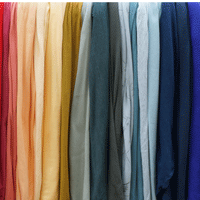 A colorful selection of knit fabrics that are hard to find in 100% organic cotton. “We produce all of our fabric within 150 miles of our Asheville, NC headquarters from cotton grown in Texas by the Texas Organic Growers Co-Op. The dyes used are low impact fiber reactive and are maintained in a closed loop system. Textiles are typically bleached and dyed. We avoid bleached fibers by using a citrus scour for our naturals and a peroxide wash derived from apples for our whites. On the subject of color, we use non-radioactive, heavy metal free, fiber-reactive dyes in a closed-loop system, preventing any toxic substances from being released into the external environment and allowing unfixed dye and water to be recycled.”
A colorful selection of knit fabrics that are hard to find in 100% organic cotton. “We produce all of our fabric within 150 miles of our Asheville, NC headquarters from cotton grown in Texas by the Texas Organic Growers Co-Op. The dyes used are low impact fiber reactive and are maintained in a closed loop system. Textiles are typically bleached and dyed. We avoid bleached fibers by using a citrus scour for our naturals and a peroxide wash derived from apples for our whites. On the subject of color, we use non-radioactive, heavy metal free, fiber-reactive dyes in a closed-loop system, preventing any toxic substances from being released into the external environment and allowing unfixed dye and water to be recycled.”
Loomstate
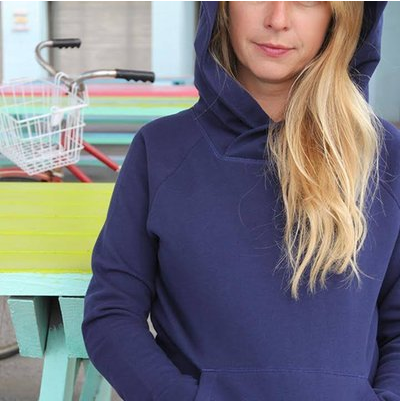 A small collection of clothing for women and men made from 100% certified organic cotton n a GOTS certified factory in India. I love this clothing. Very simple classic design, plain colors, high integrity materials. “At Loomstate we work toward a shared vision, believing that whole clothing supply chains from cotton farm to fashion house can support sustainable clothing production.This is clothing that goes beyond fiber and fabric, to include the moral fibers we share and the community fabric that binds us.”
A small collection of clothing for women and men made from 100% certified organic cotton n a GOTS certified factory in India. I love this clothing. Very simple classic design, plain colors, high integrity materials. “At Loomstate we work toward a shared vision, believing that whole clothing supply chains from cotton farm to fashion house can support sustainable clothing production.This is clothing that goes beyond fiber and fabric, to include the moral fibers we share and the community fabric that binds us.”
Natural Clothing Company
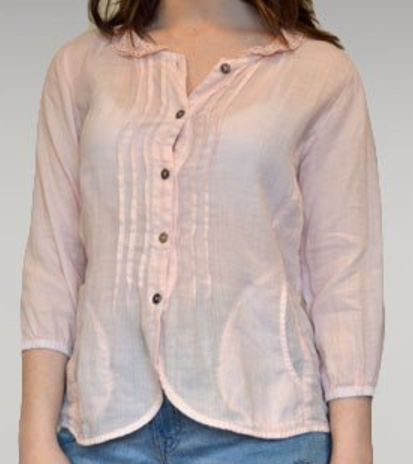 Clothing for women and men made from 100% organic and natural cotton, linen, hemp, ramie, bamboo and other natural fibers or natural fiber blends. Each piece has been chosen by a husband-and-wife who are former natural food store owners, now living in a rural area near Seattle. “We want life without poisons for ourselves and you, the soil and animals. We think you want that too.”Read descriptions carefully as some are made from tencel (wood pulp) and garments are made in many different countries.
Clothing for women and men made from 100% organic and natural cotton, linen, hemp, ramie, bamboo and other natural fibers or natural fiber blends. Each piece has been chosen by a husband-and-wife who are former natural food store owners, now living in a rural area near Seattle. “We want life without poisons for ourselves and you, the soil and animals. We think you want that too.”Read descriptions carefully as some are made from tencel (wood pulp) and garments are made in many different countries.
Goddess Gear
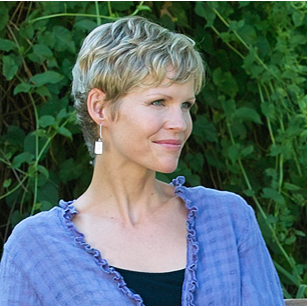 Clothing for women made from organic and recycled cotton, organically grown linen, hemp, bamboo and tercel (wood pulp). “Our passion is creating flattering, wearable, feminine styles that enhance the women who wear them; all from natural, organic and sustainable materials, cut and sewn in the USA. Goddess Gear is clothing that speaks to the essence of who our customers are; women of character, beauty, and vision.”
Clothing for women made from organic and recycled cotton, organically grown linen, hemp, bamboo and tercel (wood pulp). “Our passion is creating flattering, wearable, feminine styles that enhance the women who wear them; all from natural, organic and sustainable materials, cut and sewn in the USA. Goddess Gear is clothing that speaks to the essence of who our customers are; women of character, beauty, and vision.”
Sassis
 Organic cotton and hemp clothing and accessories for “women, maternity, men, lil’ kids, and baby..” 100% organic cotton, even organic cotton label and thread. Original styles are casual Florida.
Organic cotton and hemp clothing and accessories for “women, maternity, men, lil’ kids, and baby..” 100% organic cotton, even organic cotton label and thread. Original styles are casual Florida.
Finn + Emma
 Clothing for babies and kids made from 100% G.O.T.S. certified organic cotton, eco-friendly inks and dyes, and lead and nickel free snaps with coconut insert. Also snuggle and dangling toys made from 100% G.O.T.S. certified organic cotton stuffed with sheep’s wool, untreated woods with nontoxic vegetable seed wax finish, and other good materials.
Clothing for babies and kids made from 100% G.O.T.S. certified organic cotton, eco-friendly inks and dyes, and lead and nickel free snaps with coconut insert. Also snuggle and dangling toys made from 100% G.O.T.S. certified organic cotton stuffed with sheep’s wool, untreated woods with nontoxic vegetable seed wax finish, and other good materials.
Origamo
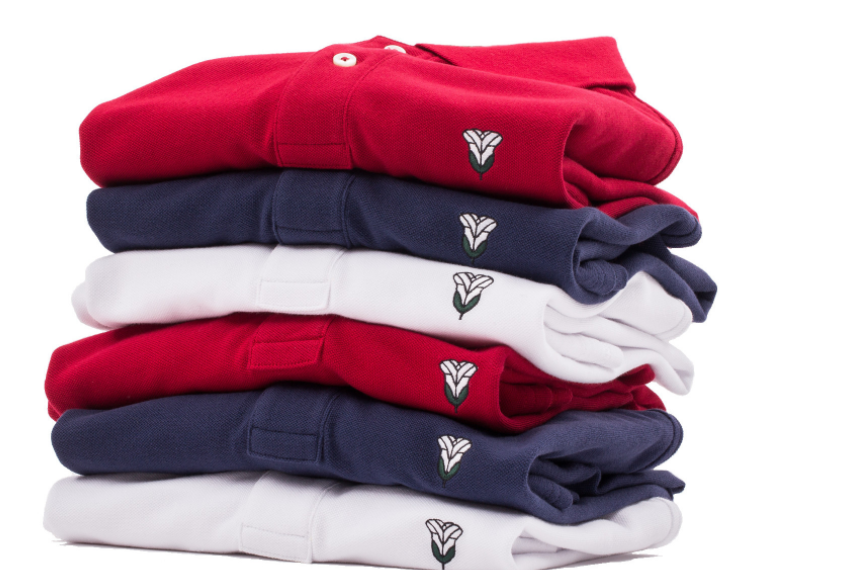 100% organic “super soft” Pima cotton polo shirts for men.
100% organic “super soft” Pima cotton polo shirts for men.
Purakai
 A California beach-oriented website that sells simple shirts for women and men made from California-grown “ocean-friendly” organic cotton. They also sell sustainable surfboards and some items contain synthetics, but I like the fact that this California company is selling shirts made from 100% California grown organic cotton.
A California beach-oriented website that sells simple shirts for women and men made from California-grown “ocean-friendly” organic cotton. They also sell sustainable surfboards and some items contain synthetics, but I like the fact that this California company is selling shirts made from 100% California grown organic cotton.
Why We Need to Start Paying as Much Attention to What We WEAR as We Do to What We EAT
Last week Ronnie Cummins, the International Director of the Organic Consumers Association published a post called Beyond Monsanto’s GMO Cotton: Why Consumers Need to Care What We Wear.
He gave a list of ten excellent points about why we need to move away from what’s being sold in the fashion industry (which I won’t list here—read the post), and pointed out that if you go to any of the top clothing or department stores you won’t find garments labeled “non-GMO,” “organic” or “Fair Trade certified.” That’s totally true.
And then he did acknowledge there are a growing number of online and retail clothing companies and brands, which offer non-sweatshop, natural fiber and organic clothes, accessories, and textiles, and gave a short list.
Inspired by this post from the Organic Consumer’s Association, I spent the afternoon updating my clothing and fabric pages.
Take a look…
|
|

|

|

|
And also… OrganicClothing.blogs.com – all about organic, natural and sustainable clothing and eco-fashion.
NOTE: I just want to mention that I don’t screen for fair trade, not because it’s not an important issue, but because I am screening for nontoxic first. A company has to qualify on nontoxic and then I will note fair trade, but I don’t list companies that are fair trade that are selling products that don’t otherwise qualify.
ANOTHER NOTE: One of the problems I have in finding organic clothing to recommend to you is that so much of it is blended with other materials, especially spandex. I only recommend clothing and fabrics made from 100% natural fibers. For me, it’s more important that they be 100% natural fiber than be organic. Ideal would be 100% organic fiber. But I won’t accept natural fibers blended with synthetics.
I think the difference is that an organization like Organic Consumers Association is wanting to promote organic for the environmental benefits. And so any percentage of organic is a plus for organic. I am looking from the viewpoint of what is safe for the consumer and so any subtraction from 100% organic is a minus for the consumer.
Improve Your Environment AND Improve Your Body
I write a lot about how we can reduce our exposure to toxic chemicals found in consumer products in our home environment. And we should. Exposure to toxic chemicals can impair our health.
But there is a flip side and that is to make our bodies more able to tolerate our surrounding environment.
From my experience it’s a balance.
Many people who read this blog have Multiple Chemical Sensitivies, which makes them not be able to tolerate many things in the enviornment. Some of these things are toxic chemicals, but others are not.
Many years ago I realized that there are three types of materials.
One type is those materials that do harm, such as toxic formaldehyde.
Another type is those materials that do good, such as an organic apple.
And others neither harm nor benefit, but simply are neutral.
When someone says to me “I can’t tolerate….” and they give me a list of neutral and good materials, that tells me that they need to do more than simply eliminate toxic products, they need to also do things that boost their body’s ability to tolerate the part of the world that is not doing harm.
It’s a matter of making the environment less and less dangerous, and making one’s body more and more able to tolerate the environment.
There are many things one can do to improve body tolerance. It has a lot to do with detox, getting enough good nutrition, getting enough sleep so your body can rebuild, getting exercise, and doing whatever health-oriented treatments like massage, homeopathy and other practices that support health rather than fighting disease.
Many years ago I realized that the way to cure any illness is the same: it’s living in a way that creates health. I must be doing something right because this year for the first time I went through the entire winter with no flu at all, not even a sniffle. I wasn’t down for one day. That’s a strong immune system!
I’m not saying I’m perfect. I’m still learning how I need to live to create my body being strong and healthy. But every time I run into a health problem, I recognize it as my body giving me a message to change something about my everyday life. And when I find that and change it, I eliminate that problem.
I eliminated MCS for myself thirty years ago by changing the home environment that was causing it. But more than that I did things that supported my health in a positive way. I remember getting acupuncture and all kinds of alternative treatments at the time.
And today, while I live in a home that is as nontoxic as I can possibly make it, I also freely roam out in the world with no ill effects.
Removing chemicals lessens the negative assault on our bodies, but we also need beneficial actions that help our bodies heal and be strong.
Indoor Cats Have Higher Levels of Flame Retardants
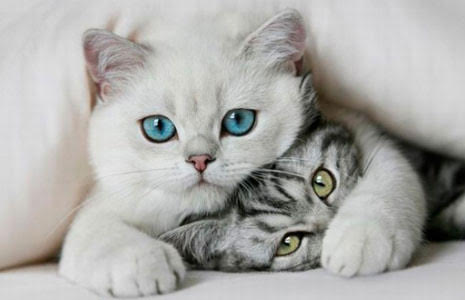
A new study at Stockholm University has found indoor cats now have high levels of brominated flame retardants in their bloodstream.
“In a previous study, the researchers demonstrated that brominated flame retardants were found in higher concentrations in the blood of cats that had developed Feline hyperthyroidism compared to healthy cats. Now, new measurements of healthy cats establish their dust exposure. Paired samples were taken from the same household — meaning that they took both dust samples and blood samples at the same time.”
The study noted that the fire retardants are endocrine disruptors that are affecting humans as well as cats.
CONSUMERAFFAIRS: Study Finds Indoor Cats Have Higher Levels of Flame Retardants
ENVIRONMENTAL SCIENCE & TECHNOLOGY: This and other related studies
Sustainable Seed Company
 “Good food comes from good seed” is the first thing I saw when I went to this website and they definitely have good seed. “Since 2008, we’ve been offering heirloom seeds, garden seeds, and organic heirloom seeds – non-hybrid vegetable, flower, and herb seeds. We are America’s best source for heirloom vegetable seeds, heritage grains and herb seeds. We wanted to offer heirloom seeds for one reason: they’re not only our history, but our security. You can save the seeds of the vegetables, herbs and grains we offer, and with the proper methods, reliably get the same plants for generations to come. We’re also a CERTIFIED ORGANIC seed farm – setting us apart from many others who only resell seed. With over 1,800 varieties for you to choose from (over 700 of them bulk seed and 600 of them organic seeds), we’re also the web’s premiere source for backyard gardeners and farmers alike.” The only seed company powered with sustainable energy.
“Good food comes from good seed” is the first thing I saw when I went to this website and they definitely have good seed. “Since 2008, we’ve been offering heirloom seeds, garden seeds, and organic heirloom seeds – non-hybrid vegetable, flower, and herb seeds. We are America’s best source for heirloom vegetable seeds, heritage grains and herb seeds. We wanted to offer heirloom seeds for one reason: they’re not only our history, but our security. You can save the seeds of the vegetables, herbs and grains we offer, and with the proper methods, reliably get the same plants for generations to come. We’re also a CERTIFIED ORGANIC seed farm – setting us apart from many others who only resell seed. With over 1,800 varieties for you to choose from (over 700 of them bulk seed and 600 of them organic seeds), we’re also the web’s premiere source for backyard gardeners and farmers alike.” The only seed company powered with sustainable energy.
Straw Free
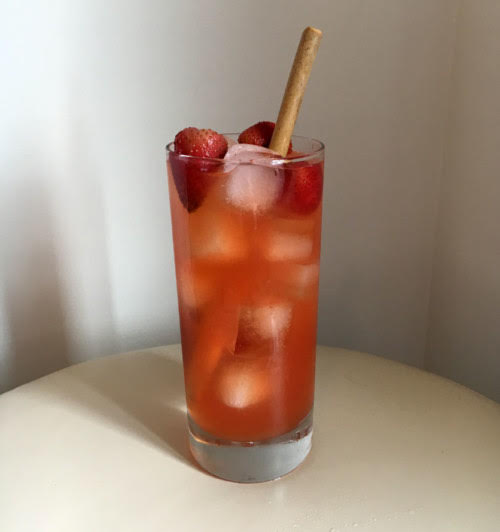 Reuable drinking straws, handmade from sustainably harvested bamboo. “Each bamboo straw is hand-made by volunteers using local bamboo and will vary slightly in color and size. All proceeds go to education and outreach about the impact of plastic pollution.”
Reuable drinking straws, handmade from sustainably harvested bamboo. “Each bamboo straw is hand-made by volunteers using local bamboo and will vary slightly in color and size. All proceeds go to education and outreach about the impact of plastic pollution.”
Wolf’s Eyelash – Transformational Beauty
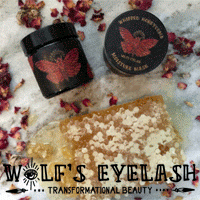 Whole organic skin care. “It’s ALL about the ingredients. Just like your food, fresh, local and organic is best. Fresh, organic and local ingredients yield higher nutrient content which means better results. We work with local farms to use only the best, fresh stuff for our products in its whole form. That’s why our products work so well! We use only whole plants from organic, wildcrafted and sustainable sources paired with a proprietary USDA organic compliant, food grade preservation system that is 100% natural.
Whole organic skin care. “It’s ALL about the ingredients. Just like your food, fresh, local and organic is best. Fresh, organic and local ingredients yield higher nutrient content which means better results. We work with local farms to use only the best, fresh stuff for our products in its whole form. That’s why our products work so well! We use only whole plants from organic, wildcrafted and sustainable sources paired with a proprietary USDA organic compliant, food grade preservation system that is 100% natural.
Gurkee’s
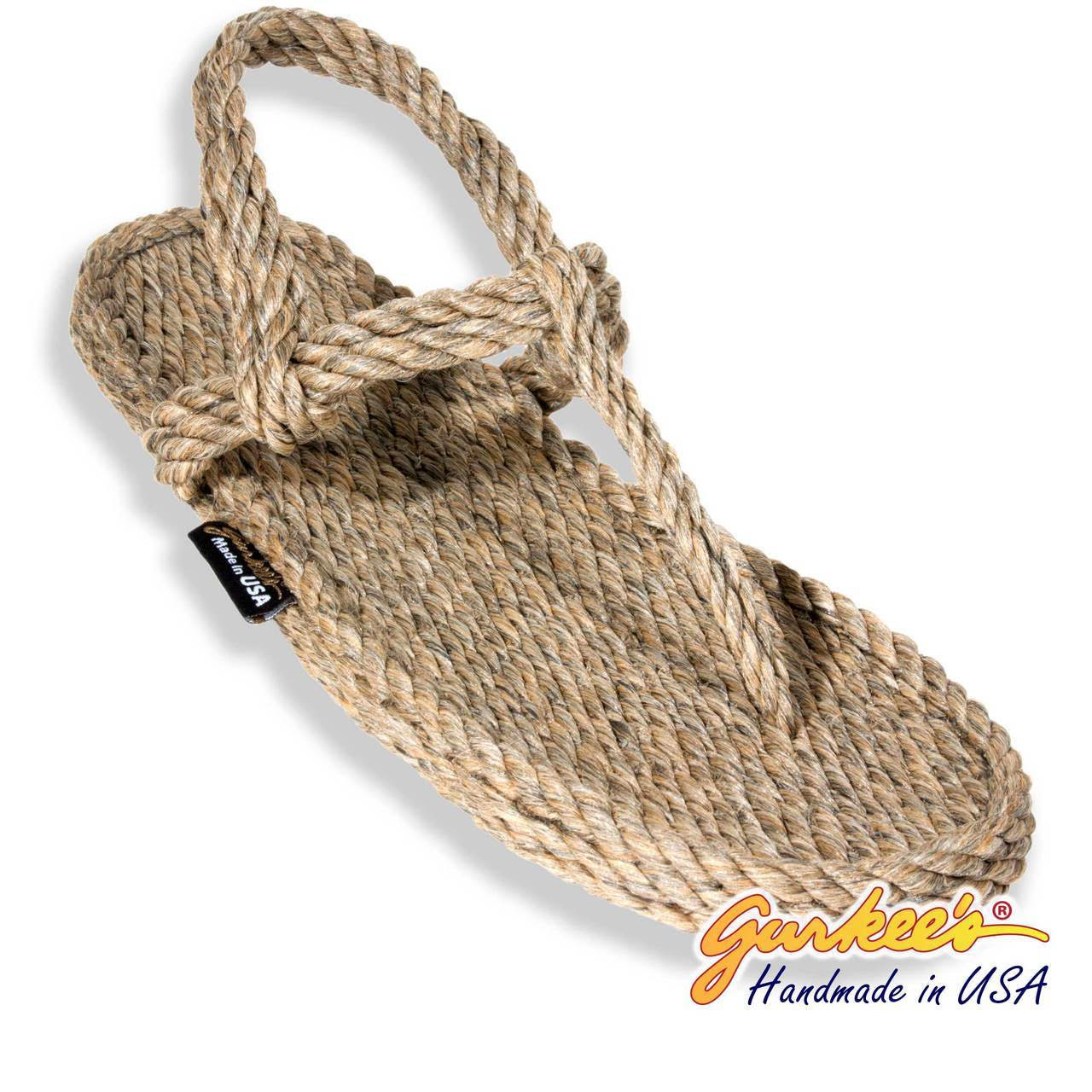 Soft sandals made from 100% textured polypropylene carpet yarn. Heat welded—no glue and no stitching. Will last for years.
Soft sandals made from 100% textured polypropylene carpet yarn. Heat welded—no glue and no stitching. Will last for years.
No Nickel
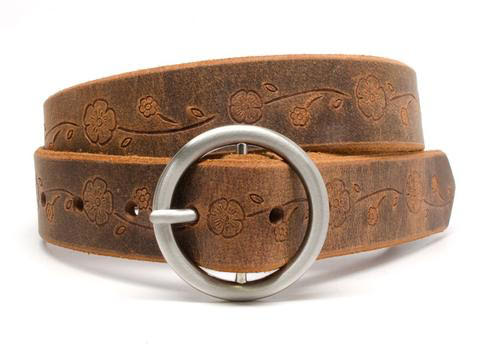 Nickel free titanium belt buckles (on leather belts) plus titanium earrings and rings. Also nickel test kits (dmg nickel spot test) to detect nickel, nickel barrier to protect the skin from nickel, and nickel free buttons and rivets.
Nickel free titanium belt buckles (on leather belts) plus titanium earrings and rings. Also nickel test kits (dmg nickel spot test) to detect nickel, nickel barrier to protect the skin from nickel, and nickel free buttons and rivets.
A Couple of Interesting Posts About Thyroid Disease
A whole summit is coming up in March about thyroid and since many people with sensitivities to chemicals also have thyroid problems (including myself) I thought I would pass a long a couple of interesting items that have been released in advance.
First is the post 5 Toxic Skincare Ingredients You Should Avoid if you Have a Thyroid Condition. While I know most of you have already eliminated these five ingredients entirely from your personal care products by choosing natural and organic body care products , this article gives good scientific data about why we should be doing this.
Also there is an interesting post called Why Women Have More Thyroid Disorders: The Izabella Entz Safety Theory that says the thyroid gland is part of our body’s sensing pattern that scans the environment to determine what is safe and what is dangerous. When the thyroid gland senses danger, it can actually initiate an autoimmune response.
This begs the question: Are our thyroid glands sensing the danger of toxics in our environment and causing our bodies to respond?
The upcoming summit will have more than 100 presenters talking about cutting edge cures for thyroid disease. If you want to know more, visit http://thethyroidsecret.com
Between my environmental controls, diet, and taking Armour thyroid supplement, I’ve pretty much got my thyroid condition under control. But I’d like to not be dependent on taking the supplement. So I’m going to keep an eye on the summit and see what the latest is.
Microfiber Mops
Question from Bonnie
Hi Debra,
I am shopping and looking at cotton and microfiber mops.
I checked your website and it said microfiber tiny plastic pieces were polluting water.
But I also saw another section that said microfiber is nontoxic.
Could the plastic fibers be inhaled. Are the microfiber mops safe?
Thanks.
Debra’s Answer
It’s not toxic to use a microfiber cloth or mop and it doesn’t give off microfibers into the air.
So I have no reason to tell you not to use a microfiber mop from a health viewpoint.
But microfibers are synthetic materials made from crude oil and they don’t biodegrade.
Cotton, on the other hand is a plant, which will biodegrade gracefully back into the environment after serving as a mop.
Avocado Green Mattress vs Naturepedic
Question from Shilpa
Hi Debra,
I have been researching for a safe mattress ever since I learnt about off gassing. My kid has turned 5 and I was startled to find out how dangerous it is, to be sleeping on the regular memory foam. I am planning to rid all mattresses at home.
I found your site to have valuable information. I would really appreciate if you can compare naturepedic vs avacadogreenmattress . Every time I try a 100% organic bed, it takes me to naturepedic. Is that the only company we should look for or am I missing something here.
Your recommendations and suggestions will be really helpful.
Debra’s Answer
Well, Naturepedic really is the best organic mattress (see Q&A: A Comparison of Certified Organic Mattresses)
But I’ll compare them to Avocado.
| Naturepedic | Avocado | |
| Latex | GOLS certified organic | natural latex |
| Wool | GOTS certified organic | natural wool |
| Cotton | GOTS certified organic | GOTS certified organic |
The biggest difference, however, is that Naturepedic is a certified organic mattress manufacturer, which means that every aspect of the process is certified organic—everything from the materials to the factory.
The only thing organic about this avocado is the cotton. Who knows what’s happening in the factory.
I’ll just mention that the Avocado website headline is false and misleading. they are not “Earth’s most green & healthy mattress.”
Kapok Pillows at White Lotus Home
White Lotus Home kapok pillow on my bed
I originally published this on Shop With Debra in 2015, and took it down when I stopped publishing that blog. I’m bringing it back because I still sleep on this pillow and it’s still the best pillow I’ve ever had and someone asked a question about kapok.
After I read that White Lotus Home had kapok pillows, I knew I had to have one. My wool pillows, which I have loved, don’t last as long as I would like, but are much better than cotton fill, which is too hard for me.
So when I learned that kapok is more resilient and lasts longer, I had to try it.
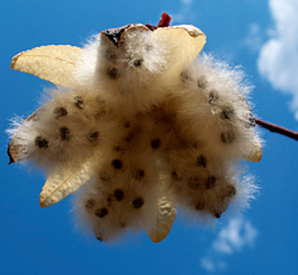 Kapok is the fluff around a seed that grows in a protected pod on the magnetic kapok tree. Fibers are pulled from the seeds pods, then air cleaned by spinning at high speed, resulting in a soft, puffy, resilient material that has no dust or pod debris. Read more about kapok here.
Kapok is the fluff around a seed that grows in a protected pod on the magnetic kapok tree. Fibers are pulled from the seeds pods, then air cleaned by spinning at high speed, resulting in a soft, puffy, resilient material that has no dust or pod debris. Read more about kapok here.
My pillow arrived on Monday and it’s a dream come true.
As I told White Lotus Home President Marlon Pando on Toxic Free Talk Radio , the first night I slept on it, I put my head down and fell right to sleep. And I’ve been sleeping better every night since. Amazing the difference a pillow can make.
Another thing I love about this pillow is that it has an invisible zipper on the side, so I can open the pillow and move the fill around, or add more, or change it. This way I can buy more fill if needed instead of a whole new pillow. And the zipper is “invisible” so you don’t even see or feel it.
I chose this pillow because it’s made from organic cotton and kapok collected from the wild, so it’s as pure as you can get. I know the quality of White Lotus Home. I’ve visited their work space and showroom in Highland Park NJ, so I know the manufacturing environment is clean, toxic free, and fragrance-free through and through.
I’m going to order another one.
AND…I just received an email from White Lotus Home about their buckwheat pillows and their buckwool pillows. Buckwool is half buckwheat, half wool, which offers the best of both fills. “While the Organic Buckwheat will mold to your desired shape, the layers of virgin wool provide a soft cushion between you and the firm buckwheat, and you can flip the pillow to whichever side you may need at the time.”
 |
Listen to my interview with Marlon Pando, Owner of White Lotus Home |
World Mercury Project

There have been many stories in the media this week about last week’s press conference by Robert F. Kennedy, Jr., Robert De Niro, Del Bigtree, Rev. Tony Muhammand and Nicholas calling for mercury-free vaccines in the US and other mercury reforms. They offered a $100,000 prize to any journalist who can produce a peer-reviewed scientific study that proves that mercury in vaccines is safe.
Kennedy has founded the World Mercury Project “to raise public awareness of the dangers and sources of mercury, with the ultimate goal of banning all uses of mercury on a global level. We believe the public is in critical need of accurate information with regard to the sources and dangers of mercury which will allow them to better protect themselves and their families from the potential devastating effects of the potent neurotoxin.”
“The average person does not know that mercury is the second most toxic element on the planet , nor do they know that it is an incredibly potent toxin even at small exposure levels. Once in the body, mercury has a high affinity for moving into the brain where it can become trapped for decades. Once in the brain, mercury causes a chronic inflammatory process in the tissue which has been connected to autism, Alzheimer’s, multiple sclerosis, amyotrophic lateral sclerosis (ALS or Lou Gehrig’s disease) and many more adverse health consequences.”
Though there has been a lot of attention on mercury in vaccines, there are many other sources of mercury exposure. And the World Mercury Project aims to address the elimination of all of them.
Their website contains much information about mercury, documented with studies (click on “LEARN MORE” in the menu for many links to health and environmental effects and related illnesses.
Every toxic chemical should have an organization like this dedicated to identifying the problems with the chemical, making them known to consumers, and eliminating them from consumer products.
In addition, here is an excellent complication of studies on mercury compiled by GreenMedInfo: GREENMEDINFO: Toxic Ingredient Thimerosal
Lead in Jewelry
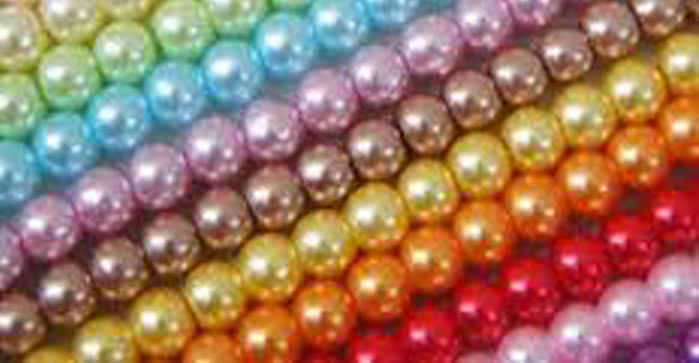
Fake opalescent pearls are one of the types of costume
jewelry that may contain lead.
My reader Craig, who I’ve mentioned before because he sends me so many suggestions for Debra’s List, sent me a whole list of websites this week that sell nickel-free products, which led me to create a whole new “allergy-free” section on Debra’s List. While browsing these websites, I came across one that sells “nickel- and lead-free” jewelry.
I haven’t really written about lead in jewelry, so wanted to do that now.
Lead is one of the most toxic substances there is. It is well known there is no safe level for lead, but still it is found in many consumer products.
One of them is costume jewelry. In fact, high levels of lead have been found in costume jewelry, especially costume jewelry for children. Lead has often been used in jewelry, to make the piece heavier, brighten colors, and to stabilize or soften plastic.
Lead exposure from costume jewelry can be dangerous, even deadly. So much so it is regulated by the State of California with the Metal-Containing Jewelry Law.
I don’t wear much costume jewelry myself anyway, but this is a reason not to. Especially do not give costume jewelry to children to wear.
The CDC says wearing toy jewelry will not cause your child to have high level of lead in their blood. Lead does not permeate through the skin. But children do put things in their mouths. If you have children in your home, keep any adult costume jewelry out of their reach as well, as they can be made ill if it is swallowed.
Typically precious metals and real stones do not contain lead and are safe to wear.
CBS NEWS: Costume Jewelry Found to Have High Level of Toxins and Carcinogens, Test Show
CALFIRONIA WATCH: Why should I be concerned about lead in jewelry?
Athena Allergy
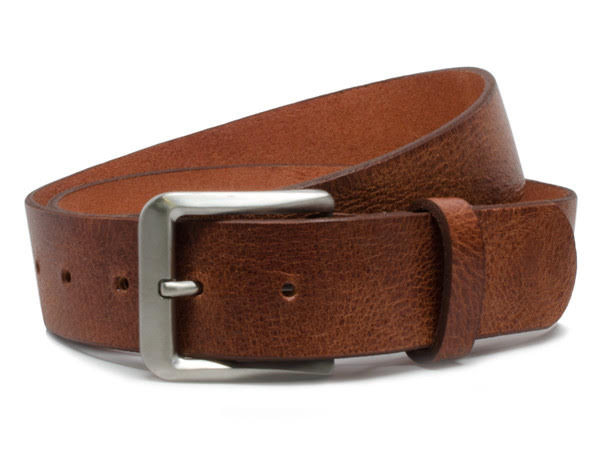 The largest selection of 100% certified nickel-free belts, buckles, watches and earrings along with nickel test kits and nickel barriers. Plus a lot of information about nickel allergy, nickel test kits, and more. Leather is vegetable-tanned. “Our Certified Nickel Free™ products are 100% nickel free including base metal and hardware and come with our unconditional guarantee to never test positive for nickel. We have over 45 years of combined contact dermatitis experience in the dermatology and allergy fields. We are your nickel allergy experts.”
The largest selection of 100% certified nickel-free belts, buckles, watches and earrings along with nickel test kits and nickel barriers. Plus a lot of information about nickel allergy, nickel test kits, and more. Leather is vegetable-tanned. “Our Certified Nickel Free™ products are 100% nickel free including base metal and hardware and come with our unconditional guarantee to never test positive for nickel. We have over 45 years of combined contact dermatitis experience in the dermatology and allergy fields. We are your nickel allergy experts.”
Grayling Jewelry
 Nickel-free earrings, necklaces, and bracelets. “We love to see you shine, and we’ll settle for nothing less than the best. That’s why we use incredibly brilliant, highly-faceted crystals and lustrous crystal pearls from coveted houses like Swarovski to make our baubles bling. We’re committed to creating affordable nickel-free jewelry that is safe for sensitive skin. We create jewelry that’s classic with an edge, and our beautiful designs will keep up with the pace of your life and never go out of style.”
Nickel-free earrings, necklaces, and bracelets. “We love to see you shine, and we’ll settle for nothing less than the best. That’s why we use incredibly brilliant, highly-faceted crystals and lustrous crystal pearls from coveted houses like Swarovski to make our baubles bling. We’re committed to creating affordable nickel-free jewelry that is safe for sensitive skin. We create jewelry that’s classic with an edge, and our beautiful designs will keep up with the pace of your life and never go out of style.”
Mystic Sets
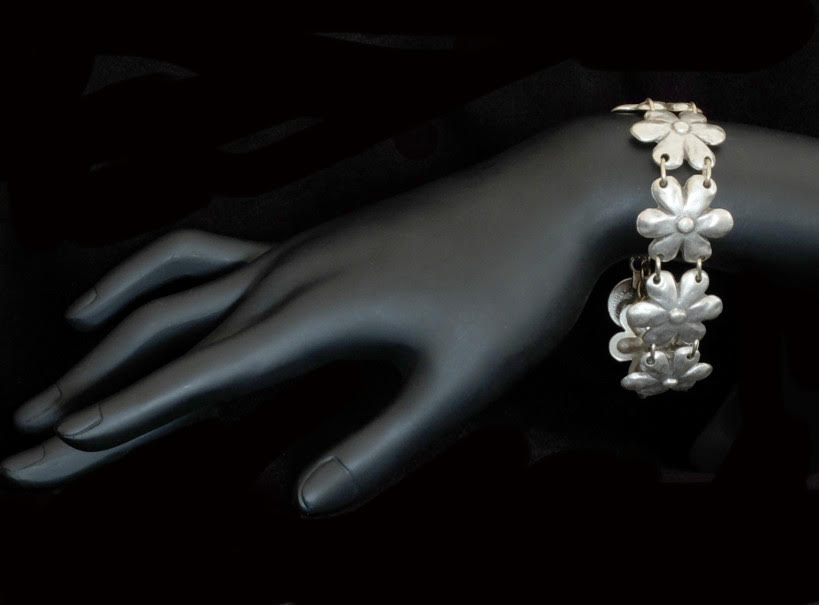 Beautiful, handpicked accessories made in Grand Bazaar, Istanbul, Turkey. “All of the stunning necklaces, bracelets, earrings and rings reflect the mysticism of Grand Bazaar and the east. You will also find very contemporary pieces that would make perfect statements. All of the accessories are nickel and lead free, as a result, they are very comfortable to wear for a long time. In addition, they are silver coated and very light weight.”
Beautiful, handpicked accessories made in Grand Bazaar, Istanbul, Turkey. “All of the stunning necklaces, bracelets, earrings and rings reflect the mysticism of Grand Bazaar and the east. You will also find very contemporary pieces that would make perfect statements. All of the accessories are nickel and lead free, as a result, they are very comfortable to wear for a long time. In addition, they are silver coated and very light weight.”
Sensitively Yours
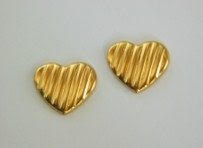 Nickel-free earrings in many styles—from simple to fancy. “Made from the most irritant-free metals available to eliminate skin and ear sensitivity and to ensure a comfortable fit. Normal piercing studs are made from 302 surgical steel. Our hypoallergenic earrings for sensitive ears are made from one grade higher, 304 surgical steel. We then use 7 to 10 mil of pure 24K gold overlay on not only every surgical steel post, but all other parts of the earring as well, including the backs. Pure 24K gold and surgical steel are some of the most irritant-free materials available – they are affordable and suitable for jewelry.”
Nickel-free earrings in many styles—from simple to fancy. “Made from the most irritant-free metals available to eliminate skin and ear sensitivity and to ensure a comfortable fit. Normal piercing studs are made from 302 surgical steel. Our hypoallergenic earrings for sensitive ears are made from one grade higher, 304 surgical steel. We then use 7 to 10 mil of pure 24K gold overlay on not only every surgical steel post, but all other parts of the earring as well, including the backs. Pure 24K gold and surgical steel are some of the most irritant-free materials available – they are affordable and suitable for jewelry.”
Are Disposable Polyethylene Gloves Safe?
Question from Bonnie
Hi Debra,
I do not want the nitrile or latex dish gloves. Amazon sells polyethylene disposable gloves. Are these safe? I saw a web site that stated polyurethane gloves are also made. I read the latex gloves can have other additives, are they unsafe?
Thank you.
Debra’s Answer
Both polyethylene and polyurethane gloves are safe. I’m very happy to see this.
Here’s where you can order them online:
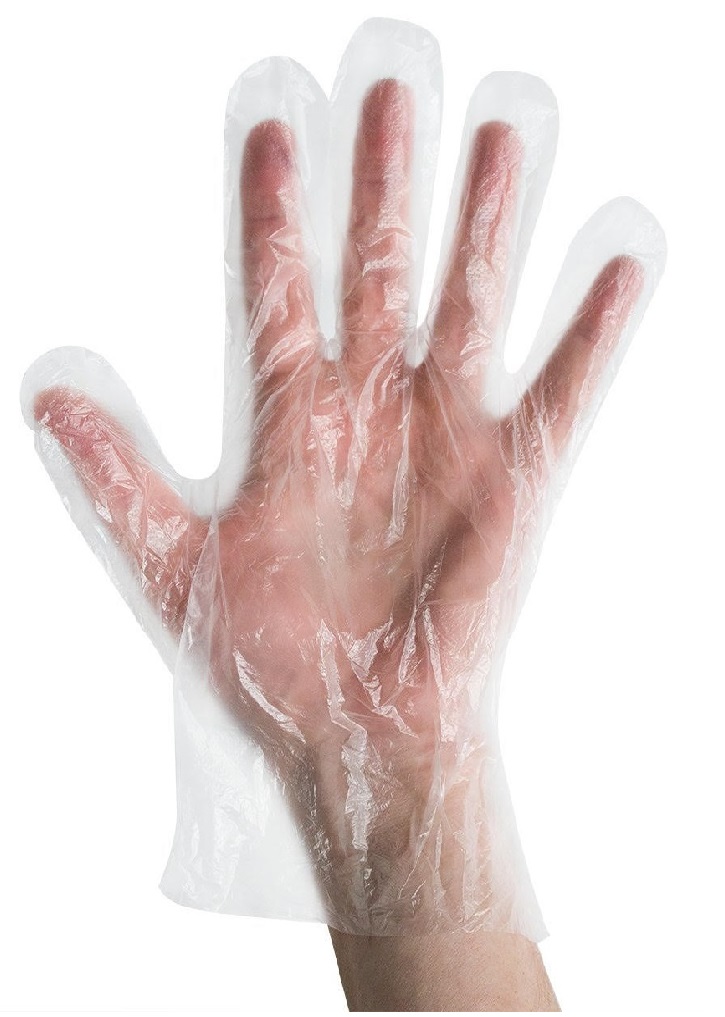
|
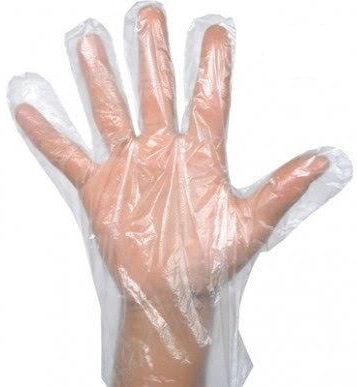
|
Blomdahl USA
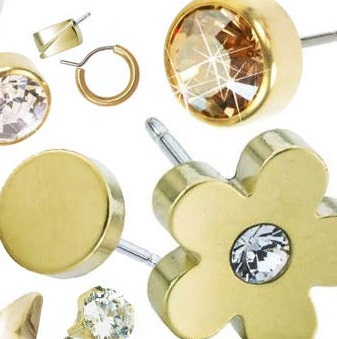 Skin-friendly earrings, necklaces and bracelets, developed in consultation with a skin specialist. “All of our earrings are made with Medical Plastic or Medical Grade Titanium. These medical grade materials ensure maximum comfort and safety for people who struggle with nickel sensitivity.” From a toxicity viewpoint, I would choose the titanium over plastic.
Skin-friendly earrings, necklaces and bracelets, developed in consultation with a skin specialist. “All of our earrings are made with Medical Plastic or Medical Grade Titanium. These medical grade materials ensure maximum comfort and safety for people who struggle with nickel sensitivity.” From a toxicity viewpoint, I would choose the titanium over plastic.
Nickel Free Belts
Naturally Nickel Free
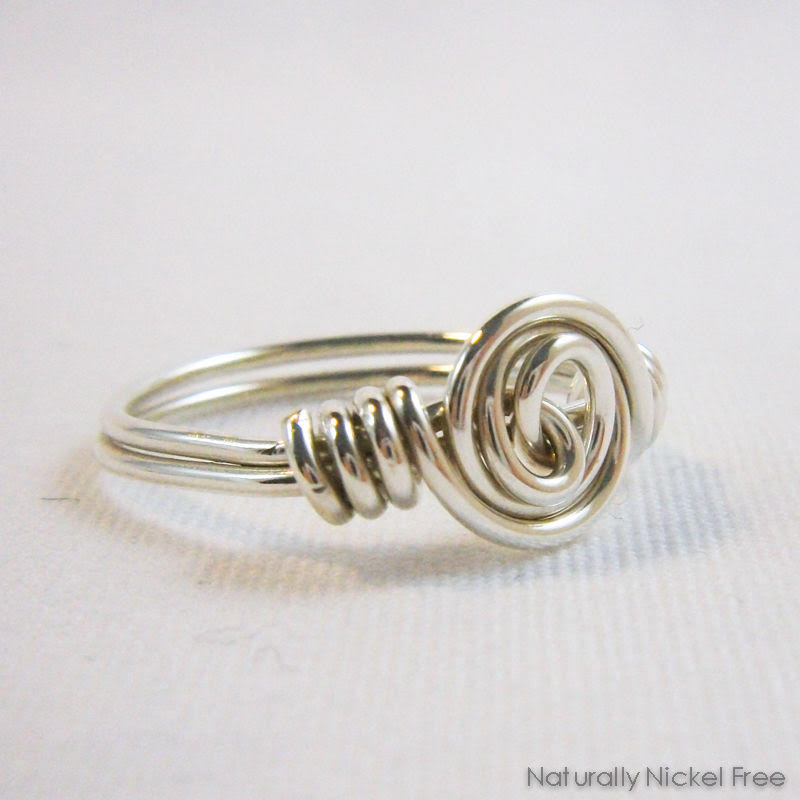 Nickel-free jewelry, handmade by a woman who has a nickel allergy. “My research about nickel allergies began, originally, because I have the allergy. It became really important to me though, when I began to realize how many other people are affected by this painful, but avoidable condition. I began to think that maybe my hours and hours of research, along with years of struggling with the same questions others have, may finally be put to good use. ”
Nickel-free jewelry, handmade by a woman who has a nickel allergy. “My research about nickel allergies began, originally, because I have the allergy. It became really important to me though, when I began to realize how many other people are affected by this painful, but avoidable condition. I began to think that maybe my hours and hours of research, along with years of struggling with the same questions others have, may finally be put to good use. ”
Simply Whispers
 Over 3000 nickel safe and irritation-free styles including watches, earrings, bracelets, necklaces, chains, rings, and accessories made from nickel-free and surgical stainless steel.
Over 3000 nickel safe and irritation-free styles including watches, earrings, bracelets, necklaces, chains, rings, and accessories made from nickel-free and surgical stainless steel.
Glass Food Steamers
A question came to me this week regarding a glass steamer I had suggested back in 2013.
At the time it was the only glass steamer I could find (and it was only available in Canada.
But looking for a glass steamer this week, I found more to choose from. Here’s the list of what I could currently find.

|
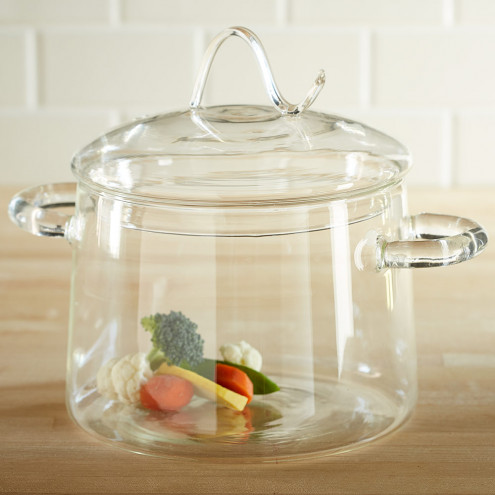
|
Steaming is my preferred cooking method now for vegetables (along with roasting), but I don’t use a separate steamer. I just put about 1/4 inch of water in the bottom of a skillet and turn the heat on high. When the water is evaporated, the vegetables are perfect.
Health Benefits of Love

I received a lovely little article this morning about the health benefits of love.
It made me stop and think if each benefit was true for me. Are they true for you?
1. Enjoy a Happier Life
I definitely am happier when I am with Larry. It’s noticeable to me and to others. A friend just commented on that recently. But not just with Larry. I’m happier when I’m with friends and family and even when I am doing activities that I love. It’s the LOVE you feel that’s important here, I think, not what or who you are loving.
2. Live a Longer Life
I would say this is true for me too. Having spent most of my adult life very happily married, I think that has contributed to my health. At age 61 I have far fewer health problems than other people my age that I know. I attribute that to living a toxic-free life, but also to love.
3. Fewer Colds & Flu
I hardly ever get a cold or flu. It’s been shown that those who have positive emotions are better able to fight off cold and flu viruses. I agree with that.
4. Better Blood Pressure
While I can’t prove this one in my own life, apparently happily married folks have the best blood pressure averages, and unmarried people have the worst.
5. Healthier Eating Habits
Now this one I can verify. It’s much easier for me to stick to good eating habits if Larry and I are eating good food together. It’s also easier to keep those good habits going when you have a partner to help. Those evenings when I need to work and don’t have time to cook, when Larry is with me he can take over the cooking duties and make something simple, delicious and nutritious.
(I trained Larry to cook just for this reason. His cooking used to be pretty funny. Once, many years ago, I was sick so he made “spaghetti with red sauce,” the red sauce being opening the refrigerator and putting alll the red foods in a pot. But now he’s really interested in cooking and is getting pretty good at it. I don’t mind eating his cooking at all.)
Each of these benefits have studies to substantiate them. The studies are all given in the original post:
Cotton Leggings
Question from Bonnie
Hi Debra,
Cotton leggings? Do you wear them and where can they be found?
Thanks.
Debra’s Answer
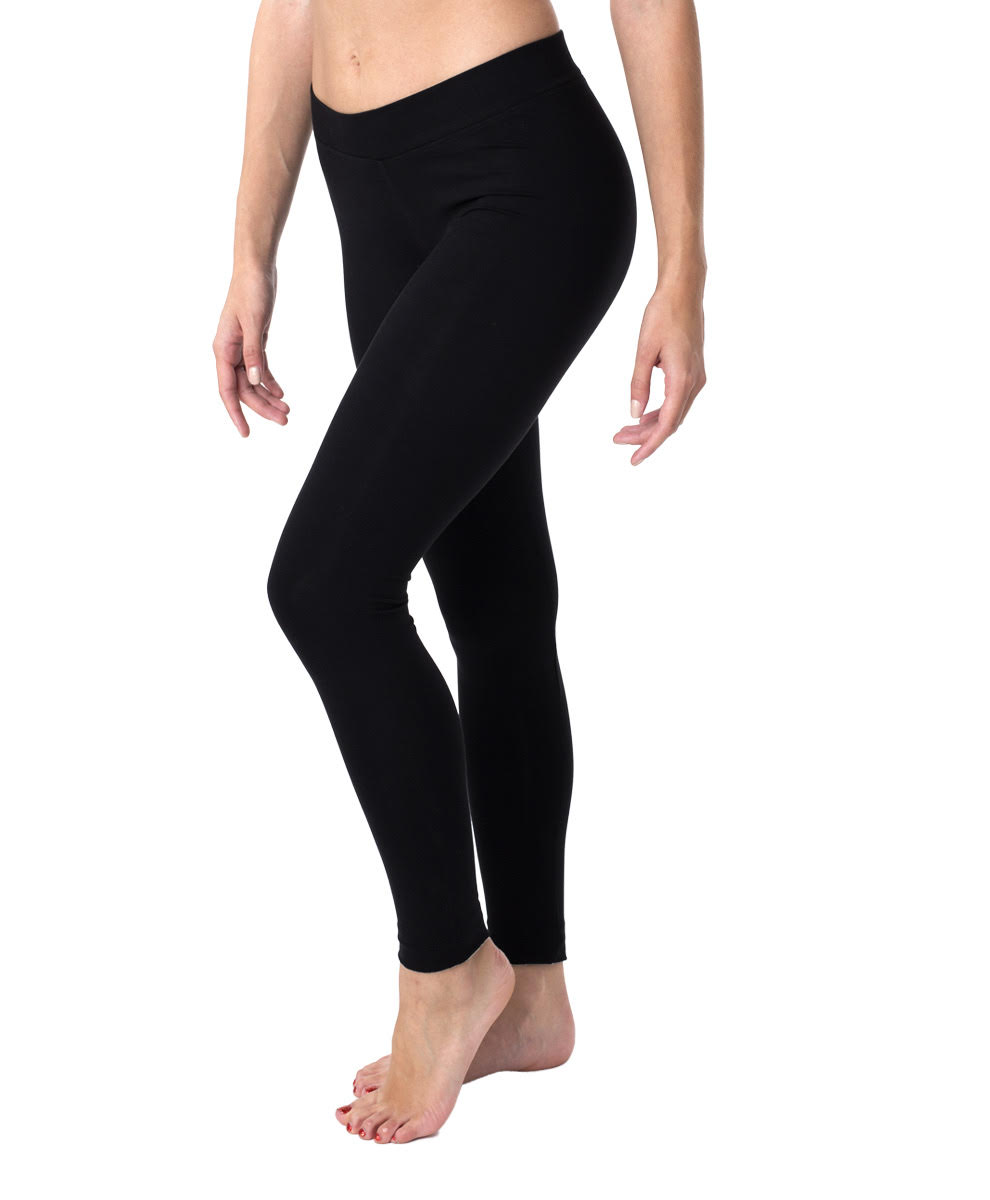 Cotton “leggings” are snug-fitting cotton knit pants. They are usually made from cotton plus elastic, but I found some that are 100% cotton.
Cotton “leggings” are snug-fitting cotton knit pants. They are usually made from cotton plus elastic, but I found some that are 100% cotton.
They are great for exercise and keeping warm in the winter. I don’t wear them because I live in Florida and it’s never cold enough.
I looked for cotton leggings online and found many are blended with synthetic materials—such as Modal and Spandex—in addition to the elastic.
Here are two that contain the most cotton that I could find:
Fair Indigo 100% organic Pima cotton leggings.
PACT GOTS certified organic cotton leggings in black, colors, and patterns (they also have tights)
HUE 95% cotton, 5% spandex
This page online has many “100% cotton leggings” that are much less expensive than those listed above.
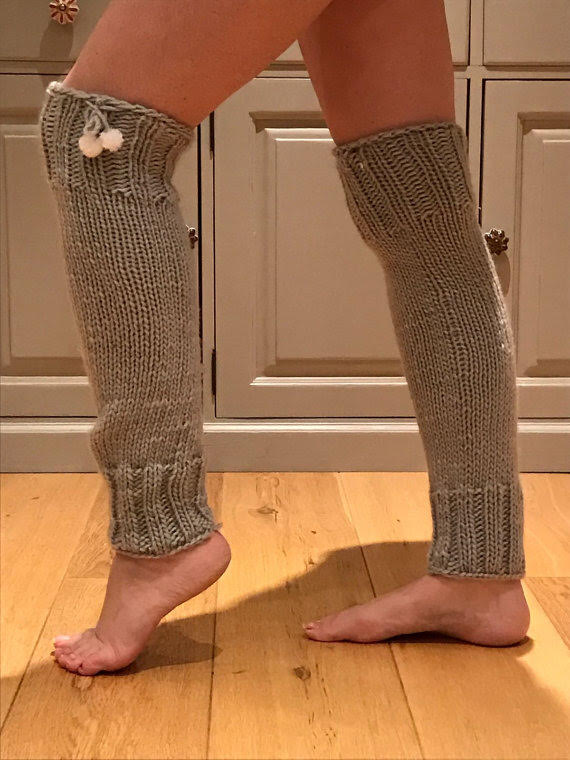 “Yoga pants” also came up in my search for “cotton leggings.”
“Yoga pants” also came up in my search for “cotton leggings.”
Many years ago when I lived in California in the wintertime I wore what we called “leggings” and are now called “leg warmers.” Ballet dancers wear them to keep their legs warm during practice, and we all wore them in aerobics class. Most are made from synthetics and elastic, but these in the photo are made-to-order hand-knitted from cotton. Hippy Headbands Co.
Commuters Using Public Transportation Are Exposed to More Air Pollution Than Commuters Who Drive
 A UK study has found that while motorists produce the most pollution per commuter, those who take public transportation are exposed to much higher levels of pollutants while commuting.
A UK study has found that while motorists produce the most pollution per commuter, those who take public transportation are exposed to much higher levels of pollutants while commuting.
The study measured only particulates, but this indicator shows a volume of pollution that would include VOCs as well.
THE TELEGRAPH: Commuters on Public Transport ‘Exposed to Higher Pollution Levels Than Car Users’
BPA and Rules of Evidence
It’s been known since the 1930’s that Bisphenol A (BPA) weakly mimics the human hormone estrogen. Which means that, for women especially, bodies will accept BPA as if it were estrogen, filling receptor sites with chemicals instead of hormones.
Yet, despite this scientific knowledge, BPA has become ubiquitous in our toxic consumer world.
This article tells just why so many toxic chemicals are allowed and why it’s so difficult to get bans and regulations. This is why it continues to be our responsibility as consumers to change the marketplace by refusing to purchase toxic products.
Cotton Mill
 All cotton clothing without finishes for women and men. Just basic cotton clothing—shirts, dresses, jackets, sweats, jeans and pants—in lots of colors and many different types of cotton fabrics (all fabrics are listed and explained). Some organic cotton, plus sizes, all made in the USA or Canada. Nothing fancy here, just plain cotton clothing. And especially sweatshirts—“100% heavy-weight 18-ounce cotton sweatshirts…built to last a lifetime.”
All cotton clothing without finishes for women and men. Just basic cotton clothing—shirts, dresses, jackets, sweats, jeans and pants—in lots of colors and many different types of cotton fabrics (all fabrics are listed and explained). Some organic cotton, plus sizes, all made in the USA or Canada. Nothing fancy here, just plain cotton clothing. And especially sweatshirts—“100% heavy-weight 18-ounce cotton sweatshirts…built to last a lifetime.”
Vermont Rolling Pins
 Hand turned rolling pins in more than a dozen sizes and styles, each shaped from a solid block of maple, cherry or walnut hardwood. Hand turned with love and made in the USA. All of our woods are made with select, solid hardwoods.,sustainably harvested, and are from a Vermont millworker.
Hand turned rolling pins in more than a dozen sizes and styles, each shaped from a solid block of maple, cherry or walnut hardwood. Hand turned with love and made in the USA. All of our woods are made with select, solid hardwoods.,sustainably harvested, and are from a Vermont millworker.





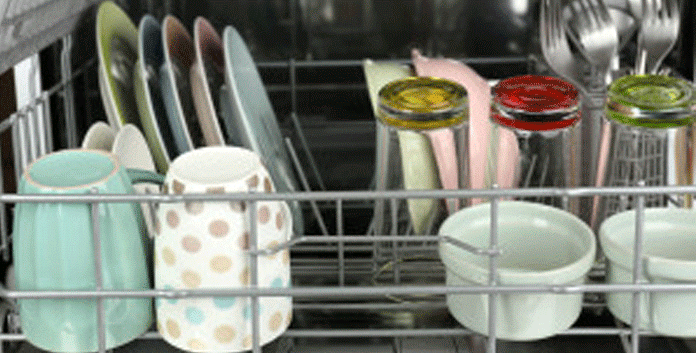
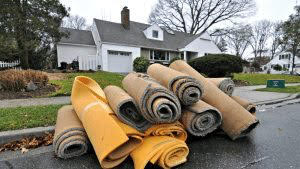
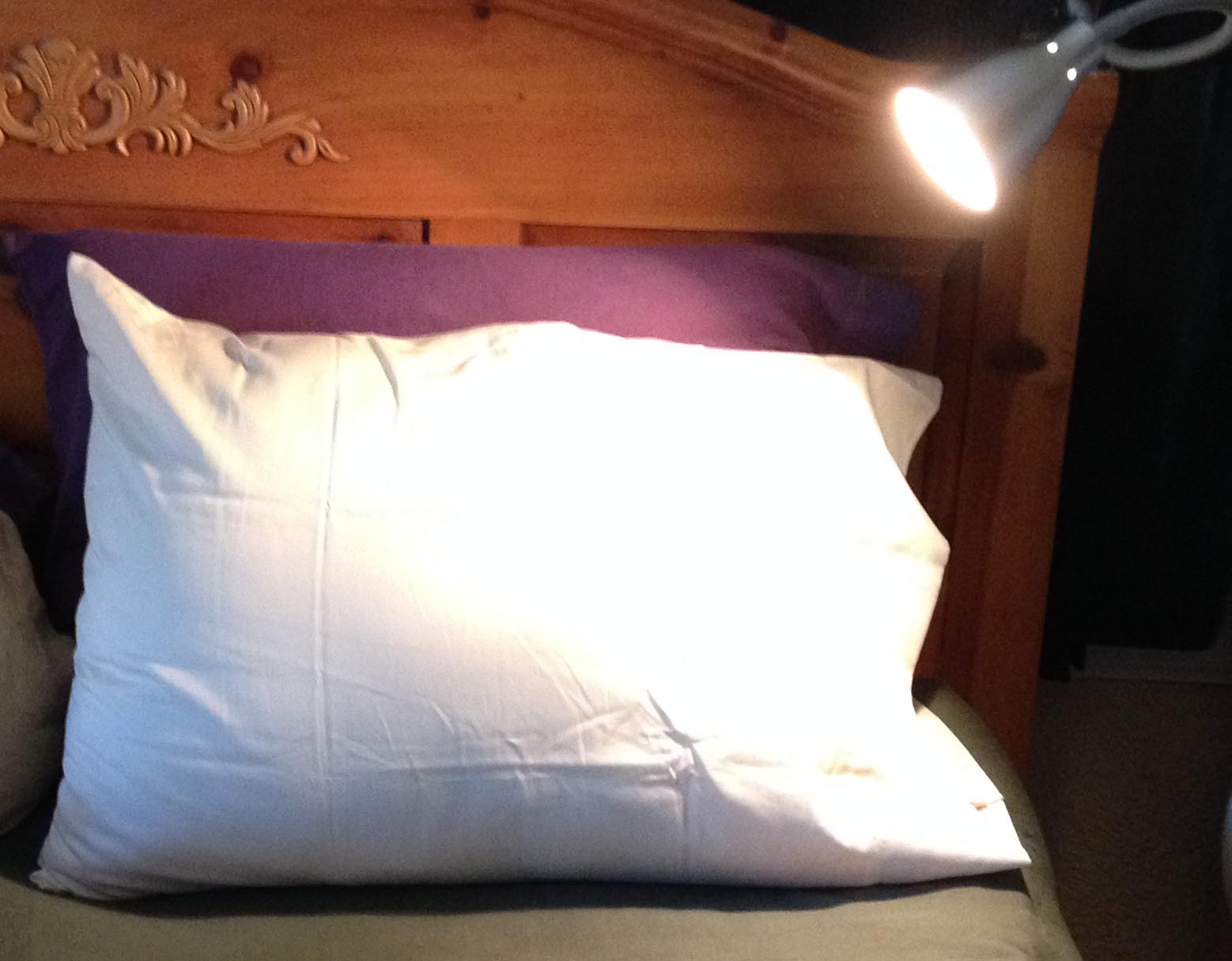
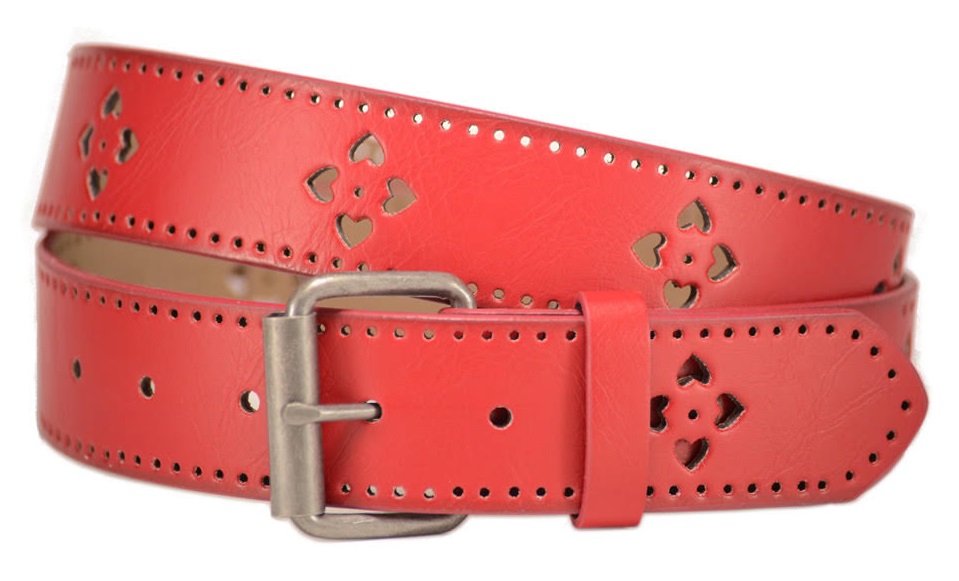 Large selection of nickel-free belts and belt buckles—all styles and sizes.
Large selection of nickel-free belts and belt buckles—all styles and sizes.



